
ISSUE 1/06
3302 Cathedral Music MAY 06 cover 22/5/06 16:15 Page 2
Cathedral MUSIC Cathedral MUSIC
the sound ofa Makin organ
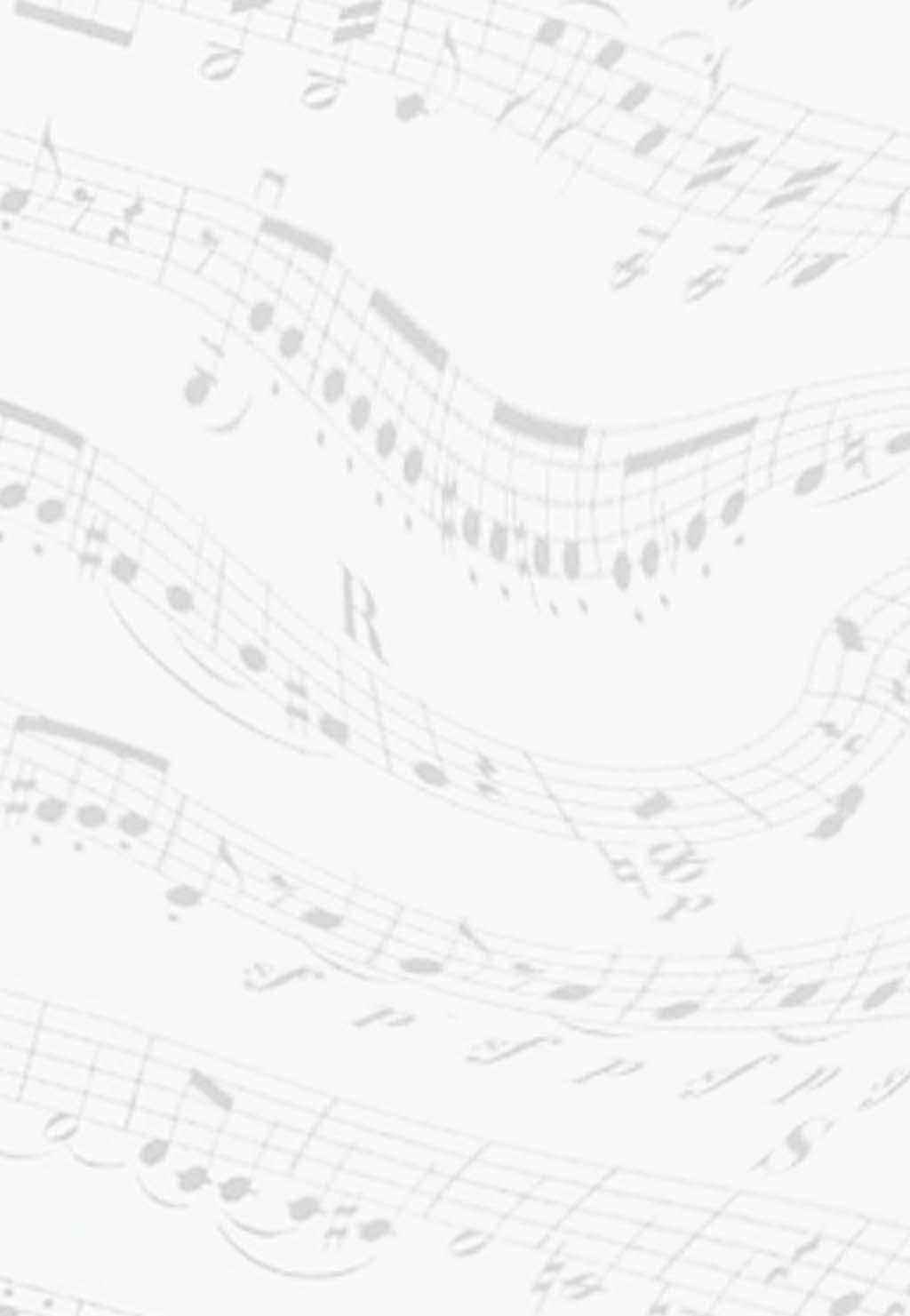
Outstanding quality coupled with the latest digital technology are at the heart ofthe new range ofMakin organs. Unsurpassed realism means that many experts just cannot distinguish between a real pipe organ and our digital models.The low 32’notes producing an amazing sensation thanks to new speaker developments which further enhance the tonal quality throughout the range.
In response to public demand we are proud to announce the development ofa smaller 20 stop organ which has already created a huge amount of interest.This model has all the attributes ofour larger models in build quality and sound reproduction but brings the ownership ofa Makin organ within the reach ofsmaller churches and private buyers.
So whatever model you choose,you can be assured ofour renowned service and quality – don’t invest in a digital church organ until you have heard the realism of a Makin organ.
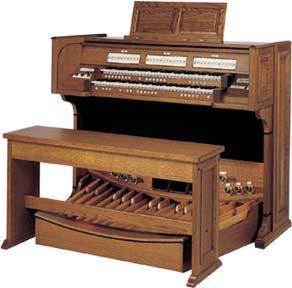


For more details telephone 01706 888100

MAKINORGANS CHURCH ORGAN BUILDERS SHOWROOMSINSHAW, OXFORD ANDDEALERSINAUSTRALIA
Fill your church... ...with
Visit our website at www.makinorgans.co.uk 3302 Cathedral Music MAY 06 v2 22/5/06 16:01 Page 2
Cathedral Music
CATHEDRAL MUSIC is produced twice a year, in May and November
ISSN 1363-6960 MAY 2006
Editor Andrew Palmer
21 Belle Vue Terrace Ripon North Yorkshire HG4 2QS ajpalmer@lineone.net
Assistant Editor Roger Tucker
Editorial Advisers
David Flood & Matthew Owens
Production Manager Graham Hermon
FCM e-mail FCM@netcomuk.co.uk
Website www.fcm.org.uk
The views expressed in articles are those of the contributor and do not necessarily represent any official policy of Friends of Cathedral Music.
Likewise, advertisements are printed in good faith. Their inclusion does not imply endorsement by FCM. All communications regarding advertising should be addressed to:-
Roger Tucker
16 Rodenhurst Road LONDON SW4 8AR Tel:0208 674 4916
cathedralmusic@supanet.com
inQuire Editor Richard Osmond
10 Hazel Grove, Badger Farm, Winchester, Hants SO22 4PQ Tel/Fax:01962 850818
Every effort has been made to determine copyright on illustrations used. We apologise to any individuals we may have inadvertently missed. The Editor would be glad to correct any omissions.
Designed and produced by Mypec
The Old Pottery, Fulneck, Pudsey, Leeds, West Yorks LS28 8NT Tel: 0113 255 6866 info@mypec.co.uk www.mypec.co.uk
Cathedral MUSIC Cathedral MUSIC
Cover Photographs Front Cover Ely Cathedral taken from Palace Green. Special thanks to Bob Jones. Back Cover The Nave at Exeter Cathedral. Photograph © C R A Davies.
The Magazine of the Friends of Cathedral Music CMComment 4 Andrew Palmer Head to Head 5 FCM’s Christopher Robinson and Peter Toyne in conversation A New Model for Children’s Singing in English Cathedrals 10 Benjamin Saunders Forty One Years in the Fens 12 Timothy Storey celebrates Arthur Wills 80th birthday Benjamin Saunders 16 60 Seconds in Music Profile The English Hymnal 18 Michael Tavinor celebrates 100 years of The English Hymnal Impromptu 22 Andrew Palmer profiles Dr Francis Jackson Life Begins at 40 28 Graham Wood Following J S Bach to Lübeck 30 Peter Dyke A Choral Foundation on 5th Avenue 34 Gerre Hancock Notes & Queries 39 Your questions answered Lancelot Canon & Organist 40 James Lancelot tells us his story Festivals Report 2005 42 Roger Tucker Lay Clerks’ Tale 44 Tom Glendinning takes us round the Hostelries in Durham inQuire 46 Richard Osmond Holland/England – Diary of a Short Visit 50 Herman de Kler Letters 54 Your views Book Reviews 56 The latest books CD Reviews 58 The latest recordings Cathedral Music 3 Payment of a
magazine is invited to cover the cost of its production and distribution 3302 Cathedral Music MAY 06 v2 22/5/06 16:01 Page 3
donation of £3 to the distributor of this
‘ ‘ CM Comment Andrew Palmer ’

then modified its advice to say that old organs could be rebuilt and altered, almost to the extent of building a new pipe organ.
Questions were asked in both Houses of Parliament: in the Commons, the Minister for Energy (Malcolm Wicks) and in the Lords, the Parliamentary Under-Secretary at the Department of Trade and Industry (Lord Sainsbury), assured members the UK Government took the view that this Directive should not apply to pipe organs of any kind. The whole affair has been prescription for confusion. DTI officials were not sufficiently au fait with the workings of pipe organs to understand the fine technical details and were confused by the distinction between a wholly electronic organ and a pipe organ with electronic action and electric blower, to the extent they were referring to ‘electronic pipe organs’.
Surely, if civil servants are in a position to apply regulations that affect the future of a centuries old trade then they should at least do some research before they publish this kind of ‘frightener’.
Can you believe it?
Just before Easter the national press ran a story about the imminent demise of pipe organ building due to a European Union (EU) Directive on the Restriction of Hazardous Substances, which aims to eliminate the use of hazardous materials in electronic and electrical goods specifically the use of lead. This is because most organ pipes are made from an alloy of tin and lead. The properties of this metal contribute to the unique tone of most of the ranks of pipes encased in the organ. The alloy is malleable, enabling precise adjustments which determine the ‘voicing’ or sound of the pipes. The Department of Trade and Industry sent out reassuring messages so that many people thought the problem had gone away. Next there was a clarification from the DTI which said that organ builders could repair or restore existing instruments – and it must be stressed that there is no danger to old organs. After consultation with the EU the DTI
The key to settling this is in the hands of the Council of Ministers in Brussels. I resist the temptation to make the usual anti-Brussels bureaucracy comment. Assuming their approval is forthcoming, a number of major new organ projects that are in planning, notably Worcester Cathedral and many private chapels and university colleges will receive the ‘green light’. Let us rejoice that the craft of organ building is not only alive and well but is sufficiently respected to fight back at bureaucratic nonsense of this kind. We must offer congratulations to Katherine Venning (Harrison & Harrison) President of the Institute of British Organ Building (IBO) and her colleagues for taking a strong stand of protest, which has paid off.
50 not out
Devotees of BBC Radio 3’s Choral Evensong will have been delighted that the service broadcast live from Peterborough Cathedral on 29 March marked FCM’s 50th Anniversary. Our late
founder Ronald Sibthorp’s first major cathedral appointment was as Precentor there and he wrote engagingly about it in his book, TheMemoirs of a Minor Canon. FCM’s Roger Tucker, in collaboration with producer Stephen Shipley, arranged with Acting Dean Bruce Ruddock (an FCM member) to give a mention about FCM’s foundation in 1956 by Canon Sibthorp. Canon Ruddock also included FCM in the prayers it is probably the first time that FCM’s history has been mentioned on a national radio network. It is fitting too that in this 50th anniversary year we should be giving away the largest total amount in grants ever. An impressive £250,000 will be given to cathedral music after announcement at the AGM in June. We must find ways to continue developing our influence so as to achieve universal recognition in our field.
Threat to a traditional choir. Another crisis, which has erupted this time right in the FCM’s own field, is the announcement that the Abbey School in Tewkesbury has gone in to administration. We have no details as to why, but FCM has been asked to come to the rescue of the Abbey School Choir which sings on certain weekdays in Tewkesbury Abbey. Watch out for further developments.
Cathedral Music 4
‘Surely, if civil servants are in a position to apply regulations that affect the future of a centuries old trade then they should at least do some research before they publish this kind of ‘frightener.’
3302 Cathedral Music MAY 06 v2 22/5/06 16:01 Page 4
‘Let us rejoice that the craft of organ building is not only alive and well but is sufficiently respected to fight back at bureaucratic nonsense of this kind.’
to Head Head
In this occasional series we get two key people to discuss a relevant topic of the day over lunch. In this FCM 50th anniversary year CATHEDRAL MUSIC Editor Andrew Palmer invited FCM President Dr Christopher Robinson and Chairman Peter Toyne to mull over the issues facing cathedral music and FCM.
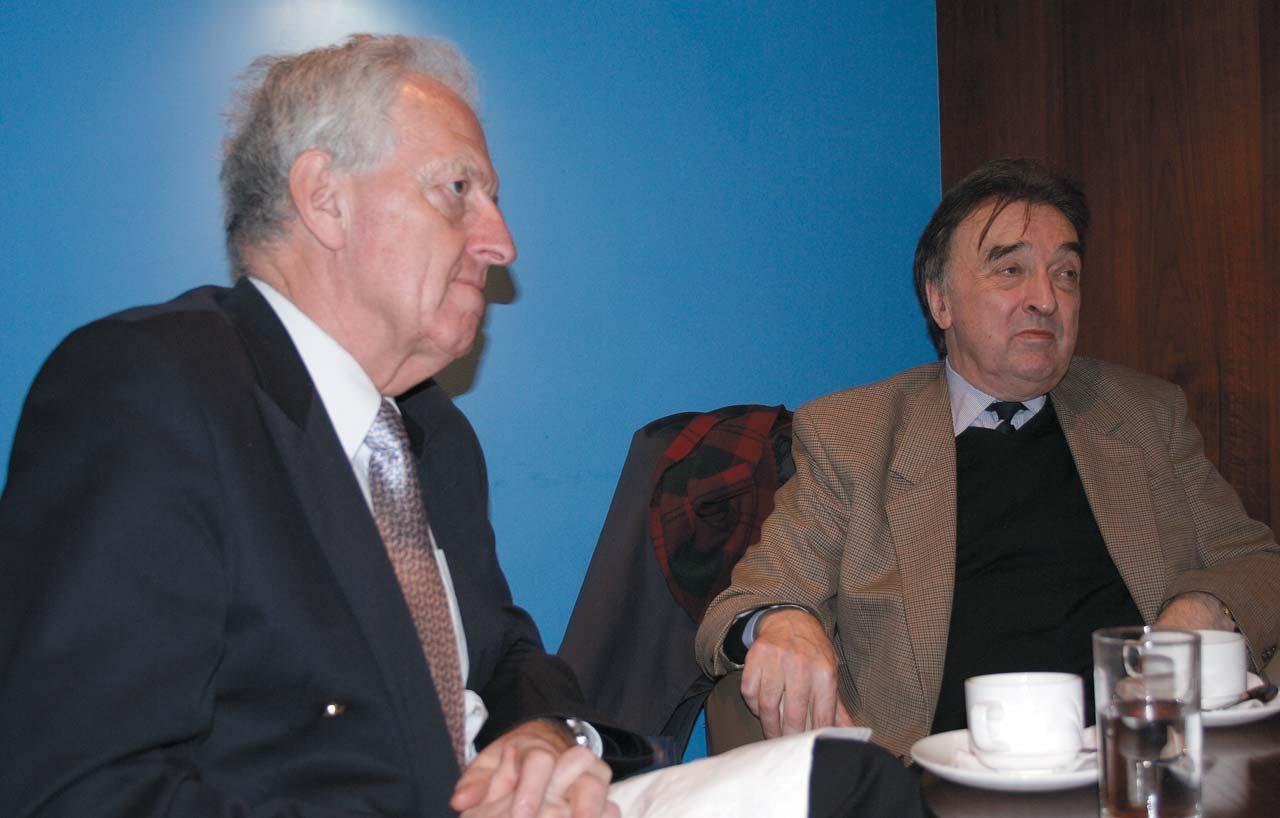
PT Christopher, with your vast experience, organist of Worcester Cathedral, St George’s Chapel, Windsor, St John’s College, Cambridge, and now spending a year at another Cambridge college, Clare, can you give us an insight into the recruitment and funding of choral lay clerks. Especially, as in cathedrals in the 21st century there is considerable cut-back coupled with the ever-growing difficulties of recruiting men for the back row.
CR I would not get too despondent just yet. A number of applicants are still coming through to Oxbridge but there are pressures of course. And these are greater in the academic area, as any applicant has to justify his or her place at the university, usually in competition with applicants from elsewhere, who are
not singers of course. This was a problem George Guest and others had to come to terms with when academic standards became more stringent. He was naturally very fearful for the future but we have survived so far. In the past, King’s and John’s at Cambridge could attract many of the best applicants. With the advent of mixed choirs, colleges like Trinity, Clare and Caius are attractive options and the market has become very competitive. There are now so many scholarships on offer that there are hardly enough suitable applicants to go round. But to say that there is a shortage would be misleading.
PT I am intrigued by this Christopher, because often what happens in Cambridge follows elsewhere. This is being reflected up
Cathedral Music 5
➤ 3302 Cathedral Music MAY 06 v2 22/5/06 16:01 Page 5
‘There are now so many scholarships on offer that there are hardly enough suitable applicants to go round.’
and down the land, certainly looking at the 2006 grant applications and talking with organists. The problem of finding enough people to come and sing in the back row, is increasing. In some of the big provincial cathedrals, they say its partly to do with funding streams in universities. Students are having to fund their way through their education and to get jobs or whatever. In addition, there are problems with their academic work, so getting out everyday to sing is quite hard and a fair number are expressing concern. I believe that is why so many cathedrals are asking for money to help set up or support the back row. If we don’t get that back row in place it is going to be hard in the future.
CR One interesting thing that’s happening which is not entirely new is that a number of cathedrals are now offering choral scholarships to people in gap years. I know several organists who are doing this extremely successfully. Cathedral choirs are starting to look younger which is no bad thing. For young people in their late teens who have not experienced a cathedral choir before, it gives them a feel for what it is all about, as well as training them for Oxbridge awards. This is something you picked up on in the interview you gave to CATHEDRAL MUSIC when you first became chairman, Peter.
PT Do you think this gap year thing is successful because what happens is the character of the choir changes year-onyear?
CR Yes, so you’re having a turnover, something which is actually an enormous advantage.
PT It is! It is!
CR It could mean that the standard of the choir varies from year to year but that can happen anyway. The most difficult choirs to run are those where changes in the back rows are rare. Attitudes become complacent and perfunctory. Some might think that the choral scholar idea just papers over a problem,. Actually, I think it does more than that.
PT Exactly Christopher. The other thing that is interesting is the problem of organ scholars. We have a good number of grant applications which say we often struggle to find good organ scholars, but when we do, the problem becomes one of having something to offer them, a house for example. It’s
interesting because for the first time, I think, in a long while, it has become quite a thing that cathedrals are asking for help with funding organ scholars. I don’t know what your experience in recent times is, but when we were last in Cambridge you said it was quite difficult.
CR Yes, looking back through George Guest’s records I see that there were hundreds of applicants for St John’s. Now the number is much fewer, and for choristerships also. I don’t know what the answer is. For St John’s and King’s or Christ Church and New College, Oxford, and others, you need to be FRCO standard. One would have to say that there are far more organ scholarships available now than in the past In my day, except at my own college, Christ Church, an organ scholar was on his own and was not replaced until he went down. The duties were often arduous and the present system of overlapping not only reduces the burden but requires twice the number of organ scholars.
PT Interesting, but are they of good quality?
CR Well, I have been out of it for a year or two. Happily, I have extremely good organ scholars this year at Clare and I know there are very good people at St John’s and King’s. I think it is probably true to say that there are not quite enough suitably qualified candidates to supply all the colleges and that is a worry. It is also true that a number don’t seek careers in the cathedral world but prefer to look elsewhere. But this is not new. The organ scholar system has produced conductors like Sir Andrew Davis, and among my predecessors at Christ Church were several, notably Philip Cranmer and Ivor Keys, who went on to be university professors.
PT There is nothing wrong with that!
CR Actually, I am sure Thomas Armstrong, the organist of Christ Church, was extremely proud of that. Some of my organ scholars at St John’s have gone into the cathedral organ loft and others haven’t. Those who are cut out for it tend to stick with it, though I can think of one who was unable to find a suitable job who went into school work where he flourished greatly. He is earning a good salary and is unlikely to change course. If he wanted to, this would be difficult as he is now typecast and a cathedral chapter might not imagine that he could be a suitable candidate. This is all wrong.
PT Ah! There is another interesting point there Christopher. I know about this because my son is not an organist but Head of Music in a school and what these guys are doing is raising and maintaining the musical standards in the state system, producing boys and girls for the future and they really are making a difference because if we don’t get the feed from the schools we are really in the mire.
CR Yes, there are really good choirs in these schools but there is a problem even in so-called boarding schools. Here they tend to send pupils home at the weekend which means that if you want the choir to sing in Chapel on Sunday they are not captive in the same way as they used to be. But I think directors of music find their way through this. I think a lot of these schools, especially the co-ed ones, have very good choirs indeed.
PT Now that’s a fascinating one because often in the media
Cathedral Music 6
3302 Cathedral Music MAY 06 v2 22/5/06 16:01 Page 6
‘For young people in their late teens who have not experienced a cathedral choir before, it gives them a feel for what it is all about as well as training them for Oxbridge awards.’
you get disparaging remarks about the standard of music in schools, about it all being let go and I don’t get that impression at all. There’s some really good stuff going on.
CR I suppose the schools I am talking about are mainly in the independent sector. There is no reason whatever why music should not flourish in state schools provided that prejudices about elitism can be cut through. The sad fact remains that few of them provide the sort of training necessary for an aspiring choral scholar.
PT I wish my son was here because he would take you up on this, being Head of Music at a state school. He would say they have arts college status and they are actually doing good work. It can be done if the state schools have a mind to it.
CR I think I have just said the same thing. With the right person in charge, you get over the political objections but there are forces working against it, I think.
PT Going back to what you said about cathedral chapters, what can FCM do? We can educate them but is that a role Friends of Cathedral Music should be taking up?
CR I think that is very important. When I first started to think about this head-to-head, Peter, I looked up the word ‘friend’ in the dictionary and it gave: ‘sympathiser’ and ‘patron’, apart from the obvious definition: ‘someone who is not an enemy’. So does cathedral music have any enemies and if so who are they? I asked myself that question. Potential enemies, to put it gently, are people who do not know about it. So I think going back to the interview you gave to Andrew Palmer, you said you were trying to make sure that clergy know about it from the theological college upwards.
PT And there is a long way to go. It’s a major thing.
CR Something very interesting used to happen at St George’s, Windsor, where they housed a conference centre. In my time there were two clergy courses a year, one in January and the other July, when a group of clergy from various persuasions and backgrounds used to come for a month of seminars and lectures while living the daily life of the chapel with us. The choir would be on duty for Evensong each day and the delegates would be there. I enjoyed sharing the daily office with a new group of people. I began to get feedback when they invited me and my wife for dinner. I soon heard what they thought of it all and particularly from those who wanted to be more vocal at services. As the weeks passed they began to settle down, come to terms with not being ‘in charge’ and learnt to relax and participate quietly. Most were converted and this proves the point that ignorance is our most important hurdle to overcome.
PT It is that, isn’t it? Hearts and minds and having people open their minds. Sometimes they turn off before they start.
One of my worries, and it is a serious concern, has been the Cathedrals Measure. This has put in place extended chapters with lay people having been put on them, usually by their diocesan bishops, to bridge the diocese to the cathedral. And in a very large number of places the people who they put on have no understanding of what the cathedral is about and certainly not its music. Many of them are often strongly evangelical and that’s very difficult, even when you have a dean who wants to invest and continue to invest This is borne out in the grant applications where it is obvious that there are cutbacks in the music. We should all be worried.
So we have a significant role here about educating or perhaps that is too strong a word. It’s getting people to understand how to be affected by the still small voice of calm on a Tuesday night in January or February.
CR That’s very interesting. A year or two back I was doing a review of the music department of a cathedral where the lay clerks were unbelievably badly paid. The Chapter Clerk who was obviously responsible for the finances, asked “Are the lay clerks good value for money?” “You must be joking,” I replied. Happily this situation has been sorted out.
PT ‘Value for money’, when you don’t pay them anything anyway? Many of the cathedrals now have people saying: “Can’t we cut back?”, “Is it value for money?” or “Can it be reduced?” It’s not fair to put it that way totally but you can understand the financial problems they have: fabric, staff costs, pensions, health and safety legislation. In one sense it is an easy target to say “just look at how much this choir is costing, can’t you manage with a few less in the front row or lose a couple on the back row as that that will save us something?” Once that starts it’s real erosion.
CR So how will the future funding of cathedrals be managed and how should they be doing it?
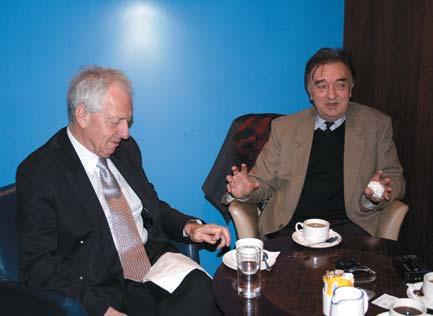
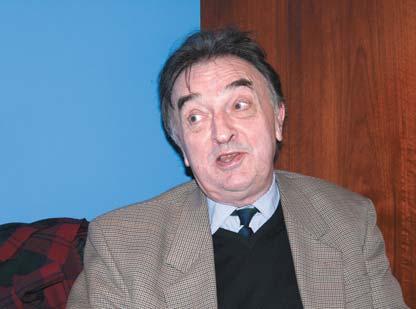
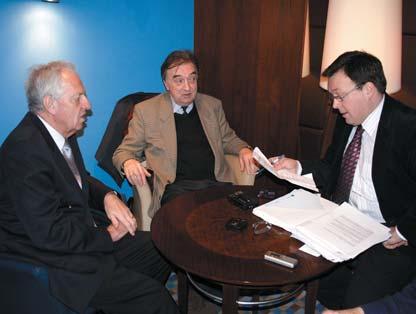
PT I know of one cathedral where the D&C said “We are not going to cut back on this and we will just find the money” but they are few and far between.
CR Perhaps the answer lies in private sponsorship. There are two cathedrals I know of that have been thinking creatively around corporate sponsorship. I don’t have chapter and verse on this.
PT There are quite a lot, it is a mixture of private sponsorship, appeals, legacies, endowments and so forth and many are fairly standard sponsors of choristers. In the grant applications two have applied where they are thinking out of the box and come closer to getting corporate sponsorship. Rochester, for example, has a scheme where one can sponsor a week of music - it will cost £10K in perpetuity - like floodlighting a cathedral. Some say “Do it for a day”, that kind of radical thinking, is approaching commercialism and some ➤
Cathedral Music 7
3302 Cathedral Music MAY 06 v2 22/5/06 16:01 Page 7
will say this is disgraceful, having ‘sponsored by Tesco’ on the service sheets.
Of course, paying the piper and calling the tune some prefer not to fight a battle of that sort. It would help the pressure if it came out of an organisation like FCM.
Say, if FCM gets big firms to invest money in our organisation we can then sponsor the music.
CR That’s very clever.
PT Neat isn’t it?
CR Probably the cathedrals that really believe in it will get the money, is that right? It goes back to making sure that the clergy understand.
PT That begs the question about cathedrals that believe in it. The commitment is there. Who is going to do the banging of the drum and show that enthusiasm? Now clearly, the good organist, choirmaster or director of music is absolutely vital in that and this tells you something about their character. But unless you have a really good dean who is prepared to go out and talk to people and really enthuse about it, can it work? And it is this aspect that is a real issue I’m sad to say.
CR I am surprised in a way, the more evangelical people are slightly hesitant about the whole thing anyway.
PT Yes, because they would like rather more congregational participation anyway – you know the thing, Taizé-style rather than traditional-style repertoire. It can go hand-in-hand and that’s why you see it by having a traditional Evensong followed by an informal worship service.
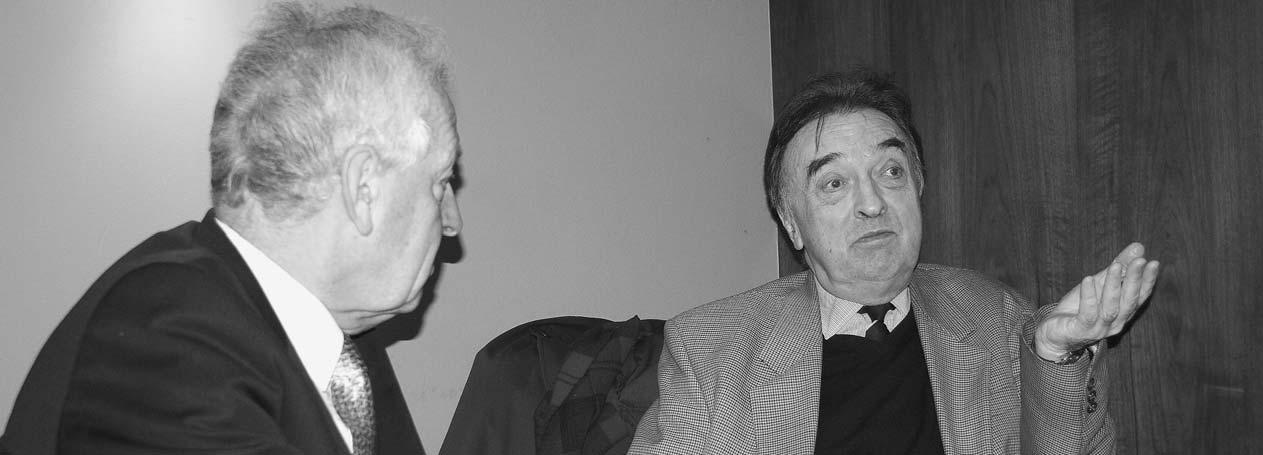
CR We’ve all got to be prepared to move with the times in that way.
PT How would that work now Christopher?
CR That’s a hard question to answer. Put it this way. I have seen a lot of changes during my career and some caused consternation at the time. FCM members will have bemoaned the demise of Sung Mattins, for example. On the one hand a tradition seemed to be under threat but, on the other, some precious extra rehearsal time became available. Another more serious issue was the closing of choir schools which were no longer sustainable. We have to survive changes and setbacks, don’t we?
PT I’m with you.
CR It doesn’t really answer your question.
PT Oh, but it does, because it is a really difficult one to answer. Let me give you an example of this kind of change, which has been controversial in some quarters but which we have now come to accept. Take the Sung Eucharist, it has now become the focus and is commonplace. I remember the days, certainly when I was serving in Exeter, when we had everything in there, including sung Creed. How often now do you hear it sung anywhere today? That is one major chunk of how music has died: an anthem might be replaced by a congregational song and these are variations we have to endure.
It begs the question: ‘does the FCM have to move with the times?’ Could we be too set in our ways?
CR We have to be defensive to a degree but things will happen which we cannot prevent and sometimes have to accept. A little open-mindedness goes a long way, even with directors of music. Too many people have entrenched positions.
PT However, Christopher, I have been heartened by what I have seen – a pragmatism and a change of attitude - certainly in respect of girls’ choirs – where there are some members who do feel very strongly about it – and understandably so. Actually we have set out our stall, where we do support girls’ choirs and we raised it openly at the AGM earlier this year and our membership is pragmatic and open, because they want the music to develop, rather than survive, so you have to do things to promote that.
I don’t want to put you on the spot on this but what I do think is worrying is the tendency to appoint people to senior positions at a young age, which means they are likely to be there for a long time. I rather regret this because one of the great things that has happened in the past has been people moving, just as you did, Christopher.
CR I was appointed to Worcester in 1963 having succeeded Edgar Day as assistant six months earlier. Edgar had held this position for 53 years so Douglas Guest lost no time in providing his young successor with challenging opportunities so that he could devote more time to supplementing his modest income elsewhere. When Douglas was appointed to Westminster Abbey, Dean Milburn promoted me, much to the dismay of many older colleagues who would have liked the chance to apply.
These days all posts have to be advertised and it was my good luck to escape the ordeals which applicants now have to
Cathedral Music 8
3302 Cathedral Music MAY 06 v2 22/5/06 16:01 Page 8
endure. I was never much of a self-publicist and consequently was never appointed to a post I had applied for. There were a few! After twelve or so happy years at Worcester, several opportunities for a move were mooted, culminating in the offer of an interview at Windsor. It would probably have been bad for me and bad for Worcester if I had stayed there for ever.
PT What can we do to support organists who have been in place a long time?
CR Give them a sabbatical and send them off to watch others at work. But there must be a willingness to learn. You know Peter, scarcely a day passes when I don’t learn something about training choirs. When I was at St John’s, visitors came regularly to attend rehearsals. This could backfire if things did not go well but everyone learns from mistakes, your own and other people’s.
PT So in our 50th anniversary year, how is the organisation looking?
CR A few years ago we were perhaps seen as elderly and amateurish, rather like a lot of organisations in those days. We have a much more professional front now and pay particular attention to publicity, which is excellent, as is our magazine CATHEDRAL MUSIC. That side of the work is tremendous and we must continue that professionalism and grow in membership.
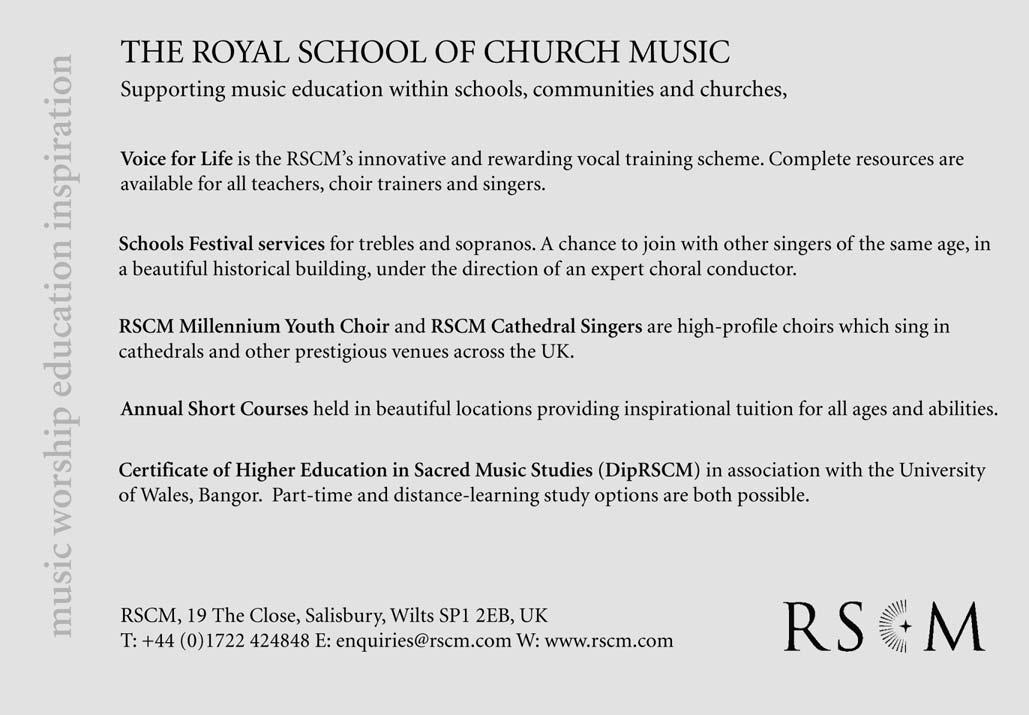
PT Yes, our publications are good. There’s something, though, that I can’t just put my finger on. It’s not just about being there and banging the drum, it is trying to find some innovative things we can be promoting such as raising funds
and a drive to recruit more international members to support the role of cathedral music in the UK. We need to continue doing what we have been doing very well but we do need more money because the number of applications for grants this year tells you about the scale of the problems.
CR Could we start talking with the big corporates to persuade them to invest money? That way all cathedrals can benefit and a big corporate does not necessarily have to support one cathedral, we can be the conduit for such funding then and it avoids the sponsorship trap.
PT Yes, I like that Christopher.
CR We could also look at doing something different to raise the profile of FCM. I wonder whether we could commission a biggish anthem with separate sections for boys’ choir, girls’ choir and maybe congregation. This will demonstrate that we are not just a pressure group to preserve the status quo, but also ready to support and encourage new initiatives.
PT Developing the status quo, I love that, it’s a lovely thought.
CR Yes, but we must take care never to endanger our precious heritage. We have to educate the clergy to appreciate just what it is that we represent. The Dean of St John’s used to tell new undergraduates to “come to Evensong to hear the best choir in the world! It is as good as a gin and tonic.”
PT Cheers to that and thanks for being such a supportive and enthusiastic president.
Cathedral Music 9
3302 Cathedral Music MAY 06 v2 22/5/06 16:01 Page 9
A new model for children’s singing in Cathedrals English
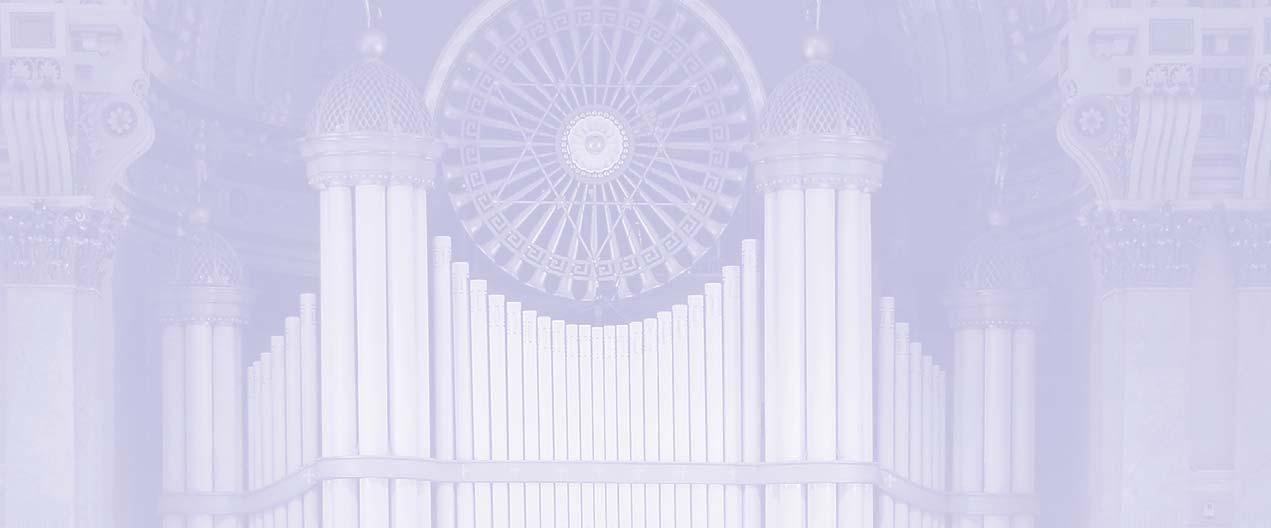

Cathedral Music 10
3302 Cathedral Music MAY 06 v2 22/5/06 16:01 Page 10
Benjamin Saunders
Director
of
Music,
Leeds Cathedral
The Cathedral Choirs in concert at Huddersfield Town Hall. All photographs taken by and courtesy of John Bertalot.
At the heart of Yorkshire’s biggest and busiest city, Leeds Cathedral provides a peaceful spiritual refuge. It is also one of the finest examples in this country of Edwardian Arts & Crafts Architecture. The eminent architectural historian, the late Patrick Nuttgens, described it as ‘one of the best of all the Catholic cathedrals in the country, and probably the most outstanding after Westminster’. It was built at the turn of the last century and was largely paid for by the poor Catholics of the Diocese, who raised the equivalent of £10 million in today’s money.
At the beginning of August 2005 the Cathedral finally closed to allow a £2 million programme of major internal repairs and restoration work to begin. Today, the building can be found surrounded by portakabins, earthmoving machines and cement mixers. The Cathedral congregation has relocated temporarily to Holy Trinity Anglican Church, where the daily liturgies are maintained for the city’s large Catholic population.
Since its foundation in 1904, the Cathedral has enjoyed a fine tradition of liturgical music based on Gregorian chant. Historically, this was led by a large choir of boys and men, singing the chant largely from memory. After the Second Vatican Council (1962-64), music in the Roman Catholic Church faced a number of serious and new challenges. Regrettably, with one or two exceptions, the quality of Catholic church music in England sank to new depths in the immediate aftermath of the Council, when congregational participation and populism became the watchwords.
In 1988, the then Bishop of Leeds, David Konstant, took steps to address this decline with the appointment of a professional musician to form a new boys’ choir. The first Director of Music was Joseph Cullen, appointed in 1988, andwell known nationally todayas the chorus master of both theLondon Symphony Chorus and the Huddersfield Choral Society. He took up a similar post at Westminster Cathedral in 1993 and was succeeded by Stuart Thompson,who established the first girls’ choir in a Catholic cathedral.
Today, the Diocese of Leeds has developed one of the fastest growing and largest programmes of choral music for young people in the United
Kingdom. It includes two boys’ choirs, three girls’, and a professional adult choir, with eighteen choral scholars. During the past 12 months the choirs have broadcast seven times on BBC Radio including Choral Vespers live on Radio 3 for the election of Pope Benedict XVI, and Midnight Mass on Radio 4. They have also produced three commercial CD recordingsand attracted record audiences to lunchtime concerts at Huddersfield and Leeds Town Halls.
Singing in Schools
At present there are three full-time and four part-time members of the music department staff. The choral programme is on a larger scale than other UK cathedrals because the Director of Music is also responsible for liturgical music in the 98 schools of the Diocese. This large geographical area includes Leeds, Huddersfield, Wakefield, Harrogate, Halifax and Ripon. Bradford and Keighley have enjoyed special musical provision since 2003 when a consortium of local high entered in to a funding partnership with the Diocese to offer an exceptional level of choral provision for their students. The Assistant Director of Music, Christopher McElroy, carries delegated responsibility for the delivery of this unique programme. Special school choirs benefit from timetabled rehearsal slots during the normal school day – much like at a cathedral choir school.
In addition to the school choirs, Christopher McElroy founded a Bradford Boys’ Choir in February 2005. Eighteen boys rehearse weekly after school and have already made a first CD with the choirs at Leeds Cathedral. In

May they are looking forward to performing the Berlioz Te Deum at Leeds Town Hall with the Royal Liverpool Philharmonic Orchestra, under David Hill.
Future plans at Leeds Cathedral
The Bradford schools programme operates independently from that of the Cathedral. Currently the four cathedral choirs are preparing for the challenges of the reopened building in November 2006 when they will have to sing ten services between them each week. The choirs (and choir directors!) will operate on a rotation basis, singing Choral Vespers and Mass every weekday (except Friday) alongside the two principal Sunday services. Two new Latin settings of the Magnificat have been commissioned from Colin Mawby, forming the centrepiece of the musical celebrations in November.
It is a sad fact that many English cathedrals now struggle to fill chorister places, and choirmasters invariably cite the general deterioration of singing in schools as the underlying cause. As a response to this challenge, the music department in Leeds Cathedral has chosen to take over responsibility for a large part of the music curriculum within the schools of the Diocese. A well-resourced programme and generous funding partnership has laid strong foundations for future generations and today every cathedral chorister place is oversubscribed by talented applicants.
For further information about Cathedral and Diocesan music, please visit the website www.leedscathedral.org.uk
Cathedral Music 11
3302 Cathedral Music MAY 06 v2 22/5/06 16:01 Page 11
The new Bradford Boys’ Choir with Director Christopher McElroy and Assistant Caroline Robinson
41 Timothy Storey in the Fens Forty-one years
Anniversaries are upon us with a vengeance this year, not just Mozart’s 250th birthday but also the deaths of Clemens non Papa, Michael Haydn, Bainton, Finzi, Oldroyd and (if you stretch things a bit), Bairstow, Darke, Whitlock and Wood. Drs Harry Bramma and Christopher Robinson will celebrate their seventieth birthdays, and, last but by no means least, Dr Arthur Wills will be eighty in September, though his energy and enthusiasm are those of a man at least ten years younger. His memoirs Full with Wills are due to be published soon (by Pen Press – order via Amazon), and FCM Members should make sure of their copies; here is something to be going on with meanwhile.
From his earliest years he has had a happy knack of being in the right place at the right time, for his singing of a solo at his junior school in Coventry led to an invitation to join the local church choir where he had his first lessons on the organ. During further study at St Mary’s, Warwick, he gained the FRCO diploma and came to the notice of Dr Sydney Campbell, who in 1948 secured for him the Society of the Faith Scholarship (£100) which paid for a year’s study at the RSCM’s College of St Nicolas in Canterbury, a year that was the foundation of his career. Singing lessons for aspiring church musicians were as much part of the curriculum as choir-training and organ-playing, and he developed (in James Bowman’s words) ‘not a bad tenor voice’. Then came Campbell’s appointment to Ely Cathedral in 1949. A Mr Bean had been the assistant organist, but (as Dr Wills relates) ‘Sydney simply informed the Chapter that he was bringing me as Assistant Organist/Tenor Lay Clerk so Bean became a hasbeen. Cruel, but crucial for me!’
Ely had enjoyed a succession of distinguished organists including Basil Harwood, Thomas Tertius Noble, Hugh Allen
and Noel Ponsonby, but none stayed very long, leaving for better prospects elsewhere. Dr Marmaduke Conway, Campbell’s immediate predecessor, had lasted rather better; he had been at Ely since 1931 and was retiring somewhat before his sixty-fifth birthday. His book Playing a Church Organ1 suggests that ‘some small private means’ were essential for an organist, so perhaps he had not been solely dependent on his salary. Little had been done to the famous Harrison organ since its construction in 1908, but there was no money for a restoration. The closure of the small non-residential choir school was another sign of the general shortage of funds, for there seemed no future for such establishments, unless money could be found for them to be enlarged to include nonchoristers and thus be able to offer the broader curriculum that was now being demanded. All choristers admitted after 1949 would be boarders at the King’s School, and a certain John Pryer was among the first intake, James Bowman followed shortly after.
Dr Campbell ‘upon his arrival [at Ely]… had a choir of the remaining day-boys plus a number of children. This choir developed well.’2 The Organist remained upstairs in his loft and did most of the playing himself, as was the norm in those days, with his assistant relaying a beat if necessary and improving the vocal tone of the tenor line, such that Campbell was once moved to comment that the men on Arthur Wills’s side of the choir sounded like King’s whereas their colleagues opposite were more reminiscent of Westminster Abbey, not a compliment in those days! Another useful addition to the regular men was one of the vergers, a fine baritone, rather wasted on verging. Both James Bowman and John Pryer (now Organist at both Birmingham Oratory and Alexandra Palace) remember this as a happy time, for the boys liked Campbell and admired his playing.
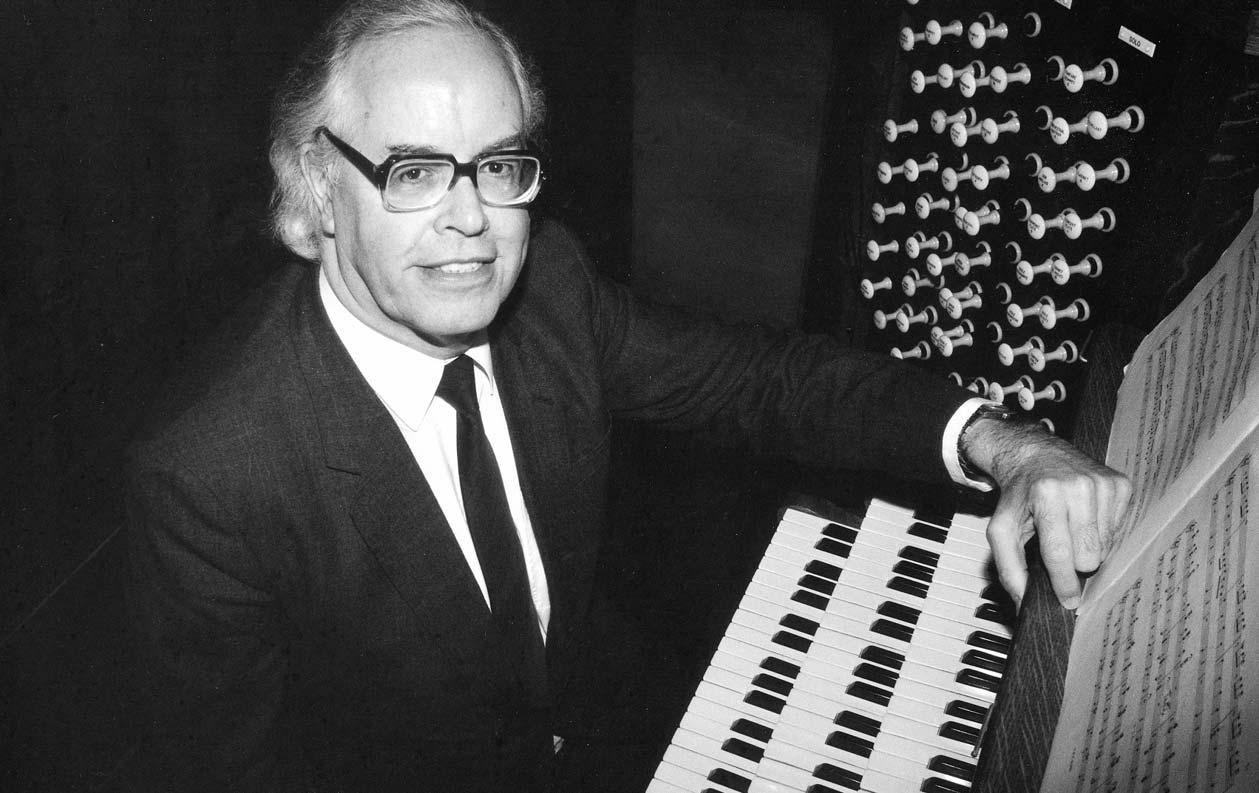
Cathedral Music 12
3302 Cathedral Music MAY 06 v2 22/5/06 16:01 Page 12
However, ‘in 1953 Campbell had become disturbed by the then-current suggestions that English organists played the works of J. S. Bach and other composers in the wrong way upon the wrong kind of instrument. This led Campbell to return to London as Organist of Southwark Cathedral…’3 His successor was Michael Howard, a very different character, who had been shortlisted for the post in 1949 but had by his own admission talked himself out of the job.4 His Renaissance Singers had won considerable acclaim for their concerts, recordings and broadcasts, and his enthusiasm for what is still generally called Tudor Church Music appealed to Patrick Hankey (Dean 195070); the result was a very austere repertory. Howard set out to ‘revoice’ the choir, creating a distinctive sound which is preserved on an Argo recording Music for the Feast of Christmas, surely worth re-issuing as a CD. It must be said that his rather rose-tinted autobiographical view of those years5 is somewhat contradicted by James Bowman, who says that Howard was often the worse for wear, shouted at the boys and replaced all the music that they loved singing with boring things such as Child in E minor. They much preferred Wills, who took them on Mondays and did most of the serious rehearsing for the week. Furthermore, Howard was not as good an organist as Campbell, and increasingly let his assistant take over the playing while he conducted the choir.
Howard’s personal problems and chaotic private life led to his departure from Ely in the summer of 1958, and once more Arthur Wills was the man in the right place at the right time with the right experience. He was by now a Doctor of Music of Durham University, and had also gained the ADCM, administered by the RSCM, which it was then hoped would become the essential qualification for cathedral organists.6 He had been assistant to two talented though very different organists, both of them great enthusiasts for the French Symphonic organist-composers; and despite Howard’s disdain for his predecessor’s work there are recordings of Campbell’s choirs at Canterbury and Windsor, later in his career, which suggest that he too was a choirmaster of some ability. So began Arthur’s thirty-two years as Organist after his nine years as assistant, a total of forty-one years in ‘the great ship of the fens’ and a record unlikely to be equalled let alone surpassed in the twenty-first century. So also began his series of compositions, first for organ and choir to fill in gaps in the Ely repertory and then for a huge variety of forces both vocal and instrumental.
Howard’s autobiography includes7 an Ely service-list for March 1957, presumably a typical example of his musical preferences. There is a little of Crotch, Goss, Sterndale Bennett, Walmisley and S. S. Wesley, some Boyce, Travers and King from the eighteenth century, and a solitary anthem of Purcell. Wood is the sole representative of the late Victorian and Edwardian school (the C minor Evening Service and the Communion Service in the Phrygian Mode), and from the twentieth century we have Harris in A minor (a ‘Monday piece’ if ever there was one) and O taste and see (Vaughan Williams), neither of them ‘modern’ in any sense at all. Everything else is ‘Tudor Church Music’ or ‘stone age’ or whatever you care to call it. This had become the accepted Ely taste, and it survived for a number of years, being exemplified by the contents of a well-regarded 1964 recording of the choir; a more durable legacy was the singing of the Office Hymn to plainchant, an innovation of Howard’s steadfastly maintained by Dr Wills, on whose style it has been a major influence, most obviously in the 1975 Magnificat and Nunc Dimittis on Plainsong Tones
Two of his earliest compositions, the Communion Service for ATB (1958) and its companion Evening Service from the following year, fulfilled an obvious need and are sung in many
establishments. They are brief and austere, well suited to the then-current ethos at Ely. The other work composed in 1958 is totally different, warm and romantic in style and not a little reminiscent of Duruflé’s Requiem, then little-known in England, which the Ely choir had performed in the King’s Lynn Festival the previous year. The Communion Service in D (Missa Eliensis) became, with Darke in F and Jackson in G, one of the three most popular settings of the mid twentieth century, not too difficult for a good parish choir and offering a style more up-to-date than Stanford or the antiquarian pastiches such as Ley in E minor and Wood in the Phrygian Mode that lay within the tasteful grey covers of the Faith Press’s publications. Similarly French in
PEACE ON EARTH
byOrlando Gibbons
Truro Cathedral Choir
The silver swan,Song 1, Almighty and Everlasting, Great Lord of Lords Song 46,Prelude,Hosanna, Nay let me weep,Record of John
O Thou the central orb,Ground, Oh God the King,Oh Lord in thy wrath
What is our life,Pavan,Song 44, See see the word
Sounds of F Sounds of other other ingha ingha y y Malcolm Archer plays the organ at St Mary and All Saints Church, Fotheringhay
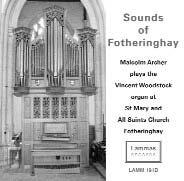
Sonatina in D minor, Ritter. Voluntary in D major, Voluntary in C major, Travers Four movements from Messe pour les Couvents, Couperin Variations on Unter der Linden, Sweelinck
Ciacona in E minor, Chorale Prelude on Ein feste burg, Chorale Prelude on Komm, heiliger Geist, Buxtehude Fugue (a la Gigue) in G major, Chorale Prelude on O mensch, bewein, Prelude and Fugue in E flat - St. Anne, Bach
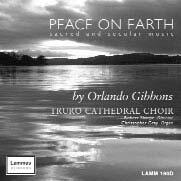
Cathedral Music 13
‘Howard’s personal problems and chaotic private life led to his departure from Ely in the summer of 1958, and once more Arthur Wills was the man in the right place at the right time with the right experience.’
Lammas RECORDS CHORALAND ORGAN MUSICOF DISTIINCTION Order direct from: Lammas Records 118 The Mount, York YO24 1AS Tel/Fax: 01904 624132 E-mail: enquiries@lammas.co.uk www.lammas.co.uk Distributed by: Discovery Records Tel: 01380 728000 Fax: 01380 722244 Griffin and Company Ltd Tel: 01524 844399 Fax: 01524 844335 LAMM 190D LAMM 191D CDs price £13.99 each including p & p Send for our latest catalogue and offers ➤ 3302 Cathedral Music MAY 06 v2 22/5/06 16:01 Page 13
style, though the voice is that of Jean Langlais, is the 1960 Missa Brevis for unison voices; by contrast, the Missa Passionis Christi for SATB (1961) returns to the austere unaccompanied syllabic style of the earlier settings for men’s voices.
One marvels at his industry, for at this time he was also Director of Music at the King’s School, where incidentally he gave James Bowman (then in the sixth form) his first solo engagement. Wills in D (Evening Service) dates from 1962, and The praises of the Trinity from 1964. A steady stream of organ music began to be published by Novello, moving Sydney Campbell to a gentle dig at his old pupil: ‘Arthur Wills has written many pieces (some quite rousing) which are always colourful and often are worthy English/French Toccatas. A composer’s mind? Well, the Doctor has enviable facility, a lightning grasp of things, and thinks nothing of improvising something worth-while at a moment’s notice, always quite unacademic, never stodgy.’8 This fondness for the French school resulted in two fine recordings, Vierne’s Third Symphony in 1963 and an all-French programme (apart from Arthur’s own Introduction and Allegro) in 1967 for the EMI Great Cathedral Organs series; they proved that after a little revoicing in 1962 the Ely instrument could make all the right noises, but also that its
mechanical state was somewhat parlous, the wind supply to the Great reeds fighting a losing battle with Messiaen’s added-note chords at the end of Dieu parmi nous. The rebuild of 1974-5 was long overdue and highly necessary, though some of its more extreme changes to the instrument’s character have since been reversed.
The RSCM’s annual anthology English Church Music, which ran from 1963 to 1986 (renamed in its latter years The World of Church Music) is a useful source for Dr Wills’s (and others’) views on a variety of topics. Surveying New Music for Choirs in 1963 he laments ‘the strong fascination the style of Stanford, Parry and Elgar still exercises over many by no means old men …Of course the style has until lately been demanded of all composition candidates for university degrees and I suppose that… the sight of a piece of MS. paper is sufficient to set the old formulae in motion… It is a great pity in my opinion that the finest continental masters have so far been little studied by the majority of church composers.’9 After all that, it is somewhat ironic that two years later his own Variations on a Carol for organ should have been described as ‘the most traditional both in layout and harmonic language’ of the music under review.10 In the 1970 edition he praises light and thin textures in organ music and hopes that ‘many of our gifted composers working today will be inspired to explore the colours of the classic organ and not just confine themselves to contrapuntal convolutions,’ and in 1975 we find him regretting that ‘the prevalent tradition in English church music is to avoid any kind of emotional commitment in the interpretation of this splendid repertoire.’11
In 1976 and 1978 he wrote about The Church and the Composer and Composing for the Church, the general thrust of his argument being that new music should be genuinely up-todate in style, though he acknowledged the practical problems. ‘The members of these [parish] choirs are really only at home with firmly tonal music and a generally diatonic style. This fact has been successfully recognized by a few composers… Their royalties are a striking and convincing testimony to their accurate assessment of the situation.’ He might have been
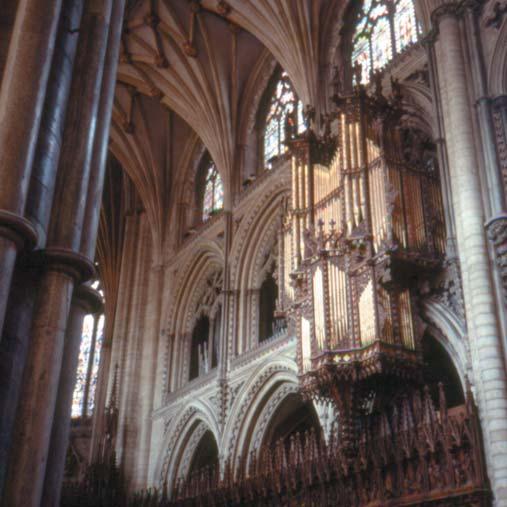
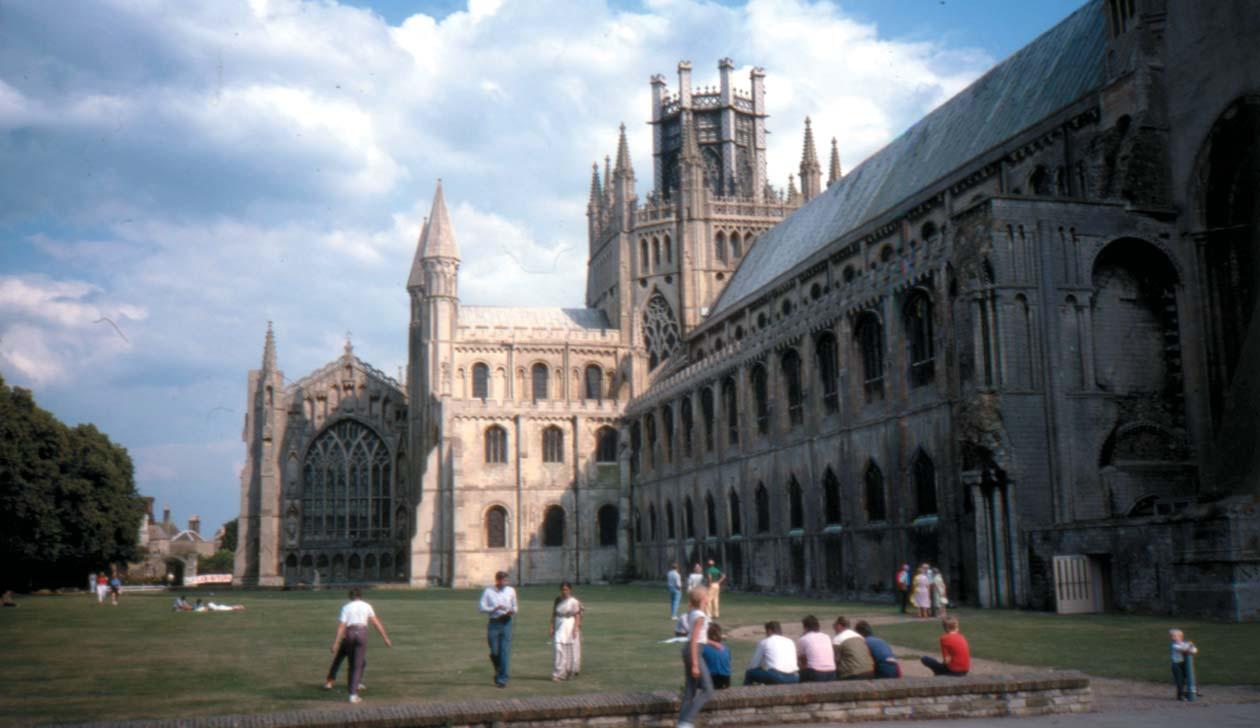
Music 14
Cathedral
Ely Cathedral and organ.
3302 Cathedral Music MAY 06 v2 22/5/06 16:01 Page 14
Photos: Hugh Wilman.
writing about 2006! He acknowledges the need to educate not only choirs but also clergy and congregations, and rejoices in the ‘talented and enthusiastic choir’ at Ely. ‘Here I can experiment – find out what works and what the choir enjoys singing. The boys are severe critics of what they have to sing, but I find that they can cope with any technical problem if the music is sufficiently stimulating to arouse and hold their attention. So far as the cathedral tradition is concerned, I am free at Ely to extend and develop this tradition as far as my imagination and originality will take me.’
Other influences were at work. In 1964 he had exchanged his work at the King’s School, Ely for two days a week at the Royal Academy of Music, where he was to teach not organ but composition for some thirty-eight years. Even in his D.Mus exercise, a symphony rather than the conventional choral cantata with orchestral accompaniment, he had shown that he was not merely a ‘church composer’ but one with interest and ability in other genres of musical composition. The weekly contact with professors in every kind of musical discipline brought forth works as diverse as on Organ Concerto (1969), an English Requiem (1971) which Dr Wills considers his best work, and a whole series of works for guitar including a Concerto Lirico for guitar quartet (1987) and a Concerto for Guitar and Organ (1988). He has written for brass band both with and without organ, for solo voice, and for various solo instruments including piano. An opera 1984 remains unperformed owing to copyright restrictions on Orwell’s text. The works for solo organ and for choir have continued to take pride of place, the latest being another communion service for men’s voices: the current RSCM magazine contains an enthusiastic review of Ave verum corpus, presumably that
Membership
Membership of the Royal College of Organists is open to anyone who takes an interest in organ and choral music and the related arts, whether they play the organ, direct a choir, or just enjoy the music. Student Membership, at a reduced rate, is available to those in full time education.
Qualifications
Our qualifications are renowned worldwide as setting the highest standards for organists and choral directors.
Education & Outreach
The College organises a wide range of educational events across the UK for all ages and standards of players and directors and works closely with Oundle in the provision of training for young organists.
For further details look up www.rco.org.uk or contact

The Royal College of Organists, Millennium Point, Curzon Street, Birmingham B4 7XG Tel: 0121 331 7222, fax 0121 331 7220 admin@rco.org.uk, www.rco.org.uk
composed in 1977. A recent recording of organ music includes his entertaining Young person’s guide to the organ with spoken commentary by Dr Wills himself.12 His book Organ in the Menuhin Music Guides appeared in 1984, though he had to be rather firm with the publishers when they tried to abandon the project after he had done all the work for it; in the event it sold well and has been reprinted twice.
Above all, he has remained to the end an enthusiastic organist and choirmaster, full of praise for his successor’s work at the cathedral where he and his wife Mary (who is proud of having lived in Ely for eighty years) are frequently to be seen. The style of the choir’s singing changed somewhat during his long reign, from a suave, almost King’s-like tone in his earlier years to the rather brighter sound characteristic of more recent times. The repertoire changed as well, a 1982 recording, including Stainer, Stanford, Parry and Wood, unheard of in former times. Other recordings of Blow, Boyce and Purcell were more in the Ely tradition, and all are of a highly commendable standard. There was a difficult patch when inflation had made the cathedral even more impoverished than usual and it became impossible to maintain the value of salaries and scholarships, when every week the Church Times seemed to advertise a vacancy for a lay clerk and when a succession of talented assistant organists moved on fairly rapidly; but Arthur remained enthusiastic right up to his retirement from the cathedral in 1990 (which was fittingly honoured with the award of the OBE), enjoying ‘as much as ever playing the organ for the cathedral services and not least the daily routine of rehearsals. When you get older you enjoy it more.’13 Let James Bowman have the final word: ‘Do give Arthur (and Mary) a good write-up – he was very good to me, and is one of the kindest people I know.’
The author’s thanks are due to Dr Wills, a delightful and genial host, and to James Bowman. Dr Wills has his own website (www.impulse-music.co.uk/arthurwills.htm) which contains details of how to obtain his music and recordings and also a full list of his publishers, the most important of whom are: Novello, RSCM, Fagus Music, Anglo-American Music Publishers and Oxford University Press. His forthcoming birthday might well encourage FCM members to have a closer look at his music and include it in choral or organ programmes, and the Ely Cathedral shop sells a good selection of his recordings and some of his sheet music.
Notes
1London & Edinburgh, The Canterbury Press 1949, 4th reprint 1960, 111
2Organists and Masters of the Choristers of St George’s Chapel in Windsor Castle; Windsor, The Dean & Chapter of St George’s Chapel 1974, 107
3 loc. cit.
4Howard, Thine Adversaries Roar , Autobiographical Observations
1922-99, (Leominster, 2001), 57
5op. cit. 66-82
6The Archbishops’ Diploma in Church Music, a written examination in liturgy etc., was open only to those who were already FRCO(CHM). Roy Massey and Sir David Willcocks are two other notable holders of the Diploma.
7op. cit. 83
8RSCM English Church Music 1963, 38
9English Church Music 1964, 55
10Brian Runnett, English Church Music 1968, 61
11Emotion in music, English Church Music 1975, 43
12Wondrous Machine (Jeremy Filsell, Organ), GUILD GMCD 7225
13Lionel Dakers, Profile 1986 – Arthur Wills in The World of Church Music
1986

Cathedral Music 15
3302 Cathedral Music MAY 06 v2 22/5/06 16:01 Page 15
60Seconds in Music Profile
Benjamin Saunders, Diocesan Director of Music, Leeds Cathedral.
Age: 33
Education details:
Stockton Heath Primary, Warrington
George Heriots School, Edinburgh Downing College, Cambridge (Organ Scholar)
Career details to date:
Assistant Organist St Giles, Cathedral Edinburgh
Assistant Director of Music Blackburn Cathedral

Assistant Director of Music Chester Cathedral
What does your role at Leeds Cathedral entail?
It’s a dual role: I direct the four cathedral choirs for choral vespers and mass and am also responsible for liturgical music in 98 schools and 130 parishes as Diocesan Director of Music. We have the largest choral programme for young people in the UK, covering two big cities - Leeds and Bradford, as well as other towns in West Yorkshire. I am fortunate in having several very talented and hard-working full-time assistants who share in the direction of around 25 choirs, and the number keeps growing!
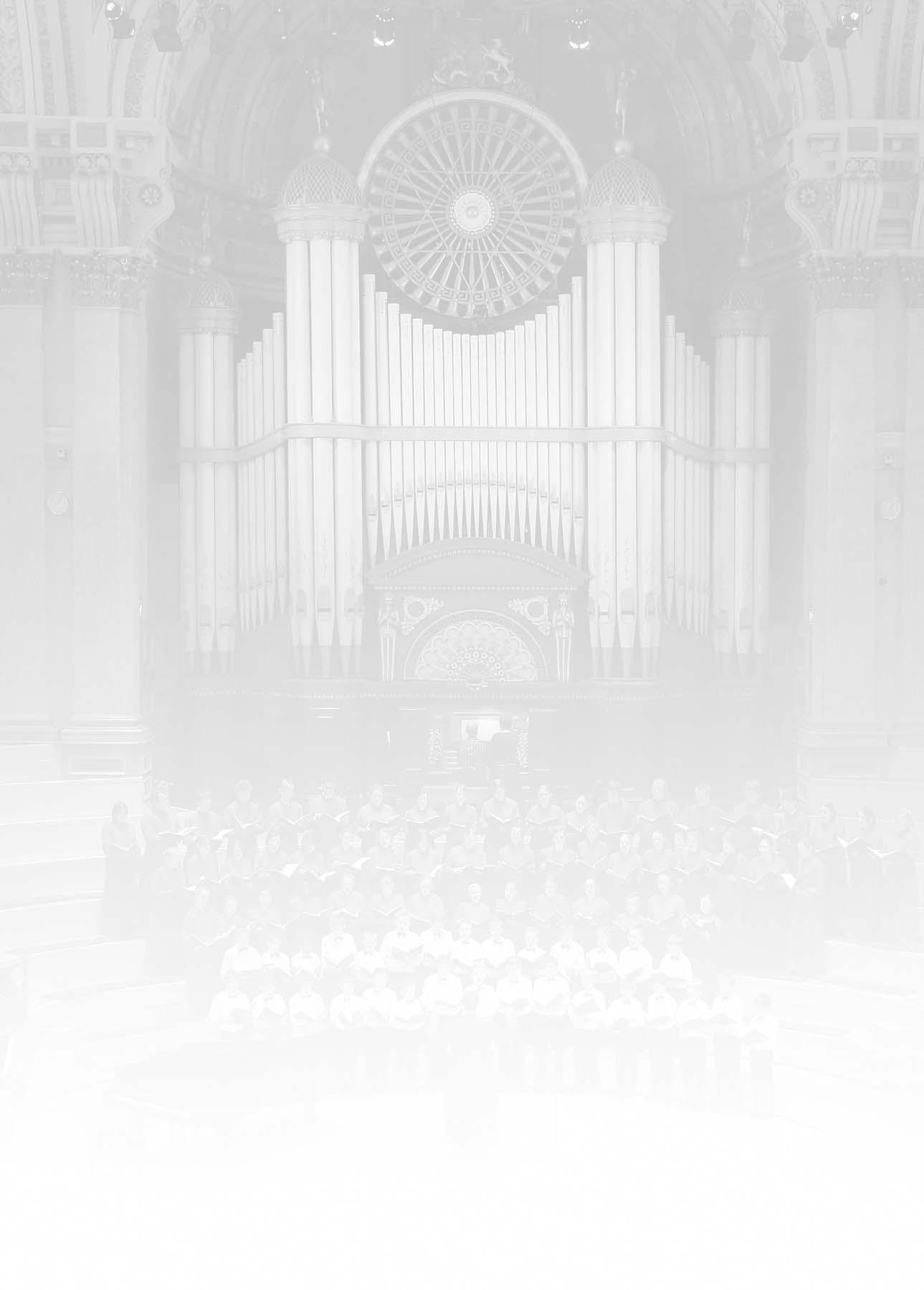
Cathedral Music 16
3302 Cathedral Music MAY 06 v2 22/5/06 16:01 Page 16
Photo: John Bertalot.
What pieces have you been inspired to take up recently and why?
The Hungarian Comedy Overture by Kéler-Béla (19th century). I spent last summer transcribing it from a recording of a fairground organ in Germany. It’s a substantial work (10mins) and a great piece to wow the audience at town hall recitals. It was quite a challenging piece to learn!
One of my greatest loves is early European choral music - as one can see from the Leeds music list! This has led me to explore some of the keyboard music of this period for harpsichord or organ, in particular the tientos of Correa de Arauxo (Spanish 17th century).
I have also enjoyed studying some contemporary organ music. Graeme Fitkin, Giles Swayne and Philip Glass are my favourite composers in this area.
Have you been listening to recordings of them and if so is it just one interpretation or many and which players?
Actually, I don’t listen to much organ music. In the case of the Hungarian Comedy Overture, I spent many hours going through an MP3 recording of a performance on a mechanical organ that I found on the internet.
What or whom made you take up the organ?
A childhood fascination with ‘sustaining’ keyboard instruments from playing my piano teacher’s harmonium.
Which organists do you admire the most?
I genuinely admire amateur organists the most – they often give their time and talents for little or no reward, other than the thrill of performing. One thing I always strive for, as a professional, is to recapture that enthusiasm and joy at the keys.
What was the last CD you bought?
Music from Renaissance Portugal with the Cambridge Taverner Choir.
What was the last recording you were working on?
Anew Christmas CD with Leeds Cathedral and Bradford Youth Choirs (following our live broadcast of Midnight Mass this year).
What is your a) favourite organ to play?
The 1829 Renn and Boston organ in St Philip’s Church Salford – it has no gimmicks, a great acoustic and beautiful English voicing.
b) favourite building?
My house. It’s an 18th century weaver’s cottage near Holmfirth in the Pennines.
c) favourite anthem?
This changes every week – currently its Videte miraculum by Tallis.
d) favourite set of canticles?
Again it’s changeable – any of the Lassus plainchant ones. When I worked in the C of E, Rubbra in A flat was the most satisfying to play.
e) Your favourite psalm and accompanying chants?
I am a late convert to Latin chant. The most beautiful singing of the psalms I heard recently was by the monks at Farnborough Abbey.
f) favourite organ piece?
I especially enjoy the longer Bach chorale preludes.
g) favourite composer?
I’ll grab three – Haydn, Taverner (16th century) and Victoria.
What pieces are you planning to include in your next recital?
I always try to include a few pieces by Boëly and Hans Andreas Stamm – I enjoy playing them and audiences seem to like hearing them. I often perform my own transcriptions: Vivaldi Mandolin Concertos, Bach’s Brandenburg Concertos and Britten’s Simple Symphony
Any forthcoming appearances of note?
The next recital I will do is a Bank Holiday concert on the famous Schulze Organ in Armley Church.
Have you played for an event or recital that stands out as a great moment?
Yes – playing the Saint-Saëns Organ Symphony to over 10,000 people, with the Liverpool Phil and Royal Artillery at an open air proms concert at Leeds Castle in Kent. Carl Davis was conducting.
Has any particular recording inspired you?
Andrew Parrott’s recording of Taverner’s Missa Gloria Tibi Trinitas makes the earth move for me. John Rutter’s work with the Cambridge Singers is also inspirational, as the sound of the younger voices is similar to what we aim for at Leeds. I much prefer to listen to music live though – to hear the monks at Farnborough Abbey is a revelation!
How do you cope with nerves?
I have very dangerous pastimes – playing the organ and conducting choirs is a breeze by comparison!
If you could commission a choral work what text would you choose? And who would you like to set the words to music?
We have just commissioned Colin Mawby to write two settings of the Magnificat (Latin text) for both full choir and for boy trebles. These will be performed when the restoration of the Cathedral is completed in November.
What are your hobbies?
White water kayaking, mountain biking and inline skating.
Do you play any other instruments? The harpsichord.
What was the last book you read?
The Curious Incident of the Dog in the Night-time by Mark Haddon. My favourite author is Peter Ackroyd.
What are your favourite radio and television programmes?
The Peep Show (Channel 4) is the funniest thing on the TV at the moment. I will happily listen to anything on Radio 4, except The Archers!
What Newspapers and magazines do you read?
Usually only what the steward hands me when travelling on trains and planes!
Cathedral Music 17
3302 Cathedral Music MAY 06 v2 22/5/06 16:01 Page 17
- 2006
CELEBRATING ONE HUNDRED YEARS

The EnglishHymnal
2006 sees the centenary of The English Hymnal. Published on Ascension Day, 1906, the book became a landmark in the history of good hymnody. For much of its hundred years, its influence has been felt throughout the Church of England and beyond - not just in Catholic circles, where its bright green covers have been most at home, but across a wide variety of churchmanship.
Cathedral Music 18
1906
Michael Tavinor Dean of Hereford
3302 Cathedral Music MAY 06 v2 22/5/06 16:01 Page 18
By the end of the 19h century, many felt that English hymnody was in a parlous state. True, the huge influence of Hymns Ancient and Modern had many beneficial effects but the time seemed right for something of a reformation in both words and music. A noble attempt was made by Robert Bridges in his Yattendon Hymnal during the 1890s, but this never proved a commercial success. An attempt to completely revise Hymns Ancient and Modern in 1904 was a failure and this opened the way for a visionary priest, Percy Dearmer, to gather a group around him1 and to discover a new and more exciting way. Dearmer was Vicar of St Mary, Primrose Hill in London and had come to prominence with his Parson’s Handbook, his involvement with the Arts and Crafts Movement, with the Christian Socialist movement and through his insistence on good practice in matters liturgical.
It was Dearmer’s good fortune, at the beginning of the process, to engage the services of Ralph Vaughan Williams as Musical Editor. Vaughan Williams, one of the greatest of 20th century composers, although not a practising Christian, had a great interest in church music and in folk song and gave to the music of the new book a stature far above that of its contemporaries.
Dearmer, Vaughan Williams and their committee worked fast, and the book was ready for publication in two years.
The book certainly had lofty aims. In his Preface, Dearmer states that The English Hymnal is a collection of the best hymns in the English language, and is offered as a humble companion to the Book of Common Prayer for use in the Church,’ while Vaughan Williams makes uncompromising claims for the music to be used.
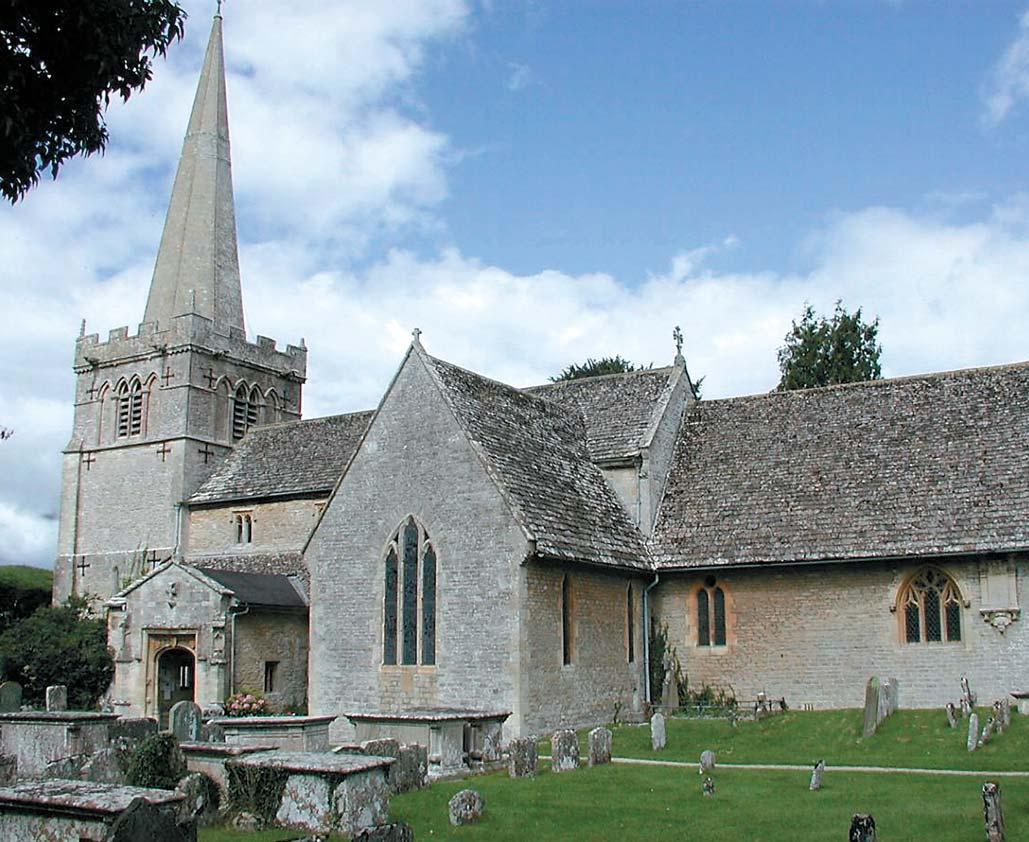
It is indeed a moral rather than a musical issue...it ought no longer to be true anywhere that the most exalted moments of a churchgoer’s week are associated with music that would not be tolerated in any place of secular entertainment.
The new book met with immediate success. It also met with
controversy and opposition. Several bishops took exception to some of the hymns included – especially those invoking the prayers of the Blessed Virgin and the saints and banned the use of the hymnal in their dioceses, with the result that Oxford University Press, the publishers, were forced to produce a modified edition. Opposition, however, soon died out and the book enjoyed huge success throughout the first part of the 20th century. Indeed, by the time of the fiftieth anniversary celebrations in 1956, almost five million copies, in many versions and editions, had been sold.
Why was The English Hymnal such a success?
First, it is a book which has an uncompromising liturgical structure and there is ample provision for all seasons of the church year - office hymns, processionals, litanies and a large section of ‘propers’, culled from the Sarum Missal – all of ➤
Cathedral Music 19
All Saints Church, Down Ampney, Gloucestershire. Vaughan Williams was born at the Rectory and named the tune he wrote to accompany Come down, O love divine after his beloved home village.© Phil Draper www.churchcrawler.co.uk used by permission.
3302 Cathedral Music MAY 06 v2 22/5/06 16:01 Page 19
‘Turning to the music found in The English Hymnal, we are immediately struck by Vaughan Williams’s rejection of many Victorian tunes which had become so popular during the past half-century. ‘
which provided a rich liturgical diet at a time when this aspect of the church’s life was developing fast It enabled churches, embracing the principles of the Oxford Movement, to have most of their liturgical needs met – in the covers of one book.
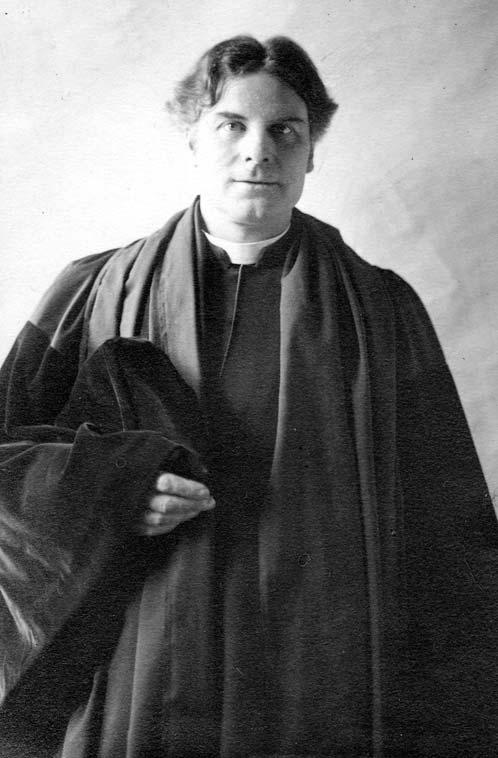
The English Hymnal was a book which used the best of poetry of all ages. Its editors were influential in raising standards and in extending the general perception of what constitutes a hymn. Thus there are riches from the 17th century – George Herbert, Edmund Spenser and John Milton, while the inclusion of Bunyan’s ‘He who would valiant be’ hugely increased the popularity of these words from Pilgrim’s Progress. Dearmer incorporated the best of 19th century and contemporary poets and we see the work of Blake, Rudyard Kipling and G K Chesterton. Dearmer continued this process of using the best poetry from all periods in his later hymnal project Songs of Praise
The section At Catechism greatly develops the repertoire of children’s hymns used in church. Vaughan Williams was adamant that quality in music should be foremost:
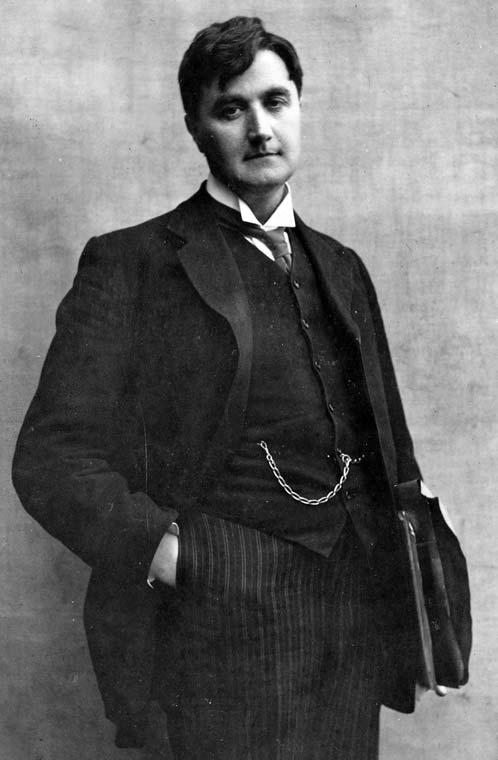
‘Children, at all events, have no association with any particular tune and incalculable good or harm may be done by the music which they sing in their impressionable years’.
Many of the children’s hymns can no longer be sung with confidence. How many churches will now sing, There’s a Friend for little children, Above the bright blue sky?
But some of the children’s hymns endure, not least Walsham How’s It is a thing most wonderful and Dearmer’s own Jesu, good above all other beautifully matched to the folk carol Quem Pastores, Laudavere
There is a great breadth to the hymn texts which the editors included. Dearmer was convinced that American hymnody
had a great deal to contribute to his new kind of hymn-book and TheEnglish Hymnal introduced the world to such enduring texts as Whittier’s Dear Lord and Father of mankind and two famous Christmas hymns, O little town of Bethlehem and It came upon the midnight clear
Turning to the music found in The English Hymnal, we are immediately struck by Vaughan Williams’ rejection of many Victorian tunes which had become so popular during the past half-century. A hymn like ‘For all the saints’ is no longer linked with A & M’s maudlin tune by Barnby but with Vaughan Williams’s wonderful unison tune Sine Nomine. While Vaughan Williams would, no doubt, have liked to exclude from the new book all Victorian hymn-tunes, the publisher did manage to persuade him to accept an appendix ‘of additional tunes which do not enter into the general scheme of the book’ – a section generally known as his ‘Chamber of Horrors’.
A great feature of the book is its inclusion of proper plainsong melodies for the many office hymns - with four-line plainsong notation alongside modern notation organ accompaniments (accompaniments which were entirely replaced in 1933, with JH Arnold’s version). Although not plainsong, the French diocesan church melodies (eg. Veni Emmanuel and Christe Sanctorum), with their strong melodies, come from ancient sources and were particularly favoured by Vaughan Williams.
Other sources are freely used – metrical psalters from Geneva, Scotland and England; a good number of Welsh hymn tunes; and English congregations were, for the first time, introduced to many of JS Bach’s harmonisations of chorale melodies.
But perhaps the feature that all associate with The English
Cathedral Music 20
Ralph Vaughan Williams (1872 - 1958). Arguably the greatest British composer and arranger of the 20th century. He was appointed Music Editor of the The English Hymnal at only 32 years of age. © The RVW Archive
3302 Cathedral Music MAY 06 v2 22/5/06 16:02 Page 20
Percy Dearmer (1867 - 1936). The driving force behind The English Hymnal while serving as Vicar of St Mary-the-Virgin, Primrose Hill, London. © Lambeth Palace London. Not to be reproduced without permission.
Hymnal is its use of folk melodies as hymn tunes. Vaughan Williams and Cecil Sharp were leaders of a movement which sought to save this tradition from extinction and much of their time in the early years of the 20th century was spent in visiting rural places in England – listening to villagers and gypsies and hop-pickers, and writing down these old folk melodies. Vaughan Williams found that some translated extraordinarily well into hymn tunes – Monk’s Gate (He who would valiant be), Kingsfold (I heard the voice of Jesus say), King’s Lynn (O God of earth and altar) to name but three.
Vaughan Williams had a strong conviction that unison singing should be at the heart of congregational worship and many of the tunes he wrote specifically are best heard when a full church is singing lustily in unision - tunes like Sine Nomine, and Salve Festa Dies (‘Hail thee, festival day’) are surely unforgettable.
The words and music of The English Hymnal were made even more accessible by the care which both Dearmer and Vaughan Williams lavished on background information and on instructions for performance. The ancient sources are carefully noted - and the original language and script (Latin, Greek, Syriac, Russian) employed. Vaughan Williams was also particular about the speeds at which hymns should be sung, though whether any today would countenance following his suggestion that Nun danket alle Gott (Now thank we all our God) should be sung = 40 is debatable!
Mention should also be made of the ‘look’ of this new hymn-book – with a fine attention to detail in its typography and its handsome embossed cover. With its chi-rho, fish and olive leaf design, some think that Mabel Dearmer, Percy’s first wife - an art teacher herself - had a hand in its design.
Above all, The English Hymnal is probably the hymn book with the clearest theological rationale. It stands for using the highest quality of words and music for use in Christian worship and refuses to countenance anything that is trivial or dull. It represents an important strand in the Anglican Church which sees faith and liturgy as capable of completely transforming society and insists that the Christian Year is an engaging vehicle through which God’s grace very clearly works. Above all, The English Hymnal makes clear the vital links between what is done in church and daily life - here was a practical ‘Christian Socialism’, which inspired Christians 100 years ago and continues to do so.
Although we celebrate The English Hymnal in 2006, it should be understood that what is being celebrated is a tradition rather than a book. Words and music of the 1906 book found their way into very many editions for the home and foreign market. The tradition continued with the 1933 revision, which
MUSICA DEO SACRA FESTIVAL
July 31st – August 6th 2006
Tewkesbury Abbey (Gloucestershire)
A week of services in the course of which music of every age is sung in its correct setting as part of the liturgy.
Information from (s.a.e. please): Mrs Christine Aplin
Tewkesbury Abbey
Gloucestershire GL20 5RZ
Tel: 01684 850959
E-mail: musica@btinternet.com
added over one hundred tunes but which made few alterations to the words. In 1962, Oxford University Press published The English Hymnal Service Book – a core selection of hymns together with other liturgical material, while in the next decade appeared English Praise – a supplement of 106 hymns and carols together with responsorial psalms. Eleven years later The New English Hymnal appeared, published by Canterbury Press, Norwich. The 1986 editors, of which George Timms was Chairman (he, too, had been Vicar of St Mary, Primrose Hill), were aware of their daunting task in producing a successor to the 1906 book which had ‘set new standards in words and music for the 20th century’. The new book achieved great success, too, and is found today in large numbers of churches and in the majority of English cathedrals.
From its earliest years, the book’s interests have been championed by a small group of clergy and musicians known as The English Hymnal Company. This group has been working on two major projects to celebrate the centenary. First, a commemorative volume – Strengthen for Service 2 – in which more than twenty scholars, respresenting a wide range of interests, assess the history of the book and its place in the canon of hymnody.
The Archbishop of Canterbury, Dr Rowan Williams, has contributed a foreword to this volume, in wich he acknowledges the great influence The English Hymnal has had on his life and ministry, from early days. In addition, the directors of the company will, during 2006, offer a new supplement – New English Praise 3, which will contain fifty hymns – some new and already established tunes to existing words, more than twenty responsorial psalms and canticles and liturgical material, both old and new.
The centenary will also be celebrated at St Mary, Primrose Hill and by events at the Hereford Three Choirs Festival in August In these and other ways, it is hoped that this landmark hymn book will be worthily acknowledged and that its tradition will become better known to an even wider constituency. Above all, those who love this book, hope and pray that what it stands for will continue to serve, nourish and enrich the church of the future.
Notes
1. Including Athelstan Riley, the prominent AngloCatholic layman who famously contributed Ye watchers and ye holy ones to the volume.
2. Published by Canterbury Press £19.99. See advert on page 55.
3. To be published by Canterbury Press in May 2006.

Biographical note
Michael Tavinor read music at Durham University, where he was Organ Scholar of University College, gaining his ARCO in 1977. After teacher-training in Cambridge, he studied for a Master’s degree in music at King’s College, London. He trained for the priesthood at Ripon College, Cuddesdon, and served his title at St Peter’s, Ealing. In 1985 he became Precentor and Minor Canon at Ely Cathedral, moving to Tewkesbury Abbey as Vicar in 1990. He became Dean of Hereford in 2002 and in 2005 became President of the Church Music Society. He has been a member of the Council of Friends of Cathedral Music and currently chairs the Cathedrals’ Liturgy and Music Group, a sub-group of the Association of English Cathedrals. He is a director of the English Hymnal Company.
Cathedral Music 21
3302 Cathedral Music MAY 06 v2 22/5/06 16:02 Page 21
Impromptu
In this FCM 50th anniversary year CATHEDRAL MUSIC
Editor Andrew Palmer profiles one of FCM’s Vice-Presidents Dr Francis Jackson.
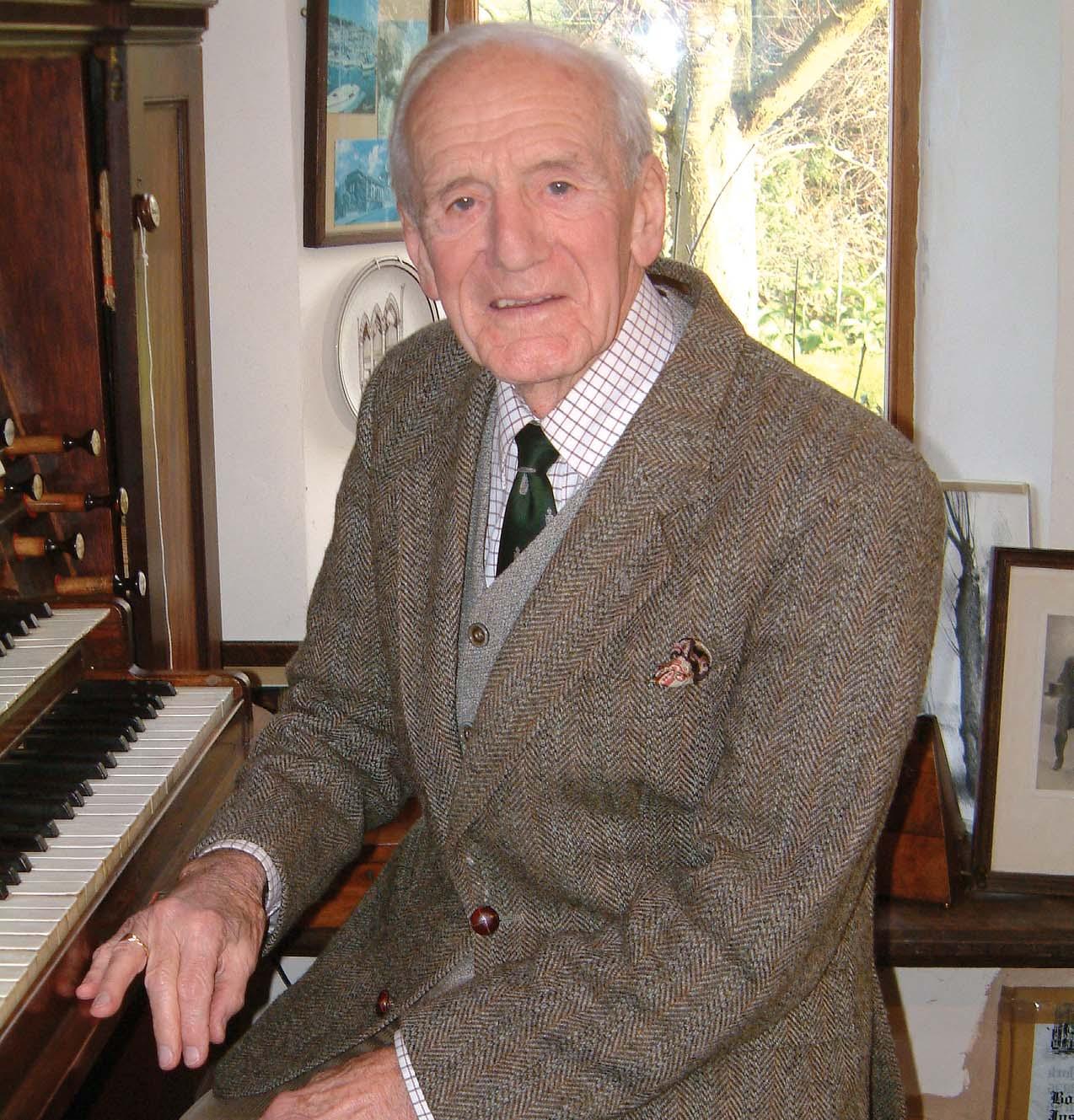
Cathedral Music 22
3302 Cathedral Music MAY 06 v2 22/5/06 16:02 Page 22
All photos by Graham Hermon.
Ican just imagine how Lucy felt in The Lion, the Witch and the Wardrobe on going through to a magical world. The film Narnia was released the day before I journeyed through the Howardian Hills to a small North Yorkshire hamlet, the name of which gives the clue to whom I’m interviewing: East Acklam. The home of FCM’s long-serving Vice-President, Dr Francis Jackson, known for his wonderful hymn tune East Acklam set to For the fruits of his creation and for his long service as Organist (now Emeritus) at York Minster.
On my arrival Dr Jackson opens the door in amazement that a) I found the house and b) I am on time. Apparently many people get lost finding his picturesque house on a bend opposite the pub.
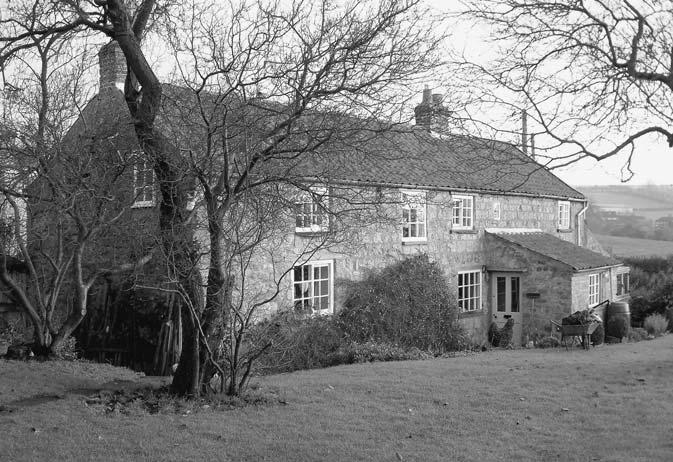
The reference to Narnia comes to me shortly after following him through his house, via the kitchen, to pick up a tray with a thermos of coffee and scones with ginger prepared by his wife Priscilla. We almost process through the garden to a small building next to the garage. It is named Monfort l’Amaury Lodge, after the village where Maurice Ravel lived. On entering I can only imagine it is like going through the wardrobe in CS Lewis’s children’s book. For inside, is a two-manual 1795 Stephen White pipe organ from a church in the district of Belper called Openwoodgate, a grand and an upright piano and a small gallery modelled from something similar in Ravel’s house. Interspersed in this magical study, is an old–fashioned typewriter and numerous music scores, books, videos, cassettes, paintings, photographs and postcards. It is a treasure trove of cathedral music memorabilia. Of particular interest are two wine bottles hanging from the ceiling, which were presented to him by guests, and are labelled Walcker Orgel Doesburg and Charles-Marie Widor. On the organ lies a copy of Jackson’s PreludeandFugue in C.
Francis Jackson, doyen of English cathedral organists, was born in 1917, in Malton, was a former pupil of the revered Sir Edward Cuthbert Bairstow, and served York Minster for 53 years. First as a chorister, then Assistant Organist and later, after war service in the 9th Lancers, he succeeded Bairstow as Master of the Music in 1946.
Dr Jackson explains that he passed the audition for the Minster choir at the age of 11. These days a potential boy chorister would be deemed past it at such an age. “I was taken by my mother to play the piano to Bairstow and he must have been impressed. I started within days at the Minster.”
Bairstow’s reputation goes before him, so what was he really like?
“Bairstow was very strict. There were no tricks to be played on him. If you tried any, you got your desserts in full measure. So no one ever tried to take advantage. He looked like an enraged eagle and was sometimes a bit too severe. He was very fierce and those eyes and his large Roman nose all contributed to the image.”
In his biography of Bairstow, Francis comments that he prepared an organ piece, John Ireland’s Villanella, to play to his teacher but Bairstow did not like it, remarking in an irritated manner “that’s tripe”.
Is it then, the role of a teacher to make such comments? I enquire.
“Bairstow was very keen that one’s taste
should be impeccable. He was very particular but it may have been the prevailing attitude in those times when music had to be blameless. In fact he disapproved of many composers: Barnaby, Garrett, Stainer. In fact, he wrote the anthem As moses lifted up the Serpent, with its God so loved the world section, because he thought Stainer’s was unworthy.”
“You then moved from pupil to employee. What was he like as a boss?” I ask. “Well, he was good at giving people a job to do and letting them get on with it. He used to say that if he ‘stood over someone critically all the time it would stiffen them up’. On several occasions as a mere teenager he left me to play services when he was away and he did not tell me what to do. It was most definitely a case of throwing me in at the deep end.” That would never happen today – you often hear stories of organists telling their deputies how to register a piece which of course leads to clinical interpretations.
Francis continues, “I look back on those days with fondness. I met another pupil of his recently and he said he thinks of Bairstow every day, such was his influence.”
With Bairstow’s reputation preceding him I wondered whether Dr Jackson experienced much anxiety when he eventually took over; I asked him if he had a set plan.
“No, not really, because I was brought up in the Bairstow tradition and I didn’t wish to see that change at all. The only thing which did change was the English Psalter which wasn’t really the best one on offer. I explored all the published psalters and the one we used at the parish church in Malton in the 1920s seemed apt; that was the Psalter Newly Pointed and it needed very few alterations and they still use it in the Minster at York today.”
Knowing how sensitive people can be to certain psalm–chants I wonder if he was brave enough to alter a few?
“I introduced one or two,” here he gets up and plays through an Ouseley chant which he got fed up with.
One of my niggles is listening to psalms such as 78 to chants by one individual, so I tackle the maestro – does he like psalms set to chants by one composer?
“No, not really. There is very little need to produce new chants, there are so many thousands of them, though I have been guilty myself…”.
Jackson was at York when ‘the Dean of King’s and the King of Deans’ as he was called, reigned for 22 years. How did he get
➤
Cathedral Music 23
3302 Cathedral Music MAY 06 v2 22/5/06 16:02 Page 23
on with Dean Milner-White, especially as his success has been put down to a combination of an autocratic style of leadership and a wide-ranging knowledge of the arts?
“Milner-White was very keen on the Cambridge repertoire, so he wished, nay demanded, that York should do more Charles Wood, whom he knew and thought highly of. We had already in the repertoire Wood’s 2nd E flat service and the lovely Coll Reg canticles.
“He appointed me and wanted to mould me into his way of thinking, not that I took it all in. I tried to introduce certain pieces that he was not going to have. These included Smart in B flat and Garrett in D. I eventually wore down his resistance!”
Francis pops in an interesting statement next. “If deans want to do something you really can’t stop them. It is a dean’s prerogative to have the sort of service he wishes to have and I’m afraid the organist has to put up with it. You can’t fight your dean. Milner-White had a wide knowledge of the repertoire, so we met every week to hammer out the following week’s service music. It was interesting when some obscure saint would crop up. Milner knew exactly the obscure piece of music that fitted in. One could only learn!”
He explains that on Mondays he would meet up with the Dean and the minor canon whose job was to fill in a pro forma of repertoire, most of which was copied in from the previous year. It was all chosen with the greatest care.
So through all the planning and year-on-year music, was there a particular time in the Church’s calendar that he enjoyed?
“I always loved Easter and the Evensong on Easter Eve; at the end of the service we used to burst into Ye Choirs of New Jerusalem in E major with a wonderfully loud, joyful noise, which after six weeks of solemn stuff was good to hear. I always looked forward to that and then Easter Day when we did a solemn Te Deum at the end of Evensong which was always Bairstow in D, double choir, unaccompanied.”
Looking across to the piano I notice a huge working manuscript: his first symphony. Since retiring from the Minster in 1982, Dr Jackson has put his mind to composing and playing on the organ recital circuit.
In fact he had been composing for many years, so when I asked him what were his favourite compositions, he recounted the following anecdote: “My favourite piece is also one of my earliest: Tree at my window to the words of Robert Frost This, like many of my own favourites, fell on to the paper without any trouble. I was in the western desert while on war service. I had spent many months thinking of how to do it and its inspiration came out on a very stormy night in the desert in a ramshackle tent and the only light I had was a cigarette tin with a piece of rope in it for a wick. I did it all in one sitting and finished at about 2am. I also have a particular fondness for the first piece I had published which I wrote for Bairstow’s 70th birthday – Impromptu, written in 1944 when I was in Italy.”
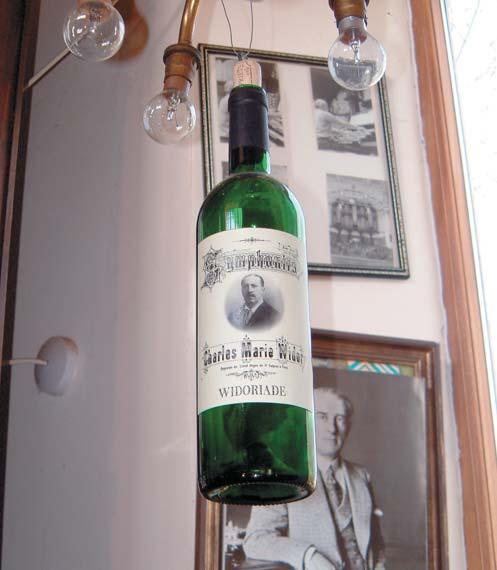
Does he respond to commissions with a formulaic pattern, I wonder?
“No, a commission could start when I put the telephone down or receive a letter. Other times it’s weeks, probably months, before you know how to start or at least it is with me, having to see to so many things until I retired from the Minster. Bairstow at one point said ‘you have never forced the composition’. That is so. I can’t compose unless I really feel able to without having to force. It has to well-up inside me.
”I remember when Graham Matthews rang up and said ‘Can you write a chorale prelude on Praise to the Lord the Almighty? I accepted immediately but my wife was horrified and said “be careful” or words to that effect. However, I knew exactly how to do it from the first moment.
“But then you take on a commission knowing that it would be nice to do but you don’t have a clue how to do it and there is a lot of thinking and getting in the mood.”
With any composition it is not just the music – words play an important role in shaping an idea. So what does Francis do for words?.
“Oh, over the years I have collected various texts that I would like to set to music and some of those have come in useful, but it is better if someone sends the libretto. That happened a couple of years ago, when Manchester Cathedral asked me to compose a piece for the opening of the Commonwealth Games by The
Cathedral Music 24
3302 Cathedral Music MAY 06 v2 22/5/06 16:02 Page 24
‘It was Ravel who said that without a piano you cannot invent new harmonies. When we lived in York I used to have a piano high up under the roof, and Priscilla would fend off callers while I was putting pencil to paper. ‘
Queen, which was an anthem giving thanks for the restoration of the city after that dreadful IRA bomb and I was given the text ‘Thanks be to the Lord, for he hath shown me marvellous great kindness in a strong city.’ That caught on with me immediately.”
Is there anything that any composer has written that he considers unbeatable?
The answer is not surprising, as he yet again recalls his hero Bairstow. “His Passiontide composition The Lamentation is an extraordinary work and it is one that can’t ever be done again. If anyone did tackle the words, they would need to do something quite extraordinary.”
I refer to the symphony on the piano and ask if this is work on the go? “At the moment I am looking at second-hand music and am reworking it into a symphony for solo organ. I have finished two movements and am working on the scherzo and the finale. Rather tongue-in-cheek I ask him if it is playable. “I hope so! If I ever finish it I have got to learn to play it and of course there is only one organ it has been written for – York Minster.”
“Talking of recycling. I have recently been working up a prelude and fugue and I have christened it The Brook which I wrote in the 1970s and didn’t do anything with for more than 20 or so years. I am rather pleased with the way that’s worked out. It is a tribute to J S Bach hence its sobriquet. Bach is the German word for stream or brook of course.”
So who have been the main influences on Jackson’s musical style? Without hesitation he names Bach, Ravel and Debussy.
“It was Ravel who said that without a piano you cannot invent new harmonies. When we lived in York I used to have a piano high up under the roof, and Priscilla would fend off callers while I was putting pencil to paper.

“The process has got to be a natural expression. You have to feel everything, even if tackling an academic piece, such as a fugue or writing in any form, whether it be sonata or rondo, that is the scaffolding on which to hang your thoughts. So it can be academic or musical and at the same time, expressive of emotion. Some people, Stravinsky for instance, don’t have any truck with emotion but I don’t agree with them. Mind you, I love a lot of Stravinsky but I don’t like to write in an unemotional way.”
He has had the “privilege of presiding over one of the finest organs in the UK” the Minster’s fine specimen, which is his favourite. Surprisingly he tells me that one of his other favourite organs, which he enjoys playing, very much is the instrument in Peterborough Cathedral. As to Westminster Cathedral, “It bowled me over the first time I played it.”

He has performed abroad, six tours of America and other visits there, as well as Australia. He tells me a funny story. One of his first overseas tours to Denmark in the 1950s proved to be a baptism of fire. “I took an entirely romantic programme and found the organs were all classical and I had to refrain from changing stops every half bar, so I adjusted my thinking and went overboard in favour of classical baroque organs.”
Now that gives me the cue to ask about repertoire. With this he jumps out of the chair and wanders to the organ where he picks up a little notebook containing every piece he has ever played. As he thumbs through it there are numerous asides. “Ah. Yes”, “Oh, I haven’t played that for years”, “I had forgotten about him.” Eagerly I tempt him to give me some of his favourite composers.
“Without doubt the great J S Bach: the A minor, the ‘Great’ G minor, B minor, Passacaglia and of course the St Anne. Oh and what about Healey Willan’s magnificent Introduction, Passacaglia and Fugue? He flicks backwards and forwards through the book, Statham’s Rhapsody on a ground, “supreme” and he enjoys playing the Peeters Suite Modale
Vierne is one of his favourite composers. “I play a couple of the symphonies, and the 24 Pièces en Style Libre are in constant use, twice monthly on the ‘Clarabella’ American organ in East Acklam Church, plus six Camidge concertos and movements from Bach’s ‘48’ and the Suites and Partitas, Boyce, Walond and Greene.” Of the French school, Messiaen does not feature too heavily but he had played Les Corps Glorieux and La Nativité
“Guilmant’s First Symphony, especially the 1st movement, is terrific. He always seemed to be looked down on when I was a student. Hardly anyone played him but I kept playing Guilmant voluntaries. Duruflé’s Prélude et Fugue sur le nom d’Alain is a lovely piece and let’s not forget the Cocker Tuba
Cathedral Music 25 ➤
3302 Cathedral Music MAY 06 v2 22/5/06 16:03 Page 25
Tune or come to think of it, Bairstow’s Sonata, a wonderful work. I helped read the proofs and gave the second performance a week or so after Willis Grant and introduced it in Manchester Town Hall.”
He admits to not having played Liszt for sometime which he says is surprising as he likes the Fantasias on BACH and Ad nos. It soon becomes like a shopping list but he finishes up by mentioning that Franck is always welcome in his recital lists along with any of the Mendelssohn Sonatas. As to Whitlock, he plays the Four Extemporisations, Five Short Pieces, Sonata and various Sketches but not the Plymouth Suite. Pressed on it he just says he “never got round to learning it.”
Jackson also mentions he likes Hollins Concert Overture in C minor which leads to another anecdote. “He [Hollins] was so modest and nice. I used to spend holidays in Scotland and was then shown round various organs. Once, a friend got Hollins to come along and demonstrated an organ. It was in 1937, there were just the three of us. Hollins asked what would I like him to play and I requested the Concert Overture in C minor’.”
Musing on these nostalgic memories he suddenly gets excited. “The best of those I met came back to me recently when the Vaughan Williams Society wrote to me. A book is being put together to commemorate the 50th anniversary of RVW’s death in 2008. I was asked if I had memories of him and I managed to unearth a blow-by-blow account of when I went to tea with him. When I joined the army my regimental address was Dorking but I was stationed some 40 miles away. When I wrote to Bairstow to tell him where I was, he replied and said I must go and visit RVW. ‘He will be kind to you’ he said. And indeed he was and I was glad that Bairstow made me go and see this lovely man.”
viscount’s
unique
PORTABLE KEYBOARDS
(with PIPE ORGAN sounds)
CANTORUM III
Cantorum II
£690 (inc VAT)
Cantorum III
£990 (inc VAT)
CANTORUM III has:
61 note keyboard with split manual.

17 sampled sound PIPE organ voices baroque/romantic.
5 programmable registration memories.
4 pre-set instrument voices – piano, spinet, choir and strings.
DESIGNED for Choirs, Ensembles and the home.
ALSO Viscount has the most comprehensive range of single, two and three manual sampled sound digital/pipeless organs from £1500 to £13500 – over twenty models.
VISIT our showroom, or request information from:
5 Caxton Way, Watford, WD1 8UA TeI. 01923 247437
(Agents throughout the country)
What advice would he give to aspiring organists of today?
“Watch out!” is the reply to hoots of laughter. But would he do it all again? “Oh yes, oh yes, without doubt. It’s a very desirable way of life.”
Before coming to the end of such an interview I feel I must ask him about his views on the state of cathedral music today now that he has been free of the day-to-day schedules. Is there a lack of creativity?
I am not disappointed with his response. “Nowadays hymns are often played too quickly. Organists seem to want to hurry the congregation along, so much so that they shorten the long notes from perhaps 3 beats to 2 or 21/2
It destroys the dignity and engenders a feeling of haste, which is inimical to a service of worship.
“There is also a lack of creativity in accompaniments. I picked up the art of accompaniment, especially the psalms, from Bairstow. He never taught it but I was always very much aware of just how colourful his accompaniments were. Take for example a mighty climax: he would drown us completely for a split second but it delivered the message in no uncertain terms. People are afraid of drowning the choir these days. One doesn’t play on full organ for long stretches, but in order to underline a special point you can certainly do that to inspire the singers and congregation alike”. I recall the impact of his old assistant, Ron Perrin, playing Stanford’s B Flat Te Deum and the dramatic use of the Bombarde.
I couldn’t agree more because a current theme in the cloisters and quires of today is just how disappointing psalm accompaniments have become, especially on Radio 3’s Choral Evensong
JUBILATE!
(a THREE manual practice organ with tracker touch keyboards and baroque/romantic/French voicing)
Stops – 42 plus general & departmental thumb pistons; Tracker touch keyboards; Couplers/toe pistons; manual reverse facility; Transposer and tuning temperaments.
An excellent teaching organ at an attractive price.
Viscount organs are now in the homes of many church organists and recitalists. There are FIFTEEN models in our range, with the lowest price for a full pedal board instrument at (only) £4200.00 inc VAT. All models use the sampled sound system for the excellent tonal simulation of a pipe organ –there is a headphone facility for good neighbourly relations!
‘Come ye faithful organists,come,to Viscount,for your organ fun...Alleluya,Alleluya,Allelu...yah!’
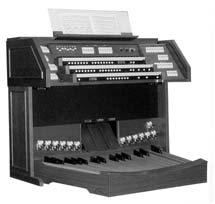
Cathedral Music 26
£6000 inc VAT Jubilate 332
3302 Cathedral Music MAY 06 v2 22/5/06 16:03 Page 26
“I am constantly being dismayed by the inordinate speed of some performances – not only by organists but by pianists and conductors. They seem to delight in finding how quickly they can get through a piece and create excitement. This only trivialises the music. With true and sympathetic understanding of the music excitement can be produced without excessive speed, the music being allowed to speak and convey its message in a natural way.
“Good cathedral music is that which makes us think, inspires and sends us away better people than when we went in. Didn’t Omar Khayyam have something to say on this? ‘Myself when young did eagerly frequent doctor and saint, and heard great argument about it: but evermore came out by the same door as in I went’”.
“It comes from singers understanding what they are singing about. A choir should not just be told to sing pp or ff but to put expression into the mysterious, perhaps in a hushed manner, or for joyful, let rip and raise the roof.”
When he was at the Minster it was either himself or his assistant who was taking Evensong, so there was no need to separate the job. “We were not both present except occasionally such as when I made an arrangement for piano and organ of RVW’s antiphon Let all the world. It was good for the choir as they were practised in singing unconducted and got used to looking across to the opposite side. That’s borne out by a great many tapes done under those conditions; you can’t tell they were not recorded with a conductor in front of the choir. The unanimity is quite OK.”
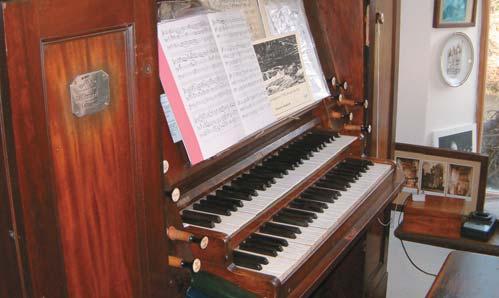

As I begin to tie up a few loose ends I ask him about FCM and his vice–presidency. “It is such a great comfort to know that there is this enthusiasm for keeping tradition alive and
supporting choirs.”
He tells me he is looking forward to travelling down to Wells Cathedral to hear the Exon Singers recording a CD of his compositions.
In his book on Bairstow, Dr Jackson informs us that ECB was writing his memoirs, I can’t leave without asking Jackson if has started his. “I have filled four exercise books in fits and starts but I can’t help wondering while I am writing whether people will think it is worth doing.”
“Do have some more moisture” I am asked as Dr Jackson gets up to refill the coffee from the flask prepared by Priscilla. He comments on his wife’s support and I leave the final words to him. “No man has ever had a more perfect help and I count myself more than fortunate to have had Priscilla at my side for 55 years, always understanding and sympathetic, encouraging, providing wise advice and at the same time managing our three wonderful children, Alice, William and Edward, coping with the lovely big house in Minster Court and now for 23 years, running our modest quarters here on the Yorkshire Wolds. I could not have had a happier life, not only for the unimaginable privilege of the Minster and musical fulfilment but for a completely ideal domestic state, which is entirely due to Priscilla. What can be better than every day having a very desirable way of working in an incomparable building, a superb organ and all the best church music you can find?”
Cathedral Music 27
3302 Cathedral Music MAY 06 v2 22/5/06 16:03 Page 27
40 Life begins at forty
Graham Wood
Recent reviews of the Exon Singers have heralded the choir as ‘wonderfully full-bodied, youthful… exciting and beautiful’ (Early Music America) with a ‘brilliant soprano sound’ (The Daily Telegraph) where ‘one is just swept along by the unabashed exuberance of the singing’ ( International Record Review ). High praise indeed – but who are the Exon Singers? Where do they come from? And why does the choir appear to be sponsored by a major oil company?
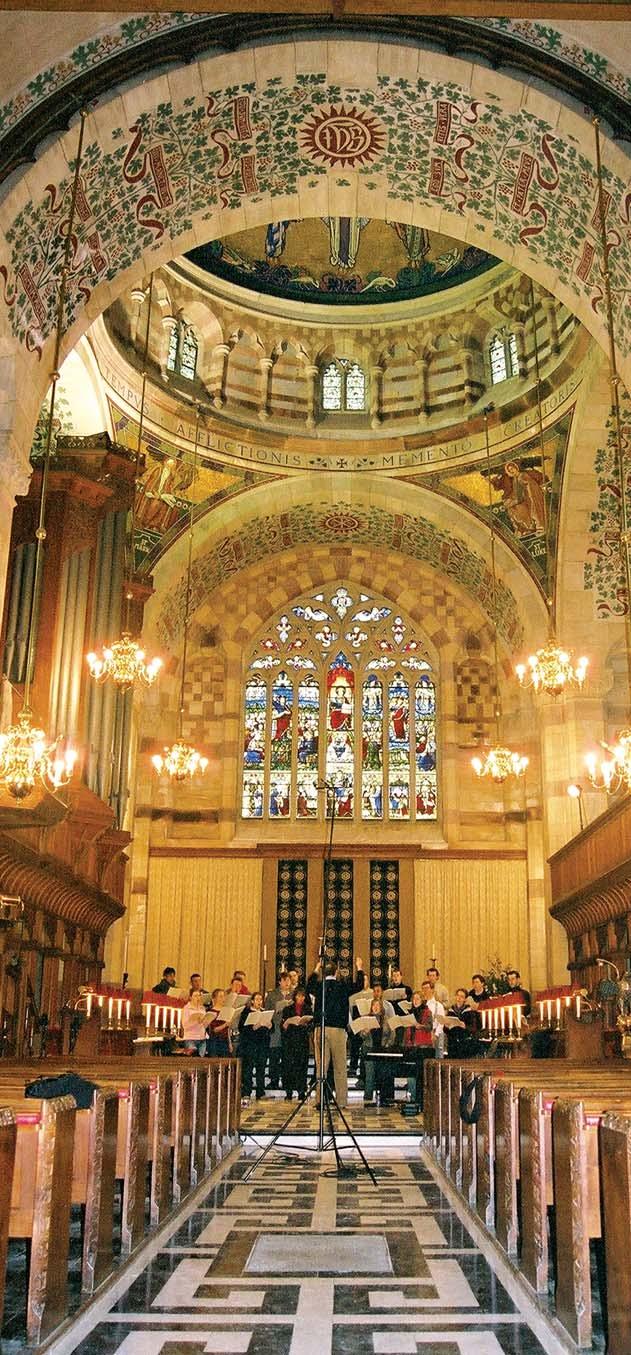
Well, the answer is quite simple: the group has, in fact, no oily connection with Exxon Valdez, but rather had its conception in the ancient city of Exeter – ‘Exon’ being the Latin name for that great English cathedral city (note the single ‘x’). The choir was founded forty years ago by a group of students from Exeter University who came together to sing services at the cathedral under the conductor Christopher Teuten, who had been a lay clerk there. It has had many well-known and highly acclaimed conductors, such as Christopher Tolley (Director of Chapel Music at Winchester College) from 1976-1992; Andrew Lumsden (currently Organist & Director of Music at Winchester Cathedral) from 1993-94 and Andrew Carwood (renowned tenor and Conductor of The Cardinall’s Musick) from 1995-97. Since 1997, the choir has been under the direction of Matthew Owens, currently Organist and Master of the Choristers at Wells Cathedral. In addition, some of cathedral music’s leading organists have been regular accompanists for the choir including Peter Barley, David Bednall, Stephen Farr, Scott Farrell, Andrew Lumsden, Jeffrey Makinson and Colin Walsh.
Forty years on, the make-up of the choir is quite different from the group of dedicated students which first swelled the choir stalls of Exeter Cathedral. Within the ranks of The Exon Singers are some of the finest young professional and semiprofessional singers in the UK, many of whom are lay clerks in the country’s finest choral foundations, and there are many well-known names which appear among the ranks of former Exon Singers: Emma Kirkby, James Gilchrist, Roderick Williams, James Oxley, Jeremy Davis (Precentor of Salisbury

Cathedral Music 28
3302 Cathedral Music MAY 06 v2 22/5/06 16:03 Page 28
Cathedral), David Hurley and Nigel Short, among others. The choir is recognised as one of the UK’s leading chamber choirs and has become renowned for its dynamic and expressive performances of music from the Renaissance to the present day. It broadcasts regularly on BBC Radios 3 and 4 and has made a number of highly acclaimed CD recordings. Whilst the group performs all types of choral music, it has recently received particular recognition for the commissioning of new works from some of the UK’s most exciting contemporary composers such as Richard Allain, Grayston Ives, Gabriel Jackson, Francis Jackson and George Lloyd.
The choir’s president is David Hill (Director of Music at St John’s College, Cambridge and Conductor of the Bach Choir), who writes, ‘Choral singing and the English choral tradition is at the heart of our national musical life. The Exon Singers are an intrinsic part of this heritage and their contribution of excellence in this field is unquestionable.’
The Exon Singers Festival
Since 1973, the choir has had a week-long annual festival based in the historic market town of Tavistock on the edge of Dartmoor, and includes the venues of Exeter Cathedral, Buckfast Abbey and Tavistock Parish Church. This is an open festival with such a wide variety of music performed that there is something to suit all tastes – from services of Compline by Candlelight to light-hearted concert performances – all in a beautiful part of the country.
Festival 2006, which runs from 23–30 July, will celebrate the 250th anniversary of the birth of Mozart and the centenary of the birth of Samuel Barber. It will also be commemorating the 50th anniversary of the death of Gerald Finzi.
The music of composer-in-residence David Briggs (Organist Emeritus of Gloucester Cathedral) will feature during the week, including a new work written for the choir which will be given its first performance during a live BBC Radio 3 broadcast of Choral Evening Prayer from Buckfast Abbey on Wednesday 26 July. Briggs, well-known for his exceptional skills as an improviser, will also be playing for this broadcast and improvising live, firstly, with organ versets between alternate plainsong verses from the Magnificat, and secondly, for the organ voluntary at the end.
Other highlights of Festival 2006 will include the launch of a CD of previously unrecorded works by Francis Jackson, a celebrity organ recital by one of the UK’s finest organists, Gordon Stewart, Choral Evensong in Exeter Cathedral, concerts in Exeter and Tavistock, a Lieder recital (which is an opportunity to hear new up-and-coming talent) and various Festival Services at Tavistock Parish Church. As a complete contrast, the lighthearted family concert will include the comical and highly entertaining Wind in the Willows by John Rutter.
Recordings
Recent recordings of the Exon Singers include music from the Spanish master of the golden age of polyphony, Tomás Luis de Victoria (Second Vespers of the Feast of the Annunciation: a reconstruction by scholar Jon Dixon which illustrates an astoundingly beautiful legacy of antiphonal sacred music devoted to the Blessed Virgin Mary); George Lloyd (Requiem and De profundis) and, most recently, a disc devoted to the sacred choral music of Francis Jackson – one of the elder statesmen of English choral music. This disc was recorded in January 2006 in Wells Cathedral, in the presence of the composer, and will be released by Delphian Records in July 2006 (www.delphianrecords.co.uk).

At the forefront of contemporary music
The group prides itself in being at the forefront of contemporary music. Just a glance at the composers-inresidence at its most recent festivals illustrates this. Last year, the choir was honoured by the presence of Dr Francis Jackson, OBE who wrote Magnificat & Nunc Dimittis (The Exon Service) and A Hymn to God the Father for the festival.
In 2004, Gabriel Jackson (no relation) composed a sublime setting of Ave Maria for the choir which had its first performance during the live BBC Radio 3 broadcast. The piece has recently been published by Oxford University Press.
Other composers have included George Lloyd (19131998) whose Requiem the choir first performed at the 2000 Oxford Festival of Contemporary Music and subsequently recorded on Albany Records (TROY 450); Grayston (Bill)
Ives whose Magnificat & Nunc Dimittis (The Exon Service) was first performed in Exeter Cathedral, during Choral Evensong in the 1998 Festival; and Richard Allain, whose Magnificat & Nunc Dimittis (The Exon Service) was also first performed in Exeter Cathedral, during Choral Evensong and subsequently recorded by the Choir of St Mary’s Cathedral, Edinburgh, on Delphian Records (DCD34017).
Friends and Benefactors
The choir is a non-profit making organisation and relies on ticket sales at the festival and other concerts in order to survive. It also has Friends and Benefactors who support the work of The Exon Singers. Privileges for Friends and Benefactors include: invitations to exclusive events; acknowledgments in all concert and festival programmes; advance notice of concerts, new CD releases and the Exon Singers Festival; reserved seating; and discounts on CDs. Further details are available on the choir’s website: www.exonsingers.org.uk
Reviewers remark ‘The Exon Singers… are not as wellknown as some of the high-profile British ensembles but they easily surpass many of them’ (Early Music America) so you should perhaps take the opportunity to hear this choir and decide for yourself by joining them at the 40th anniversary Exon Singers Festival, 23–30 July 2006.
Graham Wood is Honorary Secretary of The Exon Singers
Cathedral Music 29
3302 Cathedral Music MAY 06 v2 22/5/06 16:03 Page 29
J.S.Bach to Lübeck Following
Peter Dyke © 2006
In the late autumn of 1705, when Bach was twenty years old, he undertook what was to be the longest journey of his life. Having arranged to take a month off from his post at the Neuekirche in Arnstadt, he set off, on foot, for the coastal city of Lübeck, about 260 miles to the north. His motivation for such an arduous trek was, as we know, his wish to hear, meet and learn from the organist of the Marienkirche, Diderik Buxtehude, then in his 69th year and approaching the end of his distinguished career at the city’s greatest church. In the end stayed away from Arnstadt for four months rather than four weeks, and faced some hostile questioning on his return concerning his unauthorised absence.
Bach’s pre-eminent position in musical history is a fact we take for granted. The extraordinary quality of his output is shown by his continuing influence today; it is not unreasonable to claim that almost every day I encounter his music, be it while rehearsing (say) one of the Passions with the cathedral choristers, teaching the harmonic intricacies of Bach chorales to a sixth-form class, playing one of the organ works as an Evensong voluntary, or simply listening for pleasure. For a musician who never left his home country to have such a strong effect on another living 300 years later in a provincial English city is no mean feat. Bach’s journey to Lübeck in 1705 has always fascinated me. If, as we suppose, he walked all the way, how long would it have taken him? What must the travelling have been like in the German winter? What were Bach’s impressions of the journey and of the cities through which he passed on the way, and how did his stay in Lübeck affect his

Cathedral Music 30
‘Bach’s pre-eminent position in musical history is a fact we take for granted. The extraordinary quality of his output is shown by his continuing influence today; it is not unreasonable to claim that almost every day I encounter his music...’
3302 Cathedral Music MAY 06 v2 22/5/06 16:03 Page 30
The statue of the young Bach in Arnstadt’s town square.
subsequent musical style and philosophy? With all these questions in mind, I decided to mark the 300th anniversary of this remarkable journey by following Bach’s route for myself, making recordings of my own impressions along the way for a short series of programmes for BBC Radio 3.
I regret to say that the idea of actually walking the route myself was eliminated at a relatively early stage. I doubt that I could match Bach’s level of fitness, and I had only a week to spare. Moreover, the country roads, though attractive enough, lack the scenic interest and walker-friendliness of a modern long-distance walk. Hiring a car offered the necessary flexibility and freedom to explore interesting sites en route However, like Bach, I would be arriving in towns along the way with no idea of what the place was like or where I would be staying! So, having flown to Altenburg (near Leipzig) from Stansted, I set off for Arnstadt, about 80 miles to the west.
Arnstadt is a very attractive mediaeval town on the edge of the Thuringian forest Bach’s connection with the town is evident; there is a statue of the young composer in the main square and many of the buildings in which he and members of his family lived and worked are clearly indicated. The 18year-old Bach had been engaged in 1703 to advise on the building of a new Wender organ in the town’s Neuekirche (new church) and was very shortly afterwards offered the job of organist there – his first proper post. The church is not particularly large, but the many galleries around three sides allow for capacious seating. The organ is now restored to its 1703 glory, along with its straight pedalboard (no bottom C sharp) and specific bell stop used to alert the wind-pumper to start work! The original console (with very worn pedals) now resides in the town’s museum. On the Sunday morning, I was lucky enough to attend the morning service, which included an orchestral performance of Bach’s cantata no.178, Wo Gott der Herr nicht bei uns hält. My first ever experience of recording with an interviewee, let alone in German, was with the church’s organist and choirmaster, Gottfried Preller, who explained that, since 2000, a cantata has been performed liturgically in the church once a month to a congregation of between 250 and 400; attendance on other Sundays being around 50 – 60. The two candlesticks on the console are necessary still, as concerts are often performed by candlelight. His impression of the young Bach was that he was a headstrong young man, desperately keen to learn as much as possible about all types of music. After his return from Lübeck, it seems that the congregation were aware Bach had learned much from Buxtehude, although the increased confidence and harmonic intricacy were not universally welcomed. Maybe Bach was not worlds away from the many organists today who enjoy dazzling their bemused congregations with their radical re-harmonisations!
During my brief stay in Arnstadt I made the short trip to Dornheim, a small village just to the east of the town, to visit the church where Bach married his first wife, Maria Barbara, in 1707. How different his career might have been if, at Lübeck in 1705, he had opted to marry Buxtehude’s daughter and therewith succeed her father as organist at the Marienkirche!
Shortly after the end of the Sunday morning cantata service, I began the journey north towards Lübeck. There is, I believe, no evidence to indicate which route Bach took on the 260-mile trek. The very helpful staff of Arnstadt’s Tourist Information Office had found for me a copy of a translation of Kerala Snyder’s 1986 Musical Times article1 in which she suggested his route may have been via Gotha, Mühlhausen, Duderstadt,
Seesen, Braunschweig or Hannover, Lüneburg and Mölln. I was very happy to go along with this; Bach would have been familiar with the journey to Lüneburg following his years spent at the Michaelis-Schule there, and it seems very reasonable for him to choose to go to the west of the Harz Mountains, bearing in mind the likely harsh winter weather. It was tempting to imagine that, 300 years earlier, Bach, too, had begun his great adventure on a Sunday afternoon or evening, thus making the quickest possible getaway after his Sunday duties.
Less than ten miles from Arnstadt, I had an idyllic al fresco lunch at the village of Wechmar. This tiny village is the first place in Germany known to have been home to members of Bach’s family; Veit Bach, Johann Sebastian’s great-greatgrandfather, settled here in the 1500s. In the village’s Bach Museum, there are several beautifully-decorated family trees showing the composer’s genealogy. Veit Bach used to run a bakery: I wondered if this was still being run by members of the family in 1705 when Bach was passing through, perhaps enabling him to obtain a cheap meal!
A few miles further on, the city of Gotha is dominated by the magnificent Schloß Friedenstein. This grand palace would have been only sixty years old in 1705 and would have made quite an impression upon an approaching traveller, perhaps more so than it does now, partially obscured as it is by suburban developments.
My first night ‘on the road’ was spent at Mühlhausen, the walled city where Bach was to have his next organist’s post, at the Divi-Blasii-Kirche. I stayed at the Hotel ‘Brauhaus zum Löwen’, but any romantic speculations I may have had that Bach might have enjoyed a beer at this particular brewery 300 years ago seemed unlikely after my interview with the hotelier, Martine Laufer, who explained that in the eighteenth century each house tended to brew its own. Perhaps Bach’s experience of the city’s beers was a factor in his decision to apply for a job here two years later! It must certainly be possible that, if he did visit Mühlhausen on the way north, he could have made some useful contacts here.
Before I left the city on the Monday morning, I visited the DiviBlasii-Kirche, where Peter Lazarkow told me about the history of the church and Bach’s connection with it. The organ in the west gallery now is a three-manual neo-classical instrument dating from 1958. The church, like much of Mühlhausen, was undergoing comprehensive restoration in 2005, a pattern I saw repeated throughout the former East Germany.
Later that day, I reached the point where the route crossed from Thuringia into Lower Saxony, from the former East to the West, near the village of Teistungen. There is an excellent Borderland museum here, where I recorded a fascinating interview with Anna Meitzner, who now works there as a volunteer. I was shown round the museum’s exhibits, which included pictures of the 1960s border defences, sections of the barriers, mock-ups of the customs offices and much more. Anna had lived in the East and was distinctly sceptical about the benefits of German reunification, citing soaring unemployment rates and increasing social segregation. If Bach travelled this way, he would have found this state border much easier to cross in 1705 than a resident of Thuringia would have done during the 1960s or 70s.
After brief stops in the towns of Northeim, Seesen and Wolfenbüttel (all disappointingly devoid of evidence that Bach had visited), I arrived at Braunschweig, the largest city on the route. An exploration of the centre revealed that there was to be a concert at 10.00 that night in the city’s cathedral. This turned ➤
Cathedral Music 31
3302 Cathedral Music MAY 06 v2 22/5/06 16:03 Page 31
out to be a profoundly atmospheric occasion, as words and music (for violin, organ and piano) were carefully chosen to examine the history of the building during Nazi rule, and specifically Hitler’s visit to the city exactly 70 years before. As far as I could understand from the German introduction, the enthusiastic local commandant had sought the Führer’s favour by stripping the cathedral of its Christian and Jewish symbols, replacing them with Nazi paraphernalia. The sombre character of the evening was further enhanced by the cathedral’s bells pealing amidst a dramatic thunderstorm outside. The organist at the concert, Witold Dulski, is from Poland, and had no idea of the building’s history when he accepted his post at the cathedral. There is a very impressive music programme there with choirs, instrumental groups and a symphony orchestra.

The following morning I set off north across the Lüneburg Heath, stopping briefly at the towns of Gifhorn and Uelzen, on the way to Lüneburg itself. My main intended destination in the city was the Michaeliskirche to the north-west of the centre. This church was attached to the school Bach was dispatched to at the age of fifteen; he received a free education in return for singing at the church’s services. During the three years he spent in Lüneburg, the young Bach took full advantage of the musical opportunities on offer in the area. Perhaps most significantly, he would have heard the playing and compositions of Georg Böhm, organist at the Johanniskirche, a most impressive building with five high aisles and a fabulous sixteenth-century organ in the west gallery. He also travelled on more than one occasion to Hamburg, where he would have met and heard the elderly organist of the Catherinenkirche, Johann Adam Reincken.
George Sixsmith &Son Ltd Organ Builders
The evening I was in Lüneburg, a recital was being given by Barry Jordan on the historic organ in the Johanniskirche. Hearing Bach’s great Prelude and Fugue in C minor (BWV 546) on an instrument that pre-dates equal temperament adds hugely to the listener’s appreciation of the steady and painstaking progress through various dark and minor key areas to the eventual arrival at a perfectly-tuned C major chord at the end. It struck me that Bach may well have found inspiration for such a large-scale and carefully-integrated piece of music in the steady and painstaking progress of the vast journey he was making to Lübeck, with its promise of the eventual great Tierce de Picardie soon to appear as the inevitable destination on the horizon. It is this sense of the journey through a large-scale work of Bach’s that seems to set his music apart from that of his great predecessors such as Buxtehude and Böhm, and prepares the way for the symphonic sonata form movements of Beethoven, Brahms, Shostakovich and others.
I was sorry to leave Lüneburg, with its beautiful buildings and squares, but one more day’s journey separated me from the final destination of the journey. The seventy miles to Lübeck would probably have been the only completely unknown territory for Bach. It seems likely that he would have followed the old salt route (Salzstraße), which runs in almost a straight line between the two cities. A few miles north of Lüneburg, at the village of Artlenburg, this route crosses the River Elbe. The river here is broader than any Bach would have known in Thuringia and he would have had to cross by boat; there is still evidence of landing stages on either side, though now the river is crossed by bridge a few miles upstream, at Lauenburg.
Just north of the river, near the village of Schnakenbek, I
Cathedral Music 32
We provide all types of new instruments New Organs Restoration Rebuilding Tuning Maintenance We can give unbiased advice for all your requirements Hillside Organ Works Carrhill Road, Mossley Lancashire OL5 0SE Tel: 01457 833 009 Fax: 01457 835 439 3302 Cathedral Music MAY 06 v2 22/5/06 16:03 Page 32
picked up the salt route again. This section of road, a narrow cobbled lane between high hedges, was the most evocative of any I had yet travelled: little would have changed since Bach explored it 300 years before. The last major town before Lübeck was Mölln, whose mediaeval town centre is largely surrounded by water. Because of Mölln’s strategic position, it would be almost certain that Bach would have passed through, probably (as I did) having a look inside the main church, which again contains a historic organ, though this has been much restored since 1705. Mölln is famous for being the site of the death of Till Eulenspiegel.
After such a tremendous journey, the excitement Bach must have felt as the spires of Lübeck’s city centre began to appear over the horizon can be imagined; even after only five days’ travelling, I could share something of the sense of anticipation. There are five great ancient churches in the city, with seven soaring spires between them. Would Bach have known which of these belonged to the Marienkirche? I walked into the centre from the south, as he must have done, and found the church without difficulty. Even now, the Marienkirche in Lübeck is the third largest church in Germany (after Cologne and Ulm) and would therefore have been the largest building Bach ever saw. I am sure he would have been amazed by its sheer size and height, even before he met the great Buxtehude or heard the organs there. I spent a good couple of hours inside the building just absorbing the atmosphere and discovering the features about which I’d read beforehand: the huge west end Kemper organ, thought to be the largest mechanical-action church organ in the world; the four-manual Totentanz organ (1986) in the chancel; the astonishing astronomical clock in the north transept; and, most poignantly, the remains of the wrecked bells, allowed to stay on the floor beneath the south-west tower in the place where they fell as the church was being destroyed by fire during the Allied air raid on the night before Palm Sunday 1942. This destruction of the church in the war of course explains not only why the historic organs and ancient astronomical clocks no longer exist, but also why the church has a light and uncluttered feel, relieved of much of its previous lavish Baroque ornamentation. Rebuilding of the church was begun in 1947, but not completed until 1980, when the restored ridge turret was added.
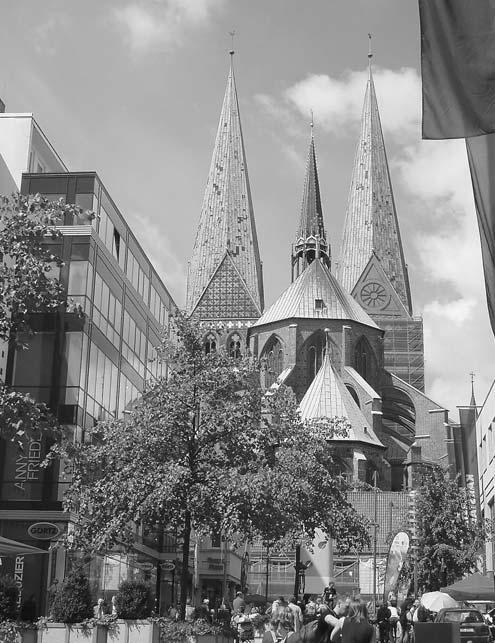
It is easy to see why Bach decided to stay for four months! The ‘music programme’ at the church in the eighteenth century would have been unlike that of any other church, with the frequent Abendmusiken (music evenings) and church orchestras and choirs. It seems very likely that Buxtehude would have taken advantage of the young Bach’s talents, probably asking him to play the violin in the orchestral concerts and services. Bach copied very many of Buxtehude’s compositions, carefully carrying these precious copies all 260 miles back to Arnstadt through the ferocious German late-winter weather. The Abendmusiken tradition continues today: on the evening of the day I arrived, there was to be a recital consisting of Messiaen’s Livre du Saint-Sacrement, played very impressively by the church’s organist, Ernst-Erich Stender. The following evening he gave a more informal concert, which included a complete transcription of Beethoven’s Fifth Symphony
Before leaving Arnstadt, I had speculated on how Bach’s life and work were influenced by his visit to Lübeck. It is evident that Buxtehude had a considerable and well-deserved reputation, about which Bach would have learned while he studied in Lüneburg as a teenager. I expected Bach to have come away from Lübeck with an awareness of the limitations of the older composer’s style and a determination to write music that was less sectional and more ‘through-composed’. Having spent time in Lübeck, however, I wondered if Bach continued to hold Buxtehude in high regard right through to the end of his career. The extraordinary energy and resourcefulness which he brought to his orchestral and choral compositions at the Thomaskirche in Leipzig can perhaps be seen as an attempt to equal the grandeur and impressiveness of the music he would have heard and participated in at Lübeck’s Marienkirche during those few precious weeks in the winter of 1705-6. If this is the case, then the headstrong young composer’s reckless decision to risk his job in Arnstadt by staying away for four times his allowed leave has benefited us all immeasurably.
Notes
Cathedral Music 33
Peter Dyke is Assistant Organist at Hereford Cathedral ©.
1Kerala Snyder, 1986, tr. M.Botsch, 2005, Nach Lübeck in den Fußstapfen von J S Bach.
‘Maybe Bach was not worlds away from the many organists today who enjoy dazzling their bemused congregations with their radical re-harmonisations! ‘
3302 Cathedral Music MAY 06 v2 22/5/06 16:03 Page 33
The restored Marienkirche in Lübeck and surrounded by post-war development.
A Choral Foundation on Fifth Avenue
A brief look at the story of the music programme of Saint Thomas Church, Fifth Avenue in New York. Founded in 1823.
5th
Gerre Hancock
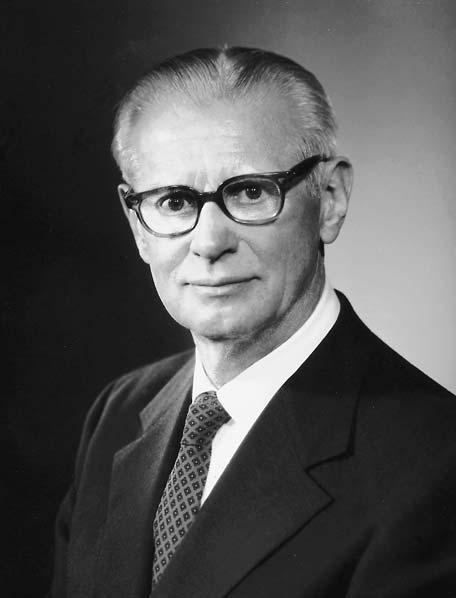
Iwas called in 1971 by the tenth rector, the Rev. Frederick M. Morris, to become the church’s 20th organist and choirmaster. A mild curiosity prompts the observation that musicians early in the history of St Thomas enjoyed an average tenure of about seven years while the average tenure during the last century and a quarter has been more than 20 years. What all this means is open to interpretation by numerologist and philosopher alike – dare one conjecture an increased seriousness of purpose coupled with the space of years required to work toward everincreasing goals? But this is a question for theologians and musicologists to ponder during the next 175 years! Dr. Morris was a rector for whom one wanted to achieve the very best in music and the very highest in musical standards. While he professed musical ineptitude, his modesty disguised a sensitive ear for the vocal and organ contributions to the parish worship. He brought out the very best in his staff.
During my many years at St Thomas, my associates and I have made every effort to build the music ministry upon the great foundations laid by those master musicians from 1870 onward. For example, one of the first tasks at hand was to increase the repertory of music available for the choir to sing, adding works from an ever broader and wider historical and liturgical range of musical expression.
Immediately in this endeavor, extensive attention was given to developing the chant, both Anglican and Gregorian; this musical form, unique to the Christian church, is the very bedrock of the church’s music. From here the quest for an ever-growing repertory

Cathedral Music 34
William Self, Organist and Choirmaster 1954-1971
3302 Cathedral Music MAY 06 v2 22/5/06 16:03 Page 34
The Choir in procession; background photograph is that of T. Frederick and H. Candlyn, Organist and Choirmaster
naturally looked toward the music of the Renaissance, both Continental and British, Roman Catholic, and Anglican. During the early days of Dr. Noble’s career on Fifth Avenue, for example, he regularly inspected new gifts and old manuscripts acquired by the New York Public Library, transcribing them for performance at St Thomas Church long before they were published or even thought suitable for modern congregations. Inspired by this example, every new publication now is greeted with the same enthusiasm and with the ever-present hope that such music, old and new, might enhance the worship of Almighty God, be it Tallis or Tippett, Byrd or Britten, Purcell or Parry, Bach or Brubeck, Brahms or Bernstein, Stanford or Stravinsky. Provided the music suits that one-and-only sound, the unchanged boy soprano’s voice, and that one-and-only moment, the very presence of Our Lord in His Church, new works are assayed; some remain, others are replaced during the passage of years.
The parish’s enterprise in commissioning new musical works from outstanding composers has borne much fruit during the past few decades. Of course, some of the parish musicians have themselves composed works for the church. As we have seen, Warren and Macfarlane left us solid works that are frequently performed, and Noble and Candlyn were prolific writers of music for the church. I have composed many works for choirs, brass instruments, organs, and orchestras far and wide. In celebration of the Choir School’s 50th anniversary, Randall Thompson was commissioned to write a delectable work for treble voices, The Place of the Blest During the past few years, Gunther Schuller, about whom we learned earlier, and Conrad Susa each composed stunning settings of the Evening Canticles for the choir. Ned Rorem has written two works on commission for St Thomas Church.
All this flurry of activity has led quite naturally to recording projects, which have been completed at the rate of about one album per year, no less than 18 of them being in print at this time. The choir and organs of St Thomas have been featured on discs – recorded by the American firm of Gothic Records, the American/Austrian firm of Koch International, and the British firms of Decca/Argo and Priory Records – exemplifying the repertory of our liturgies in chant, canticle, and anthem. Joining artists of other styles, such as opera stars Leontyne Price and Jessye Norman as well as singing star Judy Collins, in recording projects has been a treat not available to many choirs.
An intriguing piece of work with the composer and singer Carley Simon was created in the late ‘80s. Miss Simon was asked to compose the score for the Hollywood film, Working Girl. Having visited St Thomas Church for Evensong on several occasions, she fell in love with the sound of the choir and wrote some very beautiful songs for the film especially intended for the quality of its voices. The final result in the movie was altered somewhat from the original sound track, but that recording retains the choir’s singing as she intended. In fact, the most popular song from the picture, Let the River Run (also known as The Wall Street Hymn), won the Oscar that year for ‘Best Song Composed for a Film.’
With the express purpose of extending the parish’s outreach to a wider community, a Concert Series was begun in the early ‘70s. Works that are just right for the time-honored choral forces of men and boys, the historical precedent for which is abundant and, indeed, the norm until relatively recently in Western music history, have been featured. From settings of the Passion of Our Lord by Renaissance and baroque composers such as Schütz and Bach, to the celebrated and always popular Messiah by Handel, masterpieces by Purcell,
Fauré, Bernstein, Walton, Stravinsky, and many other composers have been performed within the exquisite architectural setting of Dr. Cram’s edifice – the sort of setting, visual and acoustical, for which these works were intended.
The list of works performed with such distinguished instrumental ensembles as the Orchestra of St Luke’s and with period or early instrument groups such as the Concert Royal and the New York Collegium would be of considerable length. Performed regularly are the aforementioned Passion settings by Johann Sebastian Bach, of both Saints Matthew and John, as well as that master’s Mass in B Minor, Magnificat in D, and numerous cantatas and smaller Mass settings. George Frideric Handel (the German spelling of whose middle name I retain) is also represented by his stirring Coronation Anthems and his compelling oratorio, Israel in Egypt. Also important are works of the woefully neglected English composer Henry Purcell that find pride of place in any Anglican musical community; here have been sung the Ode for St Cecilia’s Day, the Te Deum, the Jubilate Deo, and the Coronation Anthems, performed, as were the previously noted Baroque works of Bach and Handel, with the Concert Royal.
Requiem settings by such diverse composers as Victoria, Michael Haydn, Mozart, and Fauré have been heard several times, as have the classic settings of the Mass by composers of the Viennese school, including the Haydn brothers, Mozart, Schubert, and Beethoven. Holst’s Hymn of Jesus, Britten’s Saint Nicolas, Stravinsky’s Symphony of Psalms and Mass, and Walton’s The Twelve were all given energetic readings by chorus and orchestra alike. More recent works of such composers as Susa and Schuller were premiered as a part of the Concert Series. Financial support for the series has come entirely from outside the parish’s music budget; indeed, contributors to its Friends of Music number in the hundreds of faithful, appreciative, and devoted music lovers throughout the metropolitan area, followers of what is thought by many to be, as Father Andrew so succinctly put it, “a civilizing influence in a great city.”
Visiting choirs from Britain such as those from the chapels of King’s and St John’s Colleges, Cambridge; Westminster Abbey; Westminster Cathedral; St George’s Chapel, Windsor Castle; and the cathedral choirs of Canterbury, Norwich, and London have all performed at St Thomas Church. The Vienna Boys’ Choir, the Thomanerchor from Leipzig, the Kreuzchor from Dresden, and the Copenhagen Royal Chapel Choir of Denmark have all sung here. The St Paul’s Cathedral Choir sang daily services here in the year 2000 as part of a choir
Cathedral Music 35
‘ ➤ 3302 Cathedral Music MAY 06 v2 22/5/06 16:03 Page 35
‘During my many years at St Thomas, my associates and I have made every effort to build the music ministry upon the great foundations laid by those master musicians from 1870 onward.
exchange with the St Thomas Choir, which had earlier sung daily services at their cathedral in London.
A world premiere that garnered international attention took place at St Thomas Church in 1985. Composer Andrew Lloyd Webber, known principally for his works for the theater, had just composed a colorful and moving setting of the ancient words of the Requiem. The composer requested that the St Thomas Choir perform alongside the Winchester Cathedral Choir, together with Placido Domingo and the Orchestra of St Luke’s, in singing and playing this exciting work in concert. The British Broadcasting Corporation sent a large crew from London to film and telecast this glittering occasion. Andrew’s father had been one of Britain’s finest church musicians; commemorating him in this fashion in New York was indeed a moving occasion that commanded wide press coverage and afforded boy choristers from both sides of the Atlantic an opportunity to work together in a mighty venture.
The interest of the BBC was quite serious, for the St Thomas Choir was broadcast by means of live recordings throughout its worldwide network, beginning in Great Britain and Europe. Two services of Choral Evensong, with the Office sung by Father Andrew, were recorded each year live at the church for broadcast over many years.
Beginning in the mid-’70s, an annual workshop for church musicians was instituted at St Thomas. Each spring, during the post-Easter lull, a British musician with expertise in the training of boys’ voices and in building ensembles with men’s and boys’ voices is brought to work with the St Thomas Choir in the presence of other choirmasters and organists who attend the workshop. The idea is primarily to learn by observing a master English musician work with American boys, all within the acoustical and liturgical setting of St Thomas Church. Luminaries from abroad who have led the conferences include, among others, Sir David Willcocks, Sir David Lumsden, Dr.
George Guest, Dr. Stephen Cleobury, Dr. Christopher Robinson, and the very first director, Dr. Barry Rose.
International tours became a significant feature of the choir’s life in the early 1980s when the choristers journeyed to England to participate in the Aldeburgh Festival at the invitation of Sir Peter Pears. At the same time, an invitation to sing daily services of Choral Evensong in the incomparably beautiful chapel of King’s College in Cambridge arrived, marking the first time a choir from the United States was so honored. A few years later the choir returned to Cambridge, this time to be one of the spotlighted choirs for the Fourth International Congress of Organists; a concert in that same chapel was given, and afterward the choir remained in residence at Westminster Abbey, where the choristers sang services of daily Choral Evensong. Other appearances included singing in the Chapel at St John’s College, Cambridge, the ‘other Abbey’ in St Albans, and an appearance at the King’s Lynn Festival. In the early ‘90s, the choir toured Italy and Austria, singing in the great cathedral churches of Venice, Trieste, Salzburg, and at the Augustinian Church in Vienna. A concert and a service of Festival Evensong were sung at the 1992 International Music Festival of Dublin in the presence of the President of Ireland; the setting was the awe-inspiring Cathedral of St Patrick. These tours provide learning experiences for students of all ages, and, even more importantly, the opportunity to sing God’s praises in churches in many places and for many audiences and congregations.
Several domestic tours have taken the choir to venues in great American cities. The St Thomas Choir was the choir-inresidence at the Third International Congress of Organists in Philadelphia; the choir also appeared at national conventions of the American Guild of Organists in both Washington and New York. At the time of the nation’s Bicentennial celebrations, the choir sang in the presence of Queen Elizabeth II and President Ford in Washington National Cathedral. Other tours have taken the singers to perform in concert in such cities as Boston, Hartford, Springfield, Charlotte, Orlando, Tampa, Sarasota, Naples (the Floridian version), Cincinnati, Houston, Denver, Los Angeles, San Francisco, Chicago, Detroit, Kansas City, Little Rock, and, of course, Lubbock, as well as in many other lovely halls and
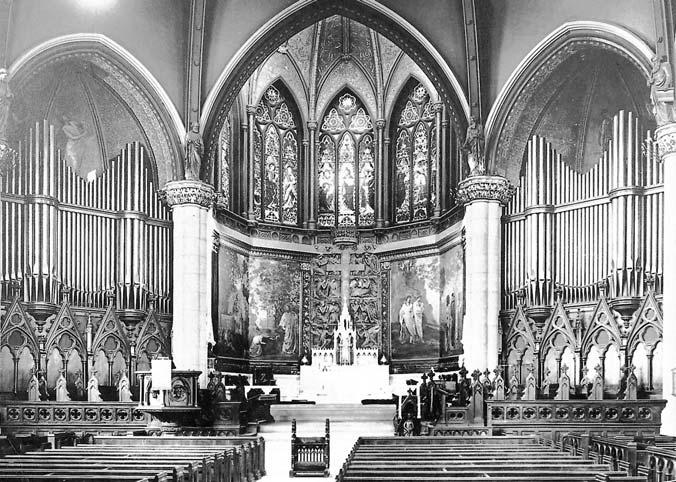

Cathedral Music 36
3302 Cathedral Music MAY 06 v2 22/5/06 16:03 Page 36
The Chancel Organ Case, designed by Bertram H. Goodhue, 1914; The Nineteenth Century Church Chancel, Richard Upjohn, Architect
churches in the New Jersey, Connecticut, and New York regions. Many friends were cultivated on these colorful and educational sojourns.
At the present, besides offering a full annual concert series with orchestra, the St Thomas Choir of twelve men and 18 selected boys sings at six weekly major worship services of the parish, preparing an astounding 400 pieces of sacred music a year. The Gentlemen of the Choir are professional singers, and the boys attend the St Thomas Choir School, the only churchrelated residential choir school in the United States and one of only four similar schools remaining anywhere in the world.
During the course of almost every school year and liturgical season, the St Thomas Choir is invited to appear either on radio or television, usually on one of the major networks such as ABC, CBS, NBC, and Public Television and Radio. This is a true delight for the young musicians whose eyes feast on all the electronic equipment, lighting techniques, and interesting show folk. Rising before dawn to appear for makeup sessions seems not to bother in the least choristers of all ages, proving that the role of the performer is inherent in each and every one of them. The networks have come often to St Thomas Church to film and telecast live services of Lessons and Carols and the thrilling Mass of Christmas Eve, when the irresistible Charpentier Messe for that mystical service is performed with an orchestra of period instruments, evoking the majesty of Notre Dame or the chapel at Versailles.

Judith Hancock’s brilliant playing of the accompaniments and the literature for the organ has throughout the years been an inspiration to countless worshipers and recital-goers. She has, as associate organist and master of choristers, set the standards in the organ field on this very same corner of Fifth Avenue. The excitement she brings to the music in transferring it from the page, by means of the keyboard or the singers’ voices, is well known and admired by all. She strayed from this fold for a spell, taking charge of the music at two churches of St James, one on Madison Avenue and the other (that of -the-Less) in Scarsdale,
where she performed with her usual energy and dedication; this represents the very best in music for the church, and it is no secret that the parish owes her an incalculable debt, even though her work is usually invisible but joyfully audible.
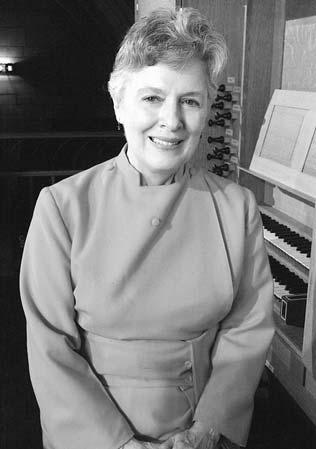
Still other assisting musicians from the recent decades of St Thomas also enjoy conspicuous and influential successes in their various callings and places of worship, for all have become, like so many of their predecessors, leaders in the field of church music in America. Michael Kleinschmidt, who presided at the Church of All Saints, Ashmont, is now associate musician at Trinity Church, Copley Square, also in Boston; Peter Stoltzfus, himself a successor to Mr. Ostlund, that former assistant organist of the parish, leads the music in worship and in concert at the celebrated Plymouth Church of the Pilgrims in Brooklyn; and Patrick Allen is organist and choirmaster of Grace Church in New York. The brilliant Thomas Bara now serves with enthusiasm and artistic grace as assistant organist on the music staff. The parish has been extraordinarily fortunate in sharing the worship of Our Lord in the context of such gorgeous music.
The music is enhanced by its acoustical environment, often called by experts ‘the most beautiful voice in the choir’ or the ‘most important stop on the organ.’ However, this gift had to be claimed, if not wrenched, from the very stones of St Thomas Church. Dr. Cram had used lightweight and virtually indestructible tiles built by Rafael Gua-stavino to construct the ceiling of the church’s interior. Those tiles, enormously porous, absorbed both spoken and musical sound most efficiently, so that there was little reverberation within the
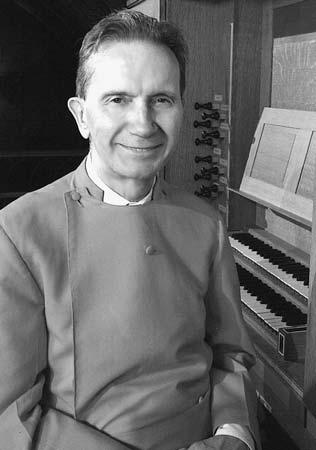
37 ➤
Cathedral Music
Gerre Hancock
Judith Hanccck
3302 Cathedral Music MAY 06 v2 22/5/06 16:03 Page 37
The Choir awaits T. Tertius Noble’s direcction, around 1938
building; in other words, the building did not sound as it looked. In less cultivated circles, St Thomas Church in those days was even described as ‘dead as a doornail’ or, less elegantly still, as a ‘pillow factory.’ By fits and starts, experimental work was done from the mid-’50s in an attempt to seal the countless little pores in each tile. After the fortuitous discovery of a set of light fixture holes in the ceiling, occasioned by an earlier move of the chandeliers, suspended scaffolding operated by hydraulic lift was able to be used, which made this vast project literally within reach of skilled craftsmen in the early 1980s. In this way, for the first time the glory of sound was created within this glorious church. Its acoustics are now widely admired in the world of music.
For 24 of the past 29 years just described, the Revd Canon John Andrew was the guiding light for music and worship at St Thomas Church. It was his vision, aesthetically and musically, that provided the inspiration for the effort to build upon the earlier visions of Dr. Stires and Dr. Noble and their successors. Father Andrew was fond of reminding his staff that he would never let them off or let them down, a stance that proved to be true through the decades of his leadership. No musical venture was too bold, no note too high or too low, no language too exotic or too plain, no work too long or too short, no organ chord too soft or too loud, for him to discourage. You who read these words are hearing this from his “Organgrinder” of many years, toward whom he showed such patience and appreciation and affection. One cannot help but observe that any rector who requests Stanford and Parry must be as great a rector as one could pray for, and that rector’s name was John Gerald Barton Andrew.
St George’s School Windsor Castle
Pre-Preparatory and Preparatory Day and Boarding School for Boys and Girls 3-13 years.
•High quality education and traditional values
•Co-educational policy within a prep school environment
•Opportunities for boy choristers to sing in StGeorge’s Chapel
•Five day academic week with flexible boarding arrangements
•Purpose built & equipped Nursery & Pre-Preparatory Dept
•Extensive playing fields and heated indoor swimming pool
•Secure environment for pupils within the Home Park
Chorister Open Day Saturday October 7th
VOICE TRIALS
For Boys (7 1/2-91/2 years old)
Saturday November 4th 2006
Open Auditions will be held for Choristerships (worth up to 50% of the school fees, plus one award of 100%)
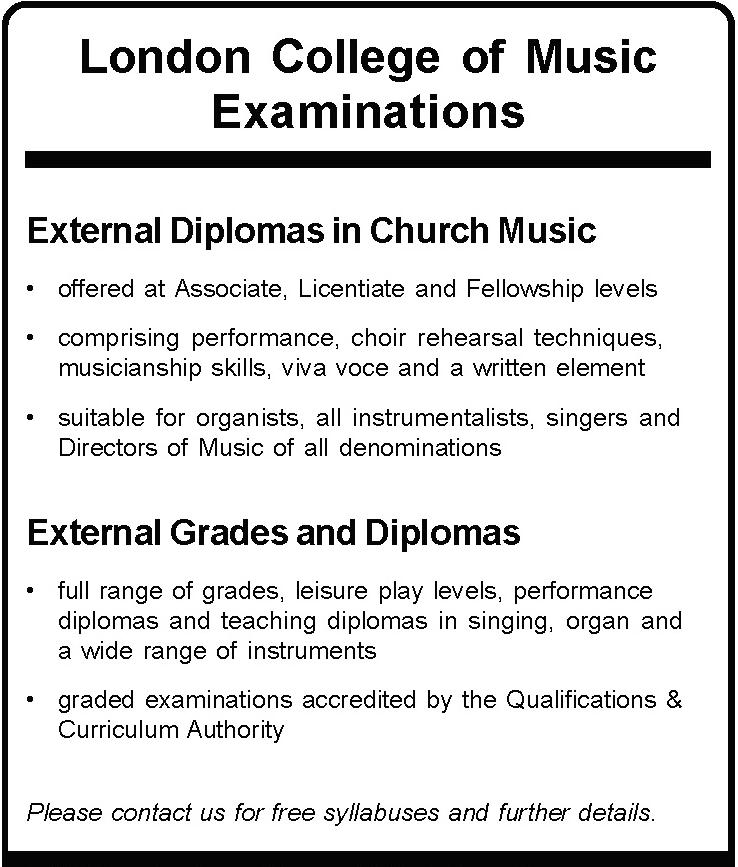
J.Roger Jones,Head Master
St George’s School,Windsor Castle
Berkshire SL4 1QF
Tel:01753 865553Fax:01753 842093

e-mail:registrar@stgwindsor.co.uk
Website:www.stgwindsor.co.uk
This being said, one does not wonder at the anxiety caused by Father Andrew’s departure. But, as the saying goes, God must surely love St Thomas Church very much, for he sent to us still another rector whose energy, imagination, wisdom, and style are carrying the parish onward in the search of ever higher standards and new songs in what often seems a strange and barren land, this glorious and maddening and challenging and wonderful phenomenon called New York City. Father Andrew Mead shows the depth, breadth, and width of his commitment to St Thomas Church. Much has been and is being accomplished by his sterling commitment to the Church and Choir School. After all, any rector who requests the music of Gibbons and Weelkes must also be as great a rector as one could pray for.
After some 33 years at the helm of this choral foundation, I moved in 2004 to my alma mater, The University of Texas at Austin, where my beloved Judith and I are hard at work in building a programme of sacred music studies at the School of Music there. Once again God has smiled upon St Thomas Church in giving her a new Organist and Director of Music, John Scott, who moved from his similar post at St Paul’s Cathedral, London. John Scott, the third Englishman to take the reins of musical leadership, continues the work and growth of this choral foundation with his usual flair, brilliance, profound musicianship and exemplary dedication. Yes, God must love Saint Thomas Church very much indeed!
Copyright St Thomas Church, Fifth Avenue, New York, 2001. Reprinted and updated from Saint Thomas Church Fifth Avenue. Grand Rapids, Mich.: Wm. B. Eerdmans Publishing Co., 2001with permission.
Cathedral Music 38
I.A.P.S. C.S.A.
3302 Cathedral Music MAY 06 v2 22/5/06 16:03 Page 38
&NotesQueries
Decani is the north side!
Did you know that Decani at Durham is on the north side? Cathedral Music asked Brian Crosby to tell us why?
Durham is not unique in having Decani on the north side. The situation is also to be found at Ely. It is suggested that this is wrong because the south is the senior side, and the dean [decani means ‘of the Dean’] as the senior member of the body responsible for the cathedral, should therefore have his stall on the south side.

One cannot give a definitive explanation why Durham and Ely are different, but it seems to have to do with the relationship between the bishop and prior in monastic times. At the cathedrals which were also monasteries the bishop was technically the abbot, the senior member of the establishment. His ‘seat’ or throne was accordingly on the south side, and the prior, as next in rank, took the opposite side. In reality, the bishop lived on a different site, and it was the prior who was in charge.
This was particularly true at Durham, where the bishops were known as ‘prince bishops’ because of their considerable temporal powers and responsibilities. At Durham the prior was
in no way inferior to the local nobility, and he too lived in some style, frequently being away at one of his two castles in the county. As the head of a powerful monastery he was in no way inferior to the abbots of many non-cathedral monasteries. Indeed, in 1379 Prior Berrington secured for Durham the right for its prior to wear a mitre and have a crosier. This gave him seniority over non-mitred abbots. Later, a number of Durham priors became heads of the Benedictine order in England.
Following the dissolution of the monasteries in the 1530s those that had also been cathedrals were reconstituted as cathedrals only. The absentee abbot-bishop was appointed Visitor, and given the responsibility of ensuring that the cathedral was being run in accordance with its Statutes. At most, as at Durham, the first dean was none other than the last prior. It probably never occurred to Hugh Whitehead, the last prior, that there was a more important seat than the one from which he had exercised such authority in monastic times.

Far from wondering why Durham and Ely are different, I find myself asking why the others changed and when?
Have you ever wondered just how Widor’s famous Toccata from the Fifth Symphony became so popular in the UK?
Dr Francis Jackson, the then organist of York Minster, had to submit four pieces of music to the Duke of Kent, who was marrying in the Minster. The four pieces were: Bach Toccata in F;Prelude in E flat; Gigout Grand Choeur Dialogué; Widor’s Toccata from the 5th Symphony. Francis thought it was an original idea until he discovered Widor used it himself but only for weddings and royal occasions. Widor would not have it performed on any other occasion, which is probably a good thing as he was aware it could wear a bit thin, although it is a rattling good piece.
If you have any queries you would like answered please contact the Editor.
Cathedral Music 39
Ely Cathedral at evening light.
Photo: Jeremy Parsons.
3302 Cathedral Music MAY 06 v2 22/5/06 16:03 Page 39
Pen and ink of Durham Cathedral by Trevor Godfrey.
Lancelot
&canon organist
James Lancelot is one of the only organists to also be a canon. Here he tells us more…

Cathedral Music 40
3302 Cathedral Music MAY 06 v2 22/5/06 16:10 Page 40
From my grandfather I inherited many books (some of which he was the author), and his initials and surname.
I often see his name – Canon J B Lancelot – in the frontispiece, but of one thing I was always sure – that however I followed in his footsteps, it would never be as a Canon. I had, however, reckoned without the Cathedrals Measure of 1999, which provides for the appointment of Lay Canons in a cathedral (I know that at some places such a system was already in being; but not at Durham).
It was on the Friday of a busy week in 2002 – we had broadcast Evensong on the Wednesday and I was to conduct a choral and orchestral concert in the cathedral on the Saturday – that a collection of post dropped on to the mat; three or four kind letters about the broadcast, and a dulllooking brown A4 envelope. So you could have knocked me down with a feather when after reading the three or four letters I opened the dull-looking envelope to find inside it a copy of the Cathedral Statutes and a charming letter from Bishop Michael Turnbull offering me a Lay Canonry. The rest, as they say, is history.
Lay Canons at Durham are not members of the Chapter; there are three lay members of Chapter, one of whom is the Chapter Clerk, but they are not canons. Lay Canons are a lay equivalent of the old-style Honorary Canons (ordained members of the College of Canons other than Chapter members are now termed Non-Residentiary Canons). A Lay Canonry gives membership of the College of Canons, which meets once a year; at Foundation Services (such as installations) the Lay Canons wear newly-commissioned red gowns (these were not designed for wearing when conducting; so far, by means of economy of movement, I have succeeded in remaining earthbound and unentangled). We are six in number, Lord Puttnam’s name will be familiar to many, John Bridge is Chairman of One North East, three have distinguished themselves in lay positions in the diocese. Of the six, notwithstanding my work in the diocese, I am the most cathedral-based, as it were.

Personally I felt not only thrilled but humbled; thrilled, because through this appointment I felt the music of the cathedral – rather than one particular person – was marked
and honoured in a way which its place in the liturgy and the wonderful musical team which we have here merited. For the family reasons mentioned above, I was also particularly moved. On the outside, life as a Canon is much as it was before (“when you become a Canon you always have a cold and you’re always exhausted”, I quipped to a similarly-suffering fellow Lay Canon a few days after our installation…), but one feels an even greater sense of belonging to this wonderful mother church, and mindful of the responsibility laid on the College of Canons to support its life always in prayer.
To the best of my knowledge, the only cathedral organist to have been elevated to the Chapter itself is Marcus Huxley at Birmingham – this is as a result of a different system in operation there which gives the congregation the right to elect a Chapter member. The question of whether or not organists should be members of Chapter is a vexed one. There were many who hoped that this was a development which would arise out of the 1999 Measure. Personally I am less sure; membership of Chapter carries huge responsibilities, demands a wide and varied knowledge, and is timeconsuming. I count my blessings in having such a wonderfully supportive Chapter, but I am also profoundly grateful not to have the ongoing responsibility of governance of such a large and complex institution; my musical responsibilities are demanding enough to take all my time and more. But a Lay Canonry, standing apart from those day-to-day responsibilities of governance yet planting the musicians more deeply into the overall life and ministry of the Cathedral, seems a wholly positive step, and one for which I am deeply grateful.
Cathedral Music 41
‘Personally I felt not only thrilled but humbled; thrilled, because through this appointment I felt the music of the cathedral was marked and honoured in a way which its place in the liturgy and the wonderful musical team which we have here merited.’
3302 Cathedral Music MAY 06 v2 22/5/06 16:10 Page 41
Photo: Hugh Wilman.
2006 Festivals Report
Spitalfields Festival
June 6th – 24th

The Herculean task of totally restoring Christ Church, Hawksmoor’s masterpiece in Spitalfields, was completed in Autumn 2004, which meant that the 2005 Summer Festival was the first to be held back in its original setting. The Festival was founded in 1976, along with the Friends of Christ Church (who were responsible for raising the funds), by a group of people who had the goal of creating a cultural event worthy of this unique building and driving forward its restoration. What is now undoubted is that the ethos of the Festival has become even more powerful than the building which inspired it, such that if Christ Church fell down tomorrow events would transfer to alternative venues, as they did during the restoration. That being said, there is no substitute for this wonderful building; its interior now glows with a baroque splendor unequalled since its opening in 1729. The galleries, removed by the Victorians, have been reconstructed and now provide much needed extra seating. The acoustic is the loser, with less reverberation, just as happened at another superbly restored baroque church, St John’s Smith Square, when the galleries were carpeted (courtesy of Sainsbury’s). In fact the sale of St John’s in 1965 helped to pay for the restoration of Christ Church.
I attended three choral concerts in Christ Church: firstly, the Cardinall’s Musick under Andrew Carwood, sang works by three Tudor masters of choral polyphony – Tye, Tallis and Byrd, who were all composing at the Reformation. Tye’s short psalm-motet Omnes gentes made a bright and confident opener, which announced the amazing quality of the a cappella singing of this ensemble. It was followed by Byrd’s Propers for Easter Day interspersed by chant. Howells’s part song Inheritance, setting words by Walter de la Mare, was his offering for a Coronation collection
A Garland for the Queen. Its modal tonality sat well with the Tudor music, which it echoes; it was delivered with a sustained intensity, which drew out the underlying passion in Howells, not yet recognized in 1953 as the master of both cathedral and secular works that we now know him to be. Judith Weir, a former director of this festival, had responded to its commission for a work in memory of one its much-loved benefactors, Peter Lerwill. Titled Vertue, it offered three chorus settings of poems by George Herbert, selected to evoke the aura of an irenic and kindly man, suffusing
Cathedral Music 42
The main composer anniversaries reflected in the 2005 festivals were Thomas Tallis’s 500th and Michael Tippett’s 100th
3302 Cathedral Music MAY 06 v2 22/5/06 16:10 Page 42
Roger
Tucker
them with warm polyphony, punctuated by massed chords. For the concert’s climax this choir’s sixteen singers needed the addition of a further twenty-four for Tallis’s 40-part motet Spem in alum, probably the greatest piece of Renaissance polyphony to come out of England. The complex vocal web had a huge Impact in this space, retaining greater clarity in the modest acoustic, with a superb balance between the parts. However, it is understandable that churchmen were unhappy with the density of the texture, which frequently smothers the words of this simple prayer.
There were more Tallis settings in the second concert I chose, given by the Choir of St John’s College, Cambridge under David Hill, its new Director of Music. It provided striking contrast with the previous concert, because of the authentic Renaissance choral sound of boys singing the top line, for which all but one of the composers represented would have originally written. The exception was Michael Tippett, like Tallis another recusant (he objected to the ‘call to arms’ in WWII) but of the 20th century. He admired and was strongly influenced by the Tudor composers in some of his works, although not in the five spirituals from A Child of Our Time, which St John’s alternated with Tallis’s Lamentations of Jeremiah and Videte miraculum. The Tippett work was written for the mixed adult choir of Morley College, where he was director of music at the beginning of World War two. Nevertheless, in these as well, the St John’s trebles rose to the challenge brilliantly, with some excellent solo boys. Two forceful tenors and an exquisite baritone were also notable. The second half consisted of a short Kyrie (very smoothly graduated dynamics) and three German motets by Mendelssohn (strongly phrased, with such clear enunciation and a hauntingly fine high treble solo in Op.78 No.1). Stanford’s three Latin motets Op.38 were sung with strong rhythmic attack and high sustained tone, with another tingling treble solo in the third. There were two English anthems by Charles Wood (who succeeded Stanford as Professor of Music in Cambridge), sung with finely graded dynamics, which set off John Keble’s strirring words in Hail, gladdening light as never before, ending with yet another very high
boy solo (Dr Hill is a veritable Svengali in this respect). Finally, Vox dicentis by E.H. Naylor (another Cambridge musician) gave the baritones in unison the chance to challenge the full choir at the start, launching into a bold setting of the Latin text from Isaiah, a really rousing finale to a memorable concert. The choir even had the energy to deliver an encore: Mendelssohn’s Lord, have mercy upon us, without any loss of verve!
Any doubts about performance standards from the Royal Academy musicians and singers giving the final concert of the festival were soon dispelled, with semi-staged excerpts from two operatic versions of the story of Orpheus and Euridice, one by Haydn, for the early part, and the other more familiar setting by Gluck, for the later part. There were problems with the staging, due to lack of both space and experience but the singing was much more assured, especially in the Gluck. The two parts were separated by one of the finest performances of Mozart’s Sinfonia Concertante for violin and viola K364 that I have heard for a very long time.
Spitalfields 2005, the penultimate under Jonathan Dove’s direction, was another huge success and in the 2006 festival we can look forward to hearing the Choir of Westminster Cathedral directed by Martin Baker.
Achange to the concert pattern of this festival was that the last night concert has been dropped on grounds of cost However, on the first Saturday we were offered a substantial work, an almost complete performance of Handel’s Messiah, with a distinguished line-up of soloists: Sophie Daneman, Robin Blaze, Benjamin Hulett and Michael George, with the St Albans Bach Choir and the City of London Sinfonia. The Festival Director, Andrew Lucas, conducted with his usual empathy, which is always calculated to get the best out of each performer. We all have our own ideas of the right tempi in this so-familiar oratorio but from the start they felt comfortable. I liked the use of embellishments, the gracious phrasing and clear enunciation of the soloists and the polished execution of the many instrumental obbligati by the CLS principals, notably the silvery tone of the trumpeter in the trumpet shall sound
The high point of the IOF for cathedral music lovers is the Three Choirs Concert on the Monday evening. At this festival the visiting choirs were from Durham and Winchester and they combined with St Albans at the start to sing Tallis’s motet Loquebantur Variis Linguis from the Presbytery steps, so the audience heard the voices from over the screen. The effect was rather monastic and seemed to evoke preReformation echoes of when St Albans was the largest Benedictine abbey in the land. The choirs then processed in to the nave to
plainchant verses, in alternatim with organ verses by Tallis and Redford taken from the Mulliner Book. These created an effect of great calm. Winchester under Andrew Lumsden then sang a Byrd motet Haec Dies, followed by a commissioned setting (2004) Vergine Madre, from James Macmillan. Durham under James Lancelot then gave us Palestrina’s superb Pentecostal motet Dum Complerentur, followed by an Eastertide motet Surgens Jesus by Peter Philips. St Albans Choir then gave very full-toned renderings of the short Tallis motet O Nata Lux, Brahms’s Geistiches Lied and Tippett’s arrangement of Steal Away. All three choirs under Andrew Lucas ended part one with the Magnificat from Tippett’s canticles for St John’s Cambridge, in which a loud organ part plays against the choir’s devotional singing.
Part two began with Britten’s Missa Brevis expressively sung by the combined boys’ voices under Andrew Lumsden. The combined mens’ voices under James Lancelot then sand a dense-textured Magnificat by Gombert.
I did not enjoy the Toccata for organ and tape, by Jonothan Harvey the style of which broke the mood and was out of place in this concert.
The combined choirs rounded it off with Harris’s stirring anthem Bring us, O Lord God and Howells’s Col Reg Te Deum, written for King’s, Cambridge, a setting of soaring magnificence, which made a great finale to an outstanding concert.
23rd
July 7th – 16th Cathedral Music 43
International Organ Festival at St Albans
‘ 3302 Cathedral Music MAY 06 v2 22/5/06 16:10 Page 43
‘Any doubts about performance standards from the Royal Academy musicians and singers giving the final concert of the festival were soon dispelled...
Durham’s Hostelries Exploring Tom Glendinning
For many years the dimly illuminated recesses of the Shakespeare Tavern were the haunt of generations of Durham Cathedral lay clerks and choral scholars. The tales which could, and more specifically those which cannot, be retold are too numerous to mention. Alas times change and over the past half dozen years the ‘Shakey’ turned from a dingy, dark haven into a dirty, dank hole. A new landlord has recently redecorated and spruced the place up but the ambience, the very soul of the pub had already been lost Many tears were shed but an epic search for a new local began. However the drinking habits of the ‘back row’ have also changed over the past decade.
During the ‘Golden Era’ of the Shakespeare, with Jean and Jim in charge, it was not unknown for all the gents to head to the pub straight after almost every Evensong and that at closing time half a dozen would still remain. These days work commitments, rehearsals, essay writing, college meal times and family make such extended group sessions rare. This certainly doesn’t mean that we’re an unsociable bunch, far from it, but the needs of the individual have led to a diverse variety of drinking establishments being frequented rather than having a single local.
Durham certainly has its fair share of pubs, clubs and student bars. After Evensong the most frequently visited pub is now the Market Tavern, recently redecorated and actually an improvement. A number of lay clerks are regulars in The
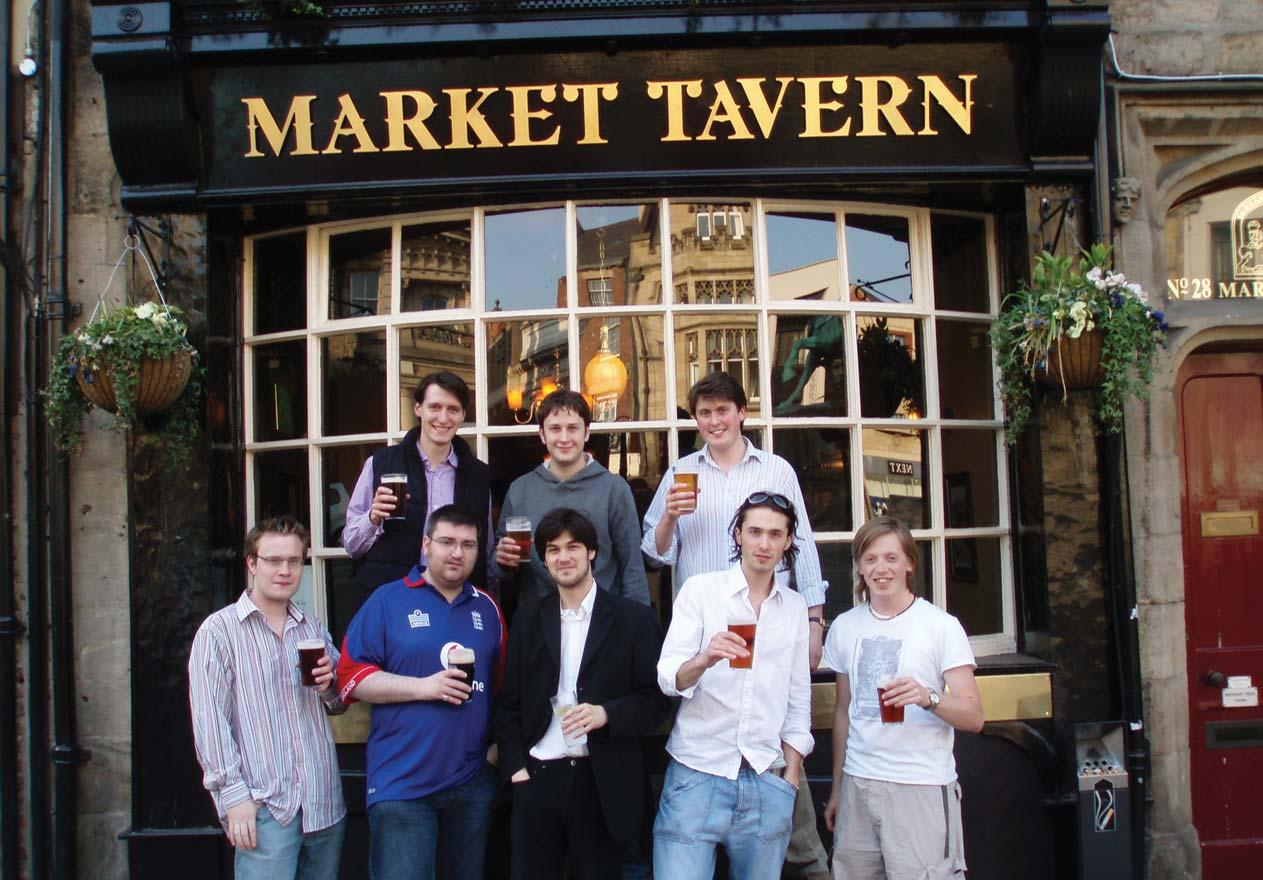
Woodman Inn, a bit of a hike up Claypath but with six excellent guest real ales and a strong local feel it is the pub of choice for the most discerning drinkers in our ranks. At various times during the year certain pubs are visited for tradition’s sake. The Queen Victoria is the post-away-day gig pub, whilst The New Inn, is the venue for drinks following the traditional Decani versus Cantoris Good Friday football match, Cantoris being the current champions. The allure of Klute, often voted the worst club in Europe, attracts those who wish to strut their funky stuff after hours, whilst the Three Tuns provides an excellent breakfast on those rare occasions of a late Sunday morning start. There are many other pubs to mention; the tiny Dun Cow, the cheap Wetherspoons and chain pubs of Varsity and Hog’s Head, the opportunity to sit outside and watch the world walk by The Swan and Three Cygnets, The Elm Tree, each catering for a slightly differing palate. For the adventurous a visit to North Road on a Friday or Saturday night, when the locals come out to play in shirtsleeve order come rain, snow or very occasional shine, isn’t unheard of.
No pub could ever fill the gap left by our move from The Shakespeare so perhaps its no bad thing that the Gentlemen of Durham Cathedral Choir now frequent a multitude of hostelries as taste and occasion demand, after all variety is the spice of life or at least a good excuse for a curry, but that’s another tale.
Cathedral Music 44
LAYCLERKS’ TALE Where do lay clerks hang out in your part of the country? If your local hostelry is worth a mention drop the Editor a line along with a photo of the lay clerks partaking of a pint.
3302 Cathedral Music MAY 06 v2 22/5/06 16:10 Page 44
MARATHON MAN
Geraint Bowen, Organist and Director of Music at Hereford Cathedral, swapped his cassock and surplice for running kit when he ran the London Marathon in aid of Oxfam on Sunday 23 April.

“Because I’m lucky enough to live about twenty yards away from my work at the cathedral, I have a very short commute to work and get very little exercise as a result, so about 18 months ago I started running about a mile a day every morning before choir practice with our choristers.” said Geraint. Training for Geraint has had to fit around a busy cathedral schedule as he is also artistic director of this year’s Three Choirs Festival, due to be held in Hereford in early August, and is conductor of the Hereford Choral Society. Geraint raised £10,000 and his time was 4hrs 23mins.
MARATHON OF A DIFFERENT KIND
Peter Kirk reports that the Anglican chant project has just gone through the 7000 barrier. Cathedrals have been most helpful as has the RSCM. There is to be a re-recording of the Psalms of David next year on the Priory label. No chants already recorded are to be used and Peter will supply the new ones. He also thanks CATHEDRAL MUSIC readers for such a terrific response via the magazine.
DELIGHTS FOR EVERYONE DOWN IN SALISBURY
Southern Cathedrals Festival (SCF) 2006, the popular annual five-day festival of choral music which features the choirs of Chichester, Salisbury and Winchester Cathedrals, is hosted by Salisbury Cathedral from 19–23 July with David Halls as Festival Director for the first time. “I am very excited by the prospect of my first SCF. It has been my privilege to watch the Festival develop over the past 20 years and my colleagues at Chichester and Winchester have helped me put together a dynamic programme which will deliver an exciting and forward-looking Festival. At its heart is the daily round of services that have been central to the Anglican church for centuries, here shared amongst the three cathedrals’ boys choirs and the girl choristers of Salisbury and Winchester. The choirs also join together in various combinations
for three major concerts, ending with a performance of Mozart’s sublime Requiem on the Saturday evening.”
SCF 2006 will also showcase young musicians and the impressive music-making which is so much a part of Salisbury’s life throughout the year. David Halls explains:
“I see the future of music being firmly in the hands of the young and decided to acknowledge this by initiating a miniseries within SCF called ‘Youth in Music’. In three short instrumental concerts former pupils of Salisbury Cathedral School who are pursuing careers as professional musicians will perform programmes full of energy and contrast In addition, one of the South of England’s most exciting choirs, Sarum Voices, comprising mainly ex-cathedral choristers, will sing Bernstein’s Chichester Psalms and the second performance of Sam Hanson’s Requiem. Sam was Organ Scholar of Salisbury Cathedral last year and is currently studying music at Cambridge. The Festival also provides a showcase for local musicians including Salisbury Community Choir, whose programme presents an eclectic mix of music, and the Bishop of Salisbury with his period instrument ensemble; they give concerts in the warm acoustic of St Martin’s Church, Salisbury.”
David Briggs, one of the world’s greatest organists, gives a big screen organ recital as he improvises to the classic 1925 film ‘The Phantom of the Opera’ on the cathedral’s famous Father Willis organ. Dr Barry Rose, the first Director of Music at Guildford Cathedral and one of the country’s most respected choir trainers, puts his philosophy on choir training into practice with the help of the boy choristers of Chichester and Salisbury in a masterclass at St Martin’s Church. David Halls concludes that “There is something for everyone in SCF 2006 –and it is also possible to attend every event. From Bach to Bernstein, chamber music to the greatest large-scale works, this will be music of the highest quality. I look forward to welcoming everyone to this wonderful Festival.”
Booking brochures are available from the Department of Liturgy & Music, Salisbury Cathedral, 33 The Close, Salisbury SP1 2EJ, Telephone 01722 555148 or e-mail: s.flanaghan@salcath.co.uk"
DR ALAN, ORGANIST AND MASTER
FCM Patron the Archbishop of Canterbury, the Most Revd Rowan Williams, with FCM vice-president Dr Alan Thurlow, on the front steps of Lambeth Palace. The Archbishop conferred upon Alan the degree of Doctor of Music. Last year marked Alan’s Silver Jubilee as Organist and Master of the Choristers at Chichester Cathedral. Congratulations Alan!

Cathedral Music 45
NEWSBITE
News from Choirs and Places where they sing
3302 Cathedral Music MAY 06 v2 22/5/06 16:10 Page 45
Photograph: © Copyright Lambeth Palace.
inQuire
First of all good wishes to Peter Rose, who is recovering from a stroke. This temporarily prevents him sending news from the Cambridge colleges. We hope his recovery continues and that his contributions will again enrich this column. (See below for news from St John’s).
Modest to a fault.
We are sad to report the death of Michael Fleming on 10th January 2006 at the age of 77. Perhaps best known to a wide audience for his work at the RSCM, Michael also held important posts at a number of London churches over many years, including All Saints, Margaret Street – St Alban’s, Holborn –Croydon Parish Church and St Michael’s West Croydon. Michael was the ‘son of the manse’, (though that epithet does not quite suit his AngloCatholic credentials) and his grandfather had been precentor of Gloucester Cathedral. He had been a pupil of George Guest, Harold Darke and Francis Jackson and was firmly rooted in the mainstream of English church music. He will be remembered for his work as a member of the editorial board of the New English Hymnal, and was working at the time of his death on the supplement New English Praise, to be published in June. His own hymn tunes are distinctive and original without being gimmicky or strident. Few can doubt that Palace Green, for example, has rightly won a lasting place in our hymnbooks. He was awarded a Lambeth MA for his services to church music.

Those who sang under him will remember his modesty as well as his great skill in getting the best out of often amateur musicians, whom he inspired to give of their best in the cause of worship. Michael Fleming’s funeral took place on the eve of the 250th anniversary of Mozart’s birth; the music included Duruflé’s Requiem and English church music performed by a large number of musicians with whom he had worked over many years, including his own St Michael’s Singers and the RSCM Nicholson Singers
which he founded many years ago. Few who came into contact with this modest man can have failed to be enriched by his musicianship and his gentle goodness. May he rest in peace.
Last November Sam Adams-Nye the Deputy Head Chorister at Bristol Cathedral won the BBC Chorister of the Year competition, which was broadcast on Radio 2. Congratulations to him and to Organist and Master of the Choristers, Mark Lee, who has developed Sam’s exceptional choral activities. Bristol Cathedral School will go fully coeducational in September 2006 and the Cathedral Chapter and School have decided to open to girls the opportunity on the same basis as the boy choristers. From that date the cathedral will begin to build a separate girl choristers top line which will share with the boys the singing of services currently covered by the boys and men or boys alone. These girls choristers will be pupils at the school and will sing for the first three years of their normal school career, as do the boys. Three girls became cathedral chorister probationers last September as a start to the process. This new initiative does not affect the current Girls’ Choir which is recruited on a different basis - from schools all over Bristol and open to girls in the 10 - 18 age group.
Hymns from the South Bank
Southwark Cathedral Great Choir is bringing out a second disc of hymn tunes by John Barnard, this one, including the noble tune Guiting Power (Christ triumphant, ever reigning), is on the Herald label. Writing of the first, issued in 2005, one critic suggests that it was impossible to tell the girls from the boys in their separate numbers. In your columnist’s view (and I have to declare an interest as I was at prepschool with John Barnard) Guiting Power is in exactly the same traditional but strikingly innovative mould as Michael Fleming’s Palace Green.
The Southwark girls go on tour to Rouen in April, a frequent destination
Richard Osmond rounds up the news from DRs
as Southwark is twinned with Rouen. The boys, meanwhile, are saving up…
They gave the première of Martin How’s London Service (Mag and Nunc) in February, in the presence of the composer, who wrote it for them and declared himself well pleased. Apparently, the senior member of the Southwark Choir sang under Martin
How in the days when copies of church music really did cost three pence (shades of the old Novello copies which used the front cover as a catalogue: God is Gone Up… 6 p, or even O Clap your Hands All Ye… Gibbons.) The Southwark boys played football against St Paul’s towards the end of March and would be glad to hear of other cathedral teams looking for a fixture.
inQuire
St Paul’s Symposium
Across the river at St Paul’s the centenary meeting of the Church Music Society (on Saturday 27 May) will include a Symposium (For what has been – thanks; for what will be – yes!) chaired by Ian Curror and with contributions from Canon Lucy Winkett (Canon Precentor of St Paul’s), Dr. Francis Jackson OBE and composer Judith Bingham, whose composition, commissioned by the CMS (Touch’d by Heavenly Fire) will receive its first performance at the Festival Evensong (which will also include Howells’s Service in B minor and Smith’s Responses – both CMS publications).
Other CMS news is that on 27 September there will be an event at St Sepulchre-without-Newgate (near the Old Bailey) to launch a Festschrift in affectionate memory of Dr Harold Watkins Shaw. The Society also recently published an edition of the Requiem by Robert Pearsall. A première performance is planned (at the time of writing) for Maundy Thursday, 13th April, at 6pm, at St Michael’s Church, Cornhill under the seemingly indefatigable Jonathan Rennert. This is a liturgical performance with organ and instrumental accompaniment.
Cathedral Music 46
inQuire inQuire inQuire inQuire 3302 Cathedral Music MAY 06 v2 22/5/06 16:10 Page 46
This year’s Royal Maundy ceremony took place at Guildford Cathedral. Other news from Guildford includes details of a Diocesan Gathering on 5 May, at which Professor Sebastian Forbes will be the principal speaker. Guildford recently bade farewell to the Revd Canon Dr Maureen Palmer, who retired at Epiphany as Canon Pastor residentiary and Sub-Dean. Her successor as Canon Pastor will be the Revd Angela Weaver and Sub-Dean is Nicholas Thistlewaite. May sees the 45th anniversary of the consecration of Guildford Cathedral. As part of the celebrations the Old Choristers’ Association is releasing two CDs of historic recordings from Barry Rose’s time at Guildford 1961 – 1974. The 39tracks range from anonymous early music to a setting of the Jubilate written by Grayston Ives for the cathedral choir. The 2 CDs cost 10.99 (the pair) plus £1 toward postage and they are available from the cathedral shop, or by post, from M Barry, 53 The Shimmings, Boxgrove Road, Guildford, GU1 2NQ. Cheques should be made payable to GCOCA and proceeds go towards funding a chorister.
inQuire
There are also key changes at Winchester, with the Very Revd James Atwell being installed as Dean on Lady Day, following his successful years as Dean of St Edmundsbury. Among the music for Dean Atwell’s installation is a new commission by John Rutter.
Precentor Charles Stewart leaves Winchester in May for a parish in Walton-on-Thames; he is to be succeeded by the Revd Michael St JohnChannell, currently Vicar and Rural Dean of Cirencester. The Winchester news release says that the precentordesignate is ‘keen to carry forward our own tradition in liturgy and music as well as continuing the Cathedral’s role in encouraging others to explore what might be possible in their own churches, especially those with limited resources’. He is due to be installed on Sunday 2 July at Evensong.
Winchester has also recently made a recording of Advent music, details of which should be available for our next issue.
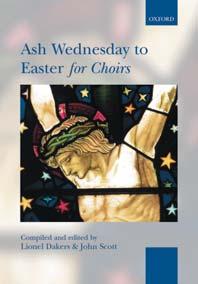




It is Winchester’s and Chichester’s
choirs turn to travel to Salisbury for this year’s Southern Cathedrals Festival from 19–23 July. Features include David Briggs (organ) improvising to the classic 1925 film The Phantom of the Opera and a choral masterclass by Barry Rose (‘It’s not enough to make a noise’). The Bishop of Salisbury will present The Genius of Bach with singers and period instruments, and a series of mini-concerts to celebrate Youth in Music will be given by young people pursuing a career in music. The traditional ‘fringe’ has disappeared this year (had it become too parochial or is it just the problem of licensing?) and has given way to Compline. The Sunday Eucharist is this year’s festival contribution to the Mozart’s 250th. General booking opens on 7th May (01722 320333 for credit card bookings – 10am–6pm Monday to Saturday).
inQuire
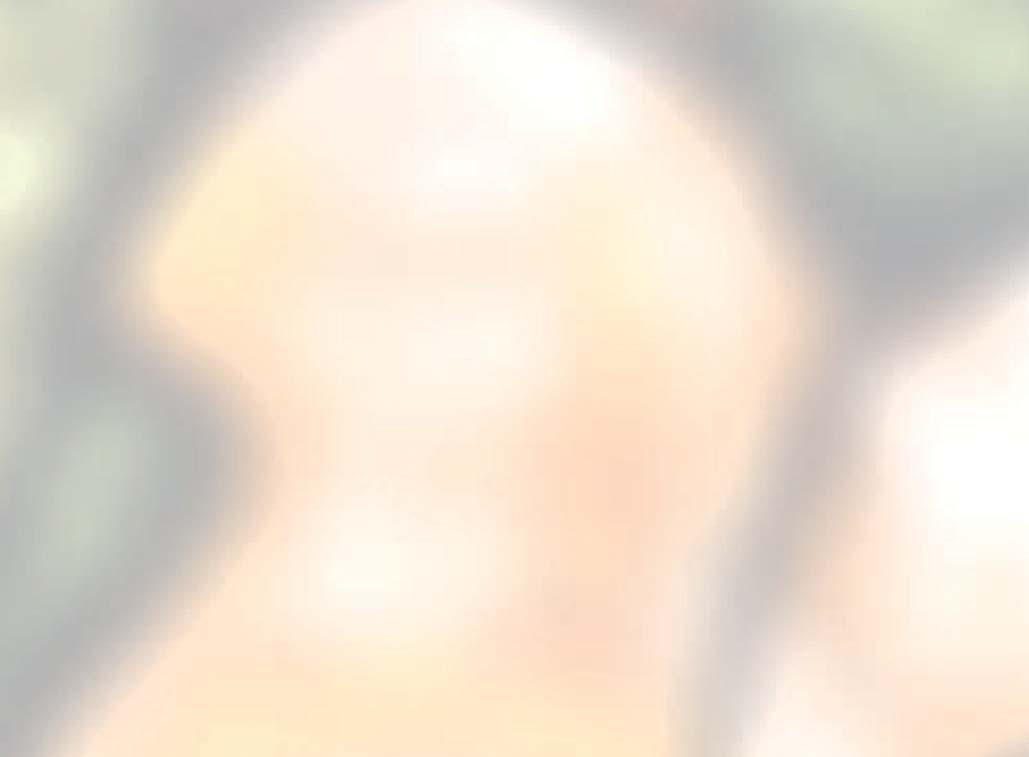
Ponder the Paths of Thy Feet
Further west, Andrew Millington will undertake a sponsored walk during the May half-term as part of the fund-raising activities for the Exeter choirs’ proposed tour of the USA in the second
The spiral-bound editions of these four favourite Oxford anthologies are an ideal resource for keyboard players and conductors.

New spiral-bound editions 2 www.oup.com/uk/music 01536 454590 3302 Cathedral Music MAY 06 v2 22/5/06 16:10 Page 47
The durable binding keeps the copy flat and therefore your hands free for conducting or playing,while offering the same highquality engraving and presentation as the standard editions.
All £15.95 except for 100 Carols for Choirs which is £19.95.

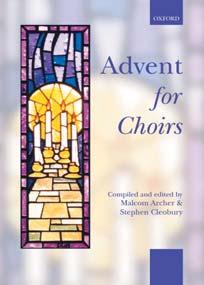
Cathedral Music 47
inQuire inQuire ➤
The traditionally bound paperback editions of these anthologies are still available.
half of July. En route, Andrew will give a number of recitals in coastal churches from Sidmouth through to Dartmouth. The choir will be broadcasting Choral Evensong on 7 June as well as singing concerts and services during the summer in Teignmouth, Totnes, Dartmouth and Kingsteignton. The choir will be joining Wells and Bristol for a combined Evensong at Bristol on Saturday 1 July.
Cambridge Voices
Dr David Hill’s admirable Choir Administrator, Caroline Marks, has helpfully supplied information that St John’s are launching their new CD (the first with Hyperion) on May 1st CDA 67558 is entitled Mendelssohn –Choral Music and this recital contains a welcome mix of the unfamiliar as well as the more well known.
King’s and John’s choirs sing together on Wednesday 6 July in King’s Chapel while John’s will be singing in Chester Cathedral on 13 July as part of the Chester Festival (at Wesley Methodist Chapel) and at Carlisle Cathedral on 14 July as part of the Carlisle International Summer Festival.
King’s gave a recital of music by Purcell and Britten at St John’s Smith Square in late March.
International Church Music Festival
This festival, initiated in the USA, this year takes place in Chester Cathedral from 15–18 June. It has the aim of strengthening relations between Western countries and Eastern Europe and the Third World and has been running for over 20 years. Last year’s festival was in Bern, and in 2007, the host will be Coventry. There will be choirs this year from the USA, Holland and Switzerland, as well as possible participation of singers from the Ukraine and the Czech Republic. The festival conductors and musical directors will be Sir David Willcocks and Paul Leddington-Wright.
Leeds and Ripon Report
Dr Francis Jackson was principal guest and ‘inspirational preacher’ at the 2005 Festival Evensong of the Friends of the Music at Leeds Parish Church (LPC), while there is also enthusiastic comment on a ‘very demanding’
Yorkshire Three Choirs Festival at
Wakefield Cathedral and Leeds Town Hall, which featured, among other music, works by Tippett at an Evensong to mark that composer’s centenary. Both the Duruflé and Fauré Requiems got a hearing in November. Early this year the Yorkshire Cathedrals Girls’ Choirs’ Festival at Ripon included music by Parry and psalmody from Kerry Beaumont’s Ripon Psalter. LPC’s Edward Boyle Organ Scholar, Edward Taylor, is back after a very productive year studying at Strasbourg. He is further broadening his experience this year by serving additionally as organ scholar at Wakefield. Edward Taylor moves to Ely in September and a new post with the Cathedral Choral Foundation and The King’s School. This will mean considerable involvement with Ely’s newly established Girls’ Choir. My man in the West Riding clearly has territorial ideas as he points out that the Ely Foundation has a former LPC chorister as Director of Music and a recent SubOrganist as Assistant Director of Music. The Girl Chorister Director, Louise Reid (née Marsh) is also formerly of Wakefield (though with a leaven of the south as she also served at Guildford).
The LPC Choral Foundation Appeal continues apace, with events including an evening with Dame Fanny Waterman and a second ‘Carols for a Carol Future’. To date, well over a quarter of a million pounds has been raised. FCM President Dr Christopher Robinson visited LPC in March with the Choir of Clare College, Cambridge (he is currently its director), which includes two choral scholar who are former LPC alumni. This event alone raised over £3,000.
Lent and Easter music included a Matthew Passion, and Maunder’s Olivet to Calvary at Leeds Town Hall. Forthcoming visits include a tour of London and St Albans from 8th to 13th AuguSt There will also be a special commemoration of the 100th anniversary of Sir Edward Bairstow at LPC, as well as the Yorkshire Three Choirs Festival in October.
Tenth Anniversary for St Albans Girls
Mention of the Leeds visit to St Albans reminds me that there will be a commemorative Evensong on 2 July to mark the tenth anniversary of the Girls Choir at which the preacher will be the Revd Canon Lucy Winkett, herself no mean singer.
Portsmouth in return to Baltic
Following their successes with the Trafalgar celebrations last year.
Portsmouth Cathedral Choir are planning a return visit to Tallinn in Estonia later this year. They hope to sing to the accompaniment of a newly restored organ in Tallinn cathedral –lead free, we hope. At the time of their last visit in 1998 the organ was out of use. There are also plans to sing in a church as yet still under construction. The cathedral is launching a Development Appeal on Sunday 7th May. It is hoped to modernise and convert Cathedral House, the Song School and a new music library.
Portsmouth is also launching a new choir, Cantate, for teenage boys and girls. Cantate will sing Evensong on Thursdays at 5pm, making a valuable addition to choral worship and raising to seven the number of sung services a week during term time. Saturdays are often reserved for welcoming visiting choirs from the diocese or even further a field. Portsmouth has a flourishing Choir Association, which, apart from raising money, clearly provides much pleasure and pastoral opportunity. It would be interesting to hear from other cathedrals with similar associations or local supporters’ clubs.
Cathedrals Pilgrimage
This year’s pilgrimage by The Sixteen features in particular the 1605 Requiem by Victoria, described as one of the final flourishes of Renaissance music and Victoria’s own first composition. Tickets are available from a central box office (and in most cases also locally) Central Box Office: 01865 305 505 www.tickets.oxford.com . Dates include: Winchester (20 May); Tewkesbury Abbey (26 May); Edinburgh (27 May); Oxford –Sheldonian (2 June); Ludlow – St Lawrence (29 June); York (6 July); Lichfield (11 July); Chichester (16 July); Exeter (22 July); St Asaph (22 September); Reading – Concert Hall (2 October); Southwell (27 October); Wells (4 November).
Copy for the next issue should be sent to Richard Osmond
10 Hazel Grove, Badger Farm, Winchester, Hants, SO22 4PQ. Tel/Fax: 01962 850818 by 1st September 2006
Cathedral Music 48
inQuire in
inQuire inQuire inQuire 3302 Cathedral Music MAY 06 v2 22/5/06 16:10 Page 48
Quire inQuire
HARRISON & HARRISON are FRIENDSOF CATHEDRALMUSIC
Our recent work has included:
LICHFIELD CATHEDRAL
Reconstruction of Hill organ with 13-stop nave division.
ST DAVIDS CATHEDRAL
New organ of 54 stops based on Father Willis pipework.
RIPON CATHEDRAL
New mobile nave console.
ELY CATHEDRAL
Restoration of H&H organ, with eight new stops.
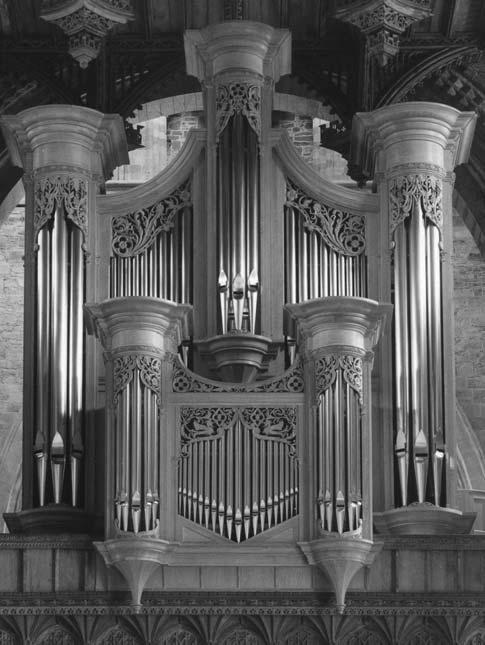
EXETER CATHEDRAL
Minstrel organ of eight stops and new 32ft reed.
New EU legislation under the RoHS Directive does not threaten existing instruments, nor their continuing repair and restoration. However, all the instruments mentioned above have benefited from new stops or new mechanism, and it is not certain that this would be legal in the future. New organs will certainly be banned unless there is a reprieve. Please support the campaign to allow the creation of new organs for future generations. www.pipes4organs.org gives details.
HARRISON & HARRISON
ST JOHN’S ROAD, MEADOWFIELD, DURHAM DH7 8YH Telephone 0191 378 2222 Fax 0191 378 3388 e-mail h.h@btinternet.com www.harrison-organs.co.uk
St JOHN’s COLLEGE, CAMBRIDGE CHORISTER VOICE TRIALS
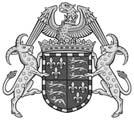
CHORISTER VOICE TRIALS

Formal Voice Trials for boys aged 6 – 9 years old, who are interested in admission to St John’s College Choir, are held in spring and autumn each year.
For further details please contact Mr Alex Loria at St John’s College School on 01223 353652 or by sending an e-mail to admissions@sjcs.co.uk
Cathedral Music 49
Photograph of St Davids Cathedral by C.R.A. Davies
3302 Cathedral Music MAY 06 v2 22/5/06 16:10 Page 49
Anneke Zweers 1999
London, Queen’s Tower view from the hotel window (Queen’s Gate).
Anneke Zweers 2005
Pieter Saenredam, 1632 (aquarel). Rood loft (choir-side) St Johns Cathedral ‘sHertogenbosch, The Netherlands. Choirorgan 1617 by J.J. van Weert. In the far west the top of the main-organ. Lyon, Musée Lyonnais des Arts Décoratifs
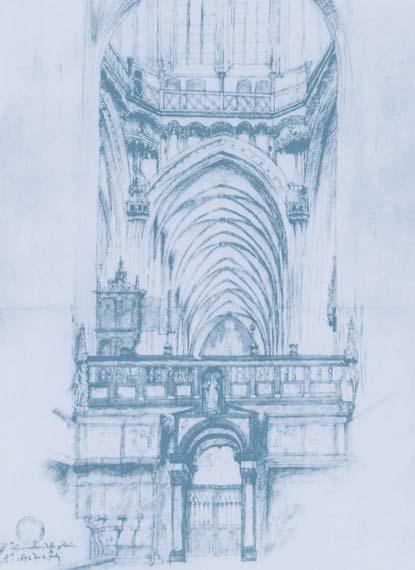
HollandEngland
Diary of a short visit
Herman de Kler
In October 2000, CATHEDRAL MUSIC published my Holland/England & Vice Versa in Chordis et Organo. I now write a historicizing sequel to it, in the form of a travelogue from 11th to 15th February 2005. In this journal various English musicians, who visited the Netherlands, will come up; the first was Peter Philips.
The journey by my wife, Anneke, and me focussed on London and StAlbans and was about musical performances and visiting libraries. And the latter again was in view of an article about Felix Mendelssohn, Johann Gottlob Schneider (Dresden) and the art of ‘doorregistreren’ (colour related stop-changing within the same atmosphere/strength) in playing the works by J S Bach up to then contemporary compositions.
Stop changing(as said) was systematically taught in Den Haag [The Hague], where I live, by one of Schneider’s best known Dutch pupils, W.F.G. Nicolaï. He was appointed to the Koninklijke Muzykschool (Royal School of Music, from 1900 named Royal Conservatoire) at The Hague in 1853, the first academic organ teacher in the Netherlands. Nicolaï, and also his successor J.A. de Zwaan, organist to the Grote Kerk at The Hague, left behind notes on stop usage for original works by Bach and Mendelssohn, which confirms the thoughts on the subject by Mendelssohn and Schneider. I mentioned this earlier, in Orgelkunst rond 1900 [The Art of the Organ between 1900] and plan to write a follow-up on that. All of this made up the reason for our visiting the British Library and St Peter, Cornhill, and is an introduction to the following.
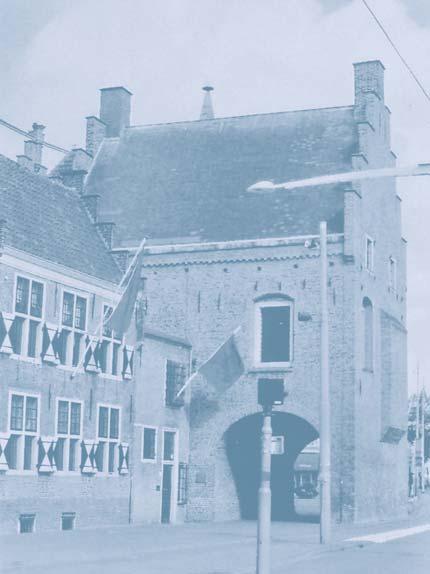
THURSDAY. The evening before, we embark on our journey by train to London, via Channel Tunnel, Hans Eisler’s Vierzehn Arten den Regen zu beschreiben [Fourteen ways of describing rain] is played on the radio. This strict instrumental quintet dedicated to his teacher, Schönberg, is still captivating and is for us an optimistic impulse in view of tomorrow’s journey.
FRIDAY. London confronts us, as always, with its street musicians in the narrow corridors of the Underground, often playing surprisingly well. From the hotel room we look out over the roofs and see Queen’s Tower. We have more liking for towers than of flat buildings, especially when there’s a carillon that is playable from a keyboard.

We went to Evensong St Paul’s. It was quiet already and dusk was setting in. The throngs of visitors, impressed by all they saw, had gone. In the choir stalls we look up at the organ console, hidden behind drapes. But no activity there; the service is a cappella. It has it’s own attractiveness of course, but I missed the organ. I’d already, via the website, tried to get information about the kind of service to be held but there was nothing about accompaniment. It would really be of great service to travellers, who come from afar and have to plan the journey and book hotels, to put information about Evensong for the weeks to come on the Net.
There was fine singing and we enjoyed the ‘eternal’ Psalms, whereby with the opening chord one already surmises the next ones. During ritual and prayer my eyes wandered through the immense interior, where they came to rest again on the wonderful organ cases designed by Wren for the organ built by Bernard ‘Father’ Smith (1697). What a difference when compared to the also beautiful façade of his organ in the Grote Kerk at Edam. The question of the ‘where from’ of this most important of English organ builders has been an intriguing one for generations of researchers (and further enlightenment may still result). Did he originate from Germany, the Netherlands or England? Refining of thoughts
Cathedral Music 50
The Hague Holland ‘Gevangenpoort’, the middle-age prison where Peter Philips in 1591 was enclosed.
3302 Cathedral Music MAY 06 v2 22/5/06 16:10 Page 50
on this should be possible. With this kind of mind-meandering one gets through less appealing parts of the Evensong and it was in this way that during Sunday sermon as boy I memorised the psalm verse I was to recite by heart next day in school (from the ‘rhymed’ Genevan Psalter, 1562).
SATURDAY. British Library. Though the electronic application system may have its merits, differences in approach and ongoing ‘improvements’ take a lot of one’s time; where has the good old card index box gone, more often than not giving up its information much faster. It just proved impossible to get access to the works (19th century) within the few hours we had, even with the help of a friendly assistant. Part of what we wanted became available and for the rest we would come back on Monday. Time to leave for St Albans Cathedral.
Upon entering, there was rehearsing for Evensong. We perceived a friendly and cooperative interaction between director Andrew Lucas and the still vulnerable young boys. No fear of a severe teacher here. Then in to the stalls where we seated ourselves next to two gentlemen in animated discussion. On the organ César Franck’s Cantabilé is being played, but the ‘social talk’ goes on. When ‘upstairs’ some more stops are pulled, the ‘gentlemen’ go on talking in a somewhat louder voice, just as if the organ ‘speaks’ instead of the organist.
Then a delightful Evensong with Henry Purcell’s Remember not Lord our offences. Admonishing words, set to lovely music by a composer who, according to A. Ashbee’s Records of English Court Music (1987, 39), in 1691 visited the Court in The Hague, accompanied a.o. by his teacher John Blow and the violinist John Banister. Did they by any chance play the organs in this town? Could there have been contact with the well known Quirinius van Blankenburg (Court Chapel) and Stephanus Cousijns, organist to the Grote kerk, builder of the beautiful organ in de Kloosterkerk (monastery church)?
The Evensong over and some time later, (the chattering gentlemen still at it), the organ recital, one of our reasons for coming to St Albans, began.
Simon Preston opened his recital with Choral SongandFugue by S.S.Wesley. Though composed for chamber organ the work, in an arrangement for large organ with pedals, sounded remarkably well and would surely have suited the mobile spirit of the composer. Like his father, Wesley Jr. had much interest in ‘Mendelssohn’ and the innovation-oriented movement in the world of the English organ (pedals and compass of the manuals). Next, Preston played J.S.Bach’s Präludium und Fuga a-moll (BWV 543). This monumental composition was brought to an end with an arpeggio in time with the tempo in which it was presented and with that, there endowed the organ with a bit of the charm of the harpsichord. Then there were some works by Mendelssohn and Schumann. The former’s Ouverture to the Oratorium Paulus played, according to an explanation from Andrew McCrea, in an arrangement by W.T.Best Preston played the work with aplomb but also with a certain aloofness, which did justice to Mendelssohn’s aversity to the NeuDeutsche Schule (Wagner, Liszt etc.) I do recognise that transcriptions have become, in the musical historical sense, a phenomenon in itself, but I have no great fondness for them because of their diminishing of the original.
The Ouverture is, by the by, the only instrumental part of this oratorio and is based on the well known chorale Wachet auf, ruft uns die Stimme. Finally Robert Schumann: the Sechs Fugen über den Namen B A C H für Orgel oder Pedalflügel (1845). It is the
rather quiet ‘3rd’, that for me is the most an ‘organ’ composition. For his orientation about the organ he went (1844-) to J.G.Schneider and followed in that Mendelssohn’s advice: ‘Gehen Sie noch zu Schneider, da können Sie etwas Tüchtiges lernen’ [do go to Schneider, there you’ll find solid knowledge (about) organ playing] But it had been Mendelssohn’s organ recital at the Thomaskirche in Leipzig in 1840, which Schumann applauded in terms of Abwechselung und Steigerung (variegation and dynamics). The rendering of Bach’s Passacaglia c-moll he characterized as ‘vortrefflich in den Registern behandelt’ [superb choice of stops; in fact stop changing]. Because of the fact that in St Albans the organist could be seen via a video screen, one could observe that Preston made abundant use of the pre-programmed stop combinations. In fact, in view of my love of authentiek and involvement with our many large tracker organs, I fully expected to see stop-change assistants. Question is what impact modern technology might have on the reproduction of a work of art, especially regarding tempo and the in principal positive influence of the momentane character of human action (as in ‘Shaw’ later on in this article). Would I have been considering this at all, if I had not known about all those switches? Does it really matter?
SUNDAY. We visited The Victoria and Albert Museum to see the rood loft from the StJanskathedraal in ‘s-Hertogenbosch [also Den Bosch or Bois le Duc] in the Netherlands. This imposing church still retains its magnificent organ front by Simonsz & Schysler. A.G.Hill, in England deemed preservator of the historic organ avant la lettre (for ever and ever, so it would seem) did praise it in his The Organ-Cases and Organs of the Middle Ages and Renaissance.. as ‘probably the finest in Europe’ and ‘one of extreme magnificence and size’ (Den Bosch: I 1883, II 1891, II: 234). The instrument, built by Floris Hocque and completed in 1622, had been ordered by the civil authority, which in itself indicates an especially profane, concertante function. John Bull , when still residing in Antwerp, was one of the earliest advisers to ‘s-Hertogenbosch for a new great organ. He took a rather revolutionary and continental stand in that he proposed a full compass for all three manuals from C to c’ (49 keys, 1617). The reason for visiting the museum did however lie in the residing there of the only nine years older rood loft. Upon entering the reception hall one can readily perceive the enormous work of art, achieved under the direction of C. van Norenburch. The rood loft, on which there was to be seen the choir organ for the Mass by J.J. van Weert and approved by Bull (1617)! had been sold in 1866 for £ 900 by the Roman Catholic church administration because of its obstructing full view of the altar. After that it came to London. This and the demolishing of The Hague Court Chapel [Hofkapel]- it being part of the 13th century court of Earls of Holland the (‘Binnenhof’) – led to a statutory preservation of monuments and historical buildings in the Netherlands. Regrettably the rood loft, rich in sculpture, now stands amid other statues. Most of its singularity is lost to the eye and it now almost looks like a footbridge connecting two wings. Apart from that it is in all probability the van Weert organ sold to England too, where they tried to place the instrument in St Margaret’s, Westminster (See: C.Clutton & A.Niland, The British Organ, 1976, 148).
Then we aim for St Peter upon Cornhill, where we should find the console of the W.Hill organ of 1840 and which Mendelssohn played. This instrument was, if not the first, than at least one of ➤
Cathedral Music 51
3302 Cathedral Music MAY 06 v2 22/5/06 16:10 Page 51
the first organs in England fitted out with German or Dutchpedals, which made it suitable to play works from Bach to recent composers. The organ was rebuilt on advice of the organist of Christ Church, Henry J. Gauntlett. His orientation was the famous, than one century old(!), Christiann Müller organ in the Grote of St Bavo Kerk at Haarlem. St Peter proved to be closed and at the nearby StHelen’s we learned that we might have better luck the next day.
Our footsteps then went in the direction of Westminster. The hope was to catch a glimpse of the organ in the Methodist Central Hall was dashed because the ongoing restoration of the hall. Onwards then to the Abbey for Evensong. Here we were treated to introductory organ playing and fine compositions for choir (much of it a cappella). Again my thoughts took wing; where could the organ be, built in 1689 by a Dutch builder that I might have knowledge about? Did Purcell and his predecessor Blow (also his successor) visit him during their stay in the Dutch Republic?! After the sermon on The Book of Psalms, Cowper’s poem O for a closer walk with God was sung by all. The poet of Olney’, who kept domesticated hares in his home and whose work shed, we’d seen on an earlier visit, made us with his phrase ‘I hate the sins that made thee mourn, and drove thee from my breast’ feel close to the lone activist in front of the Houses of Parliament, against the Iraq war. But before seeing that tableau vivant of banners we heard, coming from the Abbey, strains of Bach’s robust Fantasia und Fuga g-moll.
MONDAY. Armed with particulars from Organists of the City

of London 1666-1850 (1983) by Donovan Dawe and Nicolas Plumley’s The Organs of London.. (1996) we go again to St Peter and get permission to enter. One of the young women, there to study with several others, lets us in and enquires in a friendly way whether we come ‘from Russia’. No, we don’t and neither from Germany (which has been asked quite often). We look at everything in the building and observe the enlarged Smithcase, but no Hill console, played by Mendelssohn, to be seen. There’s a staircase, leading up to the organ loft, with a ‘no entrance’ sign which we disregard. Upstairs we see the object we came to look at, behind glass. A young man, placidly at his study, obligingly moves aside. On the music stand the theme of the Passacaglia by Bach mentioned earlier, in Mendelssohn’s own notation. Did he play the work here? Did he write it down for the organist, Elisabeth Mounsey? Though appreciating that has been kept, what’s left of this historic object? I must say that the console looked neglected and deserving of better care and placement.
Leaving St Peter’s we again visit the British Library. Perusal of The Musical Times (1853) does not yield any information about J.G.Schneider having played the organ in London. He is said to have performed with a choir from Köln in Exeter Hall, which might have been the Cologne Choral Union(1853, 219) as mentioned in the magazine. No mention of Schneider however. But, as Nicolaï mentioned 1833 (a notion adopted by others since), I also examined The Harmonicon, alas without results. I must therefore go on looking. Other information is vying for attention, which I
Cathedral Music 52
3302 Cathedral Music MAY 06 v2 22/5/06 16:10 Page 52
find it difficult to turn away from. Like the fact that not only for the organ-orientation the focus was on the continent, but also for the organ curriculum. In 1855 the German organ methods of J.C.H.Rinck and Julius Schneider were highly praised. Surprisingly there was also Best’s programme for the inauguration of the Willis-organ in St George’s Hall in Liverpool (see illustration).
I also was looking for confirmatory information on a laudatory review of G.B.Shaw, regarding recitals by a Dutch A Cappella-koor (koor=choir) conducted by Daniël de Lange, that I needed for a study on the Belgian-Dutch organist JeanBaptiste de Pauw (1852-1924) which is intended for publication in Het Orgel – magazine of the Koninklijke Nederlandse Organisten Vereniging (1891-) [Royal Dutch Organists Association].
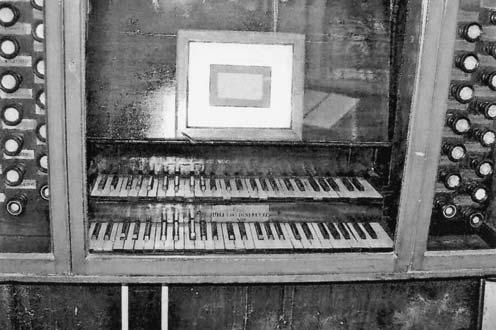
These recitals took place in 1855 for the occasion of the ‘Historic Concerts at the Inventions Exhibition’ at the Albert Hall. Works from Dufay to Sweelinck were sung and organ solos given by Daniël’s brother Samuel. Shaw lauded his achievements and especially those of his female stop-assistant, who thus more or less joined him in musicianship (see Preston’s recital ). A review in The Musical Times (1885, 477-9) surprised in using no less superlative terms than Shaw. Organist Samuel, on the other hand, was criticised; even more remarkable in view of Shaw’s praise of his assistant. In London they wrote de Lange is a good performer, but his persistent use of the full organ was very distressing to the ear...’ De Lange, however, was an excellent organist (Rotterdam, Amsterdam, The Hague and Stuttgart).
Later in the afternoon we again went to Westminster Abbey. A verger brings a coughing child a glass of water. The lay vicars sing a cappella, as announced; the Psalms in correctly sung Gregorian. And I wonder when, if ever, the cantus planus will be freed from the western, overly disciplined, unison way of performing. This music simply begs for an interpretation joining the old (Calvinistic) way of singing, as is still the way on Lewis and in isolated communities in South America. It is not very hard to see, even without real knowledge, that the Gregorian sort of forces every singer into heterophonic improvisation. Singing could be like the Mediterranean glissando from one tone to the other (etc.). Shortly Rotterdam will have the largest mosque in the modern west. It would make plainsong not only more authentic, but also more
personal and not sterile like.
Afterwards we enjoyed a nice ‘transparent’ organ chorale from the North-German organ baroque, might have been Dieterich Buxtehude.
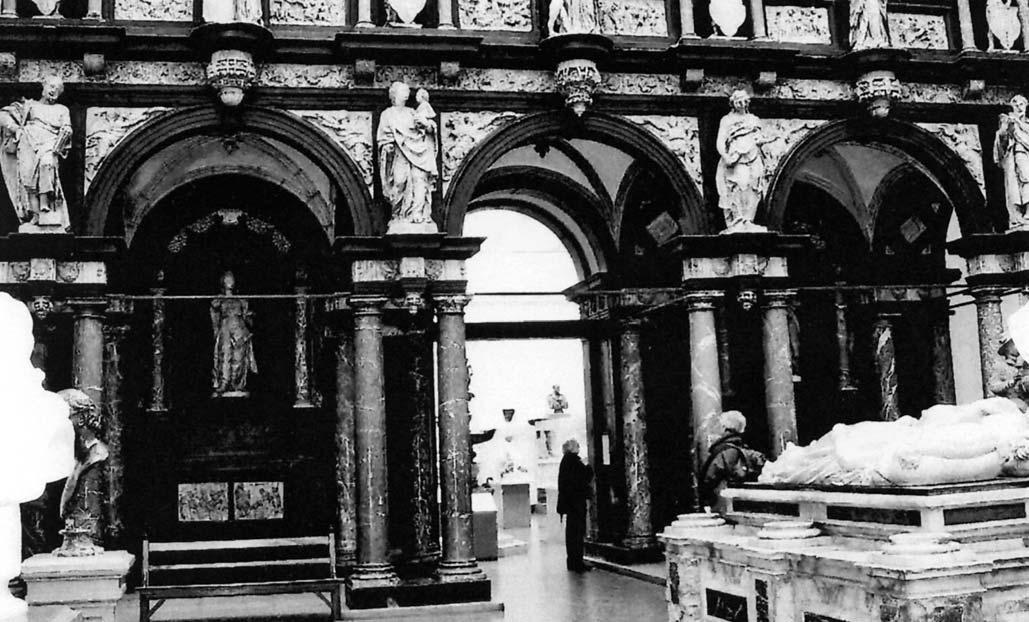
TUESDAY. Before leaving we take a glance at Queen’s Tower and than the underground to Waterloo Station (where a musician is singing). The Eurostar races to the continent. The robust towers of Kent make way for the picturesque ones of France. And Mechelen’s sturdy St Rombouts tower watches over Belgium. We pass Holland’s oldest town, Dordrecht, and as always we watch the Grote Kerk on the bank of the river, with on its tower a clock face in every quarter of the compass, like battlements.
Back in The Hague we attend an evening concert, one of a subscription series. Along our way to the 19th.century Diligentia Hall, we pass the mediaeval Gevangenpoort; the jail that in 1591 housed Peter Philips (Antwerpen) for a period, suspected of aiding a conspiracy against Queen Elizabeth. This musician, who’d fled England before, visited Amsterdam ‘to sie and heare an excellent man of his faculties’, that being Jan Pieterszoon Sweelinck. This points to an established international reputation, twenty years in advance of the many German (and Dutch) pupils... Here in The Hague Philips composed a Pavan and Galliard Dolorosa.. In Diligentia we listen to the women’s choir of the Royal Conservatoire and members of the Residentie Orkest [The Hague Philharmonic] under the famous Russian director Gennady Rohzdestvensky with a, for the period, avant garde work by Debussy and intriguing ‘formal’music by Igor Stravinsky (Cantata, 1952).
Good bye England, over and over.
Cathedral Music 53
3302 Cathedral Music MAY 06 v2 22/5/06 16:10 Page 53
Geoff White, Maidstone, Kent.
Dear Sir: Lilian Broughton’s first letter (2/05) hit the nails on their heads in many ways and in particular she happened to refer to one insensitive action of the clergy which really grates with me, and I quote from her letter: ‘…an inconsiderate clergy announcement made immediately after a spellbinding anthem has sounded its last chord.’ How true is that! I was once soaking up the truly uplifting sound of Parry’s My soul there is a country.My moment was wrecked by the interruption “Let us pray” before the sound had died away. When an anthem is announced, there is invariably a pause for the choir to get poised before the start – viz, the musicians get it right.
Philip Emerson, Marketing Officer, Friends of Cathedral Music.
Sir: In his interesting article ‘Last of the true believers’ (FT Weekend, December 17/18) John Lloyd recognises the historic role of the Church in shaping our values and he quotes Ian Bradley as saying ‘I think the Church has done its job – it’s provided the public model of morality.’ But the article makes no reference to the contribution made by the Church to our language through the Book of Common Prayer and the English Bible. Writing of the Prayer Book, the biographer Diarmaid MacCulloch recently wrote “Cranmer’s language lies at the heart of our own English-speaking culture, which has now become so central to the destiny of the world.”
No reference is made either to Britain’s unique heritage of church music which is sung daily in our cathedrals. The Reformation here, which created the Church of England, led to a greatest
outpouring of sacred music as composers such as Byrd and Tallis switched from Latin to English in the music they wrote for the new liturgy.
‘These literary and musical strands come together at this time of the year in the quintessentially British tradition of carol services, with our cathedrals full to overflowing and millions more at home and overseas listening to the broadcast from King’s College Cambridge on Christmas Eve’. Perhaps Christmas carol services should be added to blessing births, marriages, deaths and state occasions, which were mentioned in John Lloyd’s article, as minimal things people still wish the Church to do for them.
Stephen Green, Ryde, Isle of Wight.
Sir: The cause of cathedral music may not have been greatly advanced by the critical and carping article by Michael Higgins. He has certainly not been supported by the caustic letters from Giles Brightwell and Mrs Lillian Broughton. I suspect St Peter might well have had the equivalent of ‘no more than a pass degree from a third-division university’ but he had other qualities. Unless cathedral music is performed ‘ad maiorem Dei gloriam’, it misses its real purpose. A lack of charity between clergy and musicians is going to help no one.
John Bradley Toronto Ontario, Canada.
Sir: First of all, thank you for producing such a thrilling magazine - I’ve had it now for several years and really couldn’t live without it. It does something for me that no other magazine can, it really brings me to the heart and soul of all the things I love about England. However, I’m not writing to tell you that. On page 4 of the current edition under the title ‘No longer at your service’ your article struck a sensitive chord. For several years
now I have timed my yearly visits to England and especially London to coincide with the return of choirs to various cathedrals and churches so that when I reach London generally on a Saturday I used to be able to find the details in The Times on Saturday but no longer.
Canon David Baxter, Dalston, Carlisle.
Sir: In your editorial of the autumn issue of CATHEDRAL MUSIC I welcome your ‘good news’ concerning His Eminence the Cardinal Archbishop of Westminster as a joint patron with the Archbishop of Canterbury of the Friends of Cathedral Music, along with the good relationships we are fostering with musicians of the Roman Catholic Church, as well as of other churches. However, I have to say ‘your slip is showing’! Effective ecumenism depends upon accuracy of information and I could not let your comment concerning the Reformation period pass without correction! The Church of England was in fact rooted in the Celtic traditions well before Saint Hilda and her Synod accepted the Roman variations of Church discipline and liturgy and so it not only predates the Act of Supremacy of 1534 but also the allegiance of the English Church to the authority of the Pope. So it would be quite untrue to say that the Act of Supremacy ‘founded’ the Church of England which, of course is arrant recusant nonsense! By the Act Henry VIII broke with Rome and declared himself Head of the Church of England, which was thereby ‘reformed’. I have to say that I always look forward to the CATHEDRAL MUSIC magazine and all the helpful news and information we receive in what to my mind is a quality and readable publication.
All general points and comments welcomed. Please send letters by September 1st 2006 to:
The Editor, 21 Belle Vue Terrace, RIPON, North Yorkshire HG4 2QS Fax: 0871 224 7189
ajpalmer@lineone.net
Cathedral Music 54
Letters
3302 Cathedral Music MAY 06 v2 22/5/06 16:10 Page 54
All readers whose letters are published will receive a copy of FCM CD O How Glorious a compilation of cathedral music from the Priory Records catalogue. Letters may be shortened for publication.
MUCH MORE MUSIC AS ABERDEEN CATHEDRAL ANNOUNCES NEW APPOINTMENT
An aspiring cathedral organ scholar has been appointed as the new Assistant Organist for St Andrew’s Episcopal Cathedral in Aberdeen. Aged 22, George Chittenden is one of Scotland’s youngest cathedral organists. The Very Revd Richard Kilgour, Provost, said "The profile of church music and of organ music in particular has been raised by Mr Chittenden. He has expanded our programme of music and choral services including mid-week Choral Evensong and Choral Compline (a form of evening prayer), as well as a full weekly programme of concerts on Saturdays at 12 noon. This has been innovative in bringing new talented musicians and singers to a venue that has been used in recent times by the University Choral Society and Symphony Orchestra." George Chittenden, who will work alongside the Cathedral Organist and Master of the Choristers, Dr Andrew Morrisson, recently accompanied the choir in a week of daily services in New York and Connecticut and other churches in England and Ireland. Being half Swedish, George is very interested in Scandinavian organ music and performs frequently across Scandinavia; he is keen to establish links between Aberdeen Cathedral and Scandinavian churches, saying "This cathedral church already has a fine and long-standing tradition for music, and the possibilities to expand this tradition further are very exciting.”

FCM’S DIOCESAN REPRESENTATIVE FOR THE BIRMINGHAM DIOCESE IS CANON JOHN CRAIG, HEAD OF A FAMILY WELL-VERSED IN CATHEDRAL CHORAL MUSIC.
John, his son David and his grandson Henry, have all been choristers at Lichfield Cathedral. John was a chorister there from 1949 - 1953, his son David from 19751980 and Henry was admitted to the choir in November 2005. John continued his close association with Lichfield Cathedral when he was ordained there in 1965. After serving in the Lichfield diocese for 25 years he was appointed as Precentor of Leicester Cathedral in 1991, where he served for 13 years. Now retired, he lives with his wife Olivia in north Birmingham. Son David, teaches at Wolverhampton Grammar School but is due to take up his appointment as Deputy Head of Merchant Taylors School in Crosby, Liverpool in September. He currently lives in Lichfield with his wife Rae-Anne, who teaches at the Cathedral Choir School and their daughter Maddie, aged 5, who is following with interest the development of a girls’ choir at the school.

LITURGY AND MUSIC IN ENGLISH CATHEDRALS
1900–2005
Research student beginning work in this area under supervision of Prof Peter Aston at UEA; particularly looking at the relationship between musical and liturgical development. Any relevant unpublished papers or correspondence would be very welcome. Contact Revd Martin Eastwood, fathermartin@hotmail.co.uk or telephone on 0207 385 5023.
ComingMay2006
New English Praise

A Supplement to the New English Hymnal
Main features include:
25% Grant available*
Full Music Edition
1-85311-724-2
Perfect-bound with printed softback covers · 320pp
Usual Price £15.00
With 25% Grant*£11.25
An entirely new supplement Comprising fifty hymns together with a range of seasonal material and responsorial psalms and some new tunes for existing items
Published to mark the centenary of English Hymnal of 1906
Available in 3 attractive editions
Melody Edition 1-85311-730-7
Perfect-bound with printed softback covers · 320pp
Usual Price £9.00
With 25% Grant* £6.75
CHRIST CHURCH CATHEDRAL SCHOOL OXFORD
Cathedral Choristers

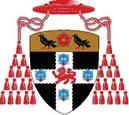
Choral Scholarships
worth up to £8000 in boarding fees
Does your son have a good voice and show an interest in music?
If so,why not come and visit us?
While your son sings to the Cathedral Organist,you can take a look round this historic school.
In addition to the annual intake in Form 3 (age 7) we have one vacancy in next year’s Form 5 (age 9).
Organ Edition 1-85311-735-8
Spiral- bound with printed softback covers · 320pp
Usual Price £25.00
With 25% Grant* £18.75
To order/request a grant application form:Tel:01603 612914 Fax: 01603 624483 SCM-Canterbury Press Ltd,St Mary’s Works,St Mary’s Plain, Norwich NR3 3BH.E-mail:orders@scm-canterburypress.co.uk
*To qualify for a GRANT OF 25% an order for a minimum of 20 COPIES,in any combination,of New English Praise hymn books,together with a completed grant application form (available on request from SCM-Canterbury Press Ltd) must be received.
CMNEP06
For further details please contact: Miss Diane Price, Admissions’ Secretary, on 01865 242561 email: registrar@cccs.org.uk; www.cccs.org.uk
3 Brewer Street, Oxford OX1 1QW
Cathedral Music 55
NEWSBITE News from Choirs and Places where they sing
3302 Cathedral Music MAY 06 v2 22/5/06 16:10 Page 55
Book & Music Reviews
Maurice
Duruflé:
SOUVENIRS ET AUTRES ECRITS (REMINISCENCES AND OTHER WRITINGS)
Seguier, ISBN: 2-84049-411-6 (available in UK from Access Music Direct, tel: 0207 584 1926 at £19.85 plus £2.15 p&p in UK) Edited by Frédéric Blanc. Fastidious, modest, tongue-tied: all epithets which have been applied to Maurice Duruflé, who died in 1986. His last published work was Opus 14 (!) yet he is increasingly seen as a very considerable figure in 20th century French music and an enormously influential teacher as well as composer and performer. The ‘Souvenirs’ account for the first 50 or so pages, and are described by Duruflé as recounting the ‘happy times’ of his life and one can only speculate about how selective these are. Certainly modest, almost certainly fastidious! They offer fascinating insights into what he regarded as key episodes in his life – at Rouen and in Paris as a student. The ‘other writings’ include correspondence on a wide range of topics from organ building to liturgical reform, the latter certainly not among the ‘happy times’. One might presume to take issue with some of his views on the aftermath of Vatican II, but there is no doubt about where he stood (‘plunged into total disarray…’) Duruflé felt keenly that Latin was the language best suited to plainsong, not just, one assumes, because the French word for sanctus has only one syllable (saint) but because of its very ethos. As far as I can establish he once published one setting of French words – Notre pére, his last work. Duruflé writes of the ‘artificial void’ which has been created by the ‘suppression of Georgian chant’. At any event, Duruflé provides powerful testimony of the powerful influence of Latin plainsong. The book has valuable insights into his contemporaries and the midtwentieth century musical scene in France. By its nature – fragmented into fairly short letters or sections – it is additionally an ideal book for dipping into if you’re daunted by the prospect of a solid read. Don’t be put off by the fact that the book is (so far) only in French: the language is for the most part lucid and direct and, one imagines, carefully polished and edited. We owe a dept to Frédéric Blanc, who has brought this important collection into being and for all he does as musical director of the Maurice and MarieMadeleine Duruflé Association. The book might have been better with an index, though there are copious Annexes. Overall, this is a significant contribution to Duruflé studies which deserves a readership beyond the purely specialiSt
Richard Osmond.
THE ORGANISTS AND ORGANS OF HEREFORD CATHEDRAL
Watkins Shaw and Roy Massey
72 pages ISBN 0 90464 216 X. Hereford Cathedral Organ Committee
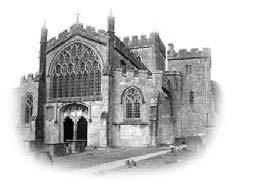
£5.95p plus £1.50p p&p (cheques to Hereford Cathedral Perpetual Trust; 5 The Cloisters, Hereford HR1 2NG – also available at Hereford Cathedral Shop)
This beautifully produced booklet has it all – a well researched history of the organists of Hereford Cathedral since 1517 by the eminent scholar Dr Watkins Shaw; a thoroughly well informed account of the organs by Dr Roy Massey up to and including the rebuild of the famous Willis (completed earlier this year); a lavish selection of excellent photographs of historic intereSt The whole publication has been overseen by the present organist, Geraint Bowen and it is difficult to see how it could have been done better. Highly recommended – an enthralling read and a real bargain!
Alan Spedding
TAKING STOCK: THE FIRST SIXTY YEARS
Humphrey Clucas £9.99 The Lewin Press ISBN 0-9550470-0-5
Order direct from The Lewin Press, 19 Norman Road Sutton Surrey SM1
2TB 0208 642 3233
Asked if I might consider reviewing this volume of autobiographical reminiscences by Humphrey Clucas, my contact, without knowing him, had formed the cursory opinion that the author sounded somewhat ‘opinionated and supercilious’. Having read, and ultimately enjoyed, the book I can understand why he might have formed that view. Clucas has not been afraid to voice trenchant and occasionally withering opinions of circumstances and personalities, which might persuade the reader to categorise Clucas himself as ‘a jumped up twit’, an epithet he uses to describe one of his erstwhile colleagues! In truth a few punches have actually been pulled, for we are assured in the Preface that four copies of an unexpurgated edition do exist mainly for family consumption but what remains is still forthright. Knowing Clucas, it is nothing less than I would have expected! Through this book we learn of Clucas`s early family life in Lancashire (his grandfather was a noted seed merchant and one time mayor of Ormskirk); of family tragedy; of his education at prep school and at Uppingham; of his time as a choral scholar at King`s, Cambridge, under David Willcocks; and then of his four-pronged career as teacher, poet, composer and singer. All is recalled with clarity and honesty (occasionally bordering on the brutal) but tempered with that dry wit which close acquaintances will recognise. How did the ubiquitous responses come to be written? What prompted Clucas to embark on a new translation of Catullus? What was the secret of the Clucas `leg-break` and which current cathedral organist was to be his final victim in his very last cricket match? What finally prompted him to quit a successful teaching career to be a full time lay vicar at Westminster Abbey? What was the truth about the Martin Neary scandal? This latter provides perhaps the most fascinating chapter in the book for the non-partisan reader. So much was written at the time, polarising the nation into a pro- or anti-Neary lobby, that it was hard to gain a clear view. Clucas gives us an unambiguous and reasoned exposition of the whole affair, with full reference to Lord Jauncey`s Determination, which, written by one as close to the action as he was, gives authority to his conclusions. Well worth the price of the book for this chapter alone! Look closely at anyone’s life story and there will be surprises and fascinations to be found amongst the mundane and humdrum but there is little doubt that Clucas`s story has more than most and his erudition and style make this a worthwhile read. In promoting this volume to his friends and acquaintances, Clucas explains that what the book really needs is a one sentence Preface: ‘Everyone will have to forgive the paragraph about himself!’ Humphrey, I do!
Simon Deller
Edington Festival
August 20 – 27, 2006
The 51st Festival of Church Music within the Liturgy
Priory Church of St Mary, Edington, near Westbury in Wiltshire
Information from: John d’Arcy, The Old Vicarage, Edington, Westbury, Wiltshire BA13 4QF Tel: 01380 830512
Cathedral Music 56
3302 Cathedral Music MAY 06 v2 22/5/06 16:10 Page 56
Saturday July 8th
7.30 pm
Mozart Symphony No.40 & Mass in C minor K 427
Sunday 9th July
10.30 am
Festival Eucharist
9.00 pm
Bach by Candlelight: Jill Crossland piano
Monday 10th July
7.30 pm
Deakin Chamber Players with Richard West clarinet
Tuesday 11th July
7.30 pm
Love and Women:Kathryn Harries,Sarah Beth Briggs & Margaret Howard
Wednesday 12th July
7.30 pm
Wayne Marshall organ and piano with Natalie Clein cello
Tel: 0121 475 4408
SALISBURY CATHEDRAL
Be a Chorister for a Day
Saturday November 11 2006
An Open Day for prospective choristers in Years 2, 3 & 4 and their parents
Voice Trials
Boys - Saturday January 20 2007
Girls - Saturday February 3 2007
For children currently in Year 3 or 4 Organ Scholarship
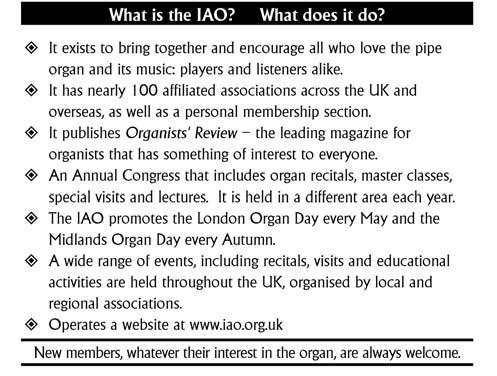
For academic year 2007-08
An ideal opportunity for a student to experience all aspects of cathedral music in a unique setting
Closing date: Monday November 13 2006

Auditions: Monday December 11 2006
For an informal discussion with the Director of Music and/or further details of the Open Day and Voice Trials please contact: The Director of Music
Department of Liturgy and Music, Ladywell 33 The Close, Salisbury SP1 2EJ Tel: 01722 555148
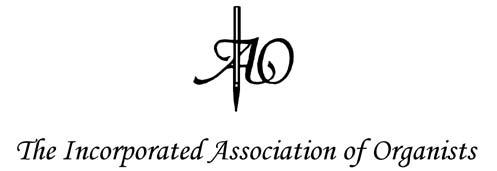
E-mail: litmus@salcath.co.uk

July 8th-15th 2006
Thursday 13th July
7.30 pm
ZUM Gypsy Tango Inferno
Friday 14th July
7.30 pm
The Choir of St John’s College,Cambridge
10.00 pm
David Briggs: Live Organ Improvisation to The Lodger
Saturday 15th July
7.30 pm
Gilbert & Sullivan
The Pirates of Penzance from scratch conducted by David Hill
Plus a full programme of DAYTIME EVENTS
Call 01228 526646 for a Festival Brochure or visit www.musicinthecathedral.org.uk
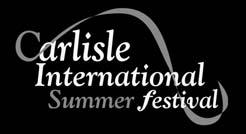
SOUTHERN CATHEDRALS FESTIVAL 2006
Salisbury Cathedral
July 19 – 23
The choirs of Chichester, Salisbury and Winchester Cathedrals in 5 days of services and concerts are joined by Young Musicians
Sarum Voices
Salisbury Community Choir
David Stancliffe
David Briggs
Barry Rose
Dept of Liturgy and Music, Salisbury Cathedral, 33 The Close, SP1 2EJ
Tel: 01722 555148 E-mail: s.flanaghan@salcath.co.uk
Box Office: 01722 320333 www.southerncathedralsfestival.org.uk
Cathedral Music 57
3302 Cathedral Music MAY 06 v2 22/5/06 16:10 Page 57
CD Reviews CHORAL
MOON, SUN & ALL THINGS
Baroque music from Latin America
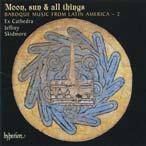
– 2.
Ex Cathedra. Director: Jeffrey Skidmore.
HYPERIONCDA67524 TT 76:50
This fascinating recording takes the form of Vespers as it might have been sung in a Latin American cathedral during the seventeenth and eighteenth centuries. The programme is an intoxicating mix of grand (New) Spanish baroque settings of the familiar Latin texts interspersed with lively popular villancicos with sacred texts and sacred motets in the Aztec language. The scene is set by the haunting anonymous setting of a Quechua (Inca language) poem, Hanacpachap cussicuinin, the earliest printed polyphony from the South American continent. The great Inca Manco who resisted the Spanish Conquistadors is said to have told his countrymen: ‘Don’t forget the rituals of your ancestors…do what you have to in public, but in private, keep our old customs and ceremonies close to your hearts.’ Some of this sentiment is reflected in this programme. It is sobering to reflect that without the wholesale destruction by the Spanish of the last independent high culture on earth, this music would not exist in all its rich diversity. The musicians of Ex Cathedra under Jeffrey Skidmore add further lustre to their reputation with some ravishing vocal and instrumental performances which are by turns exuberantly sophisticated and intensely moving in their simplicity. A short review cannot hope to do justice to this wonderful CD. Buy it!
Alan Spedding
CLOUDBURST
And other choral works by Eric Whitacre.
I thank you God for most this amazing day; I hide myself; Sleep; I will wade out; Go, lovely Rose; When David heard; Hope; faith, life , love; With a lily in your hand; This marriage; Water Night; A boy and a Girl; Her sacred spirit soars; Lux aurumque
Polyphony. Director: Stephen Layton. Piano: Stephen Betteridge. Percussion: Robert Millett. HYPERION CDA67543 TT 70:50

This is one of the most exciting discs to come onto the market and it is no surprise that Hyperion has chosen to record the music of 35-year old American composer Eric Whitacre. It gets better because the music is recorded by Stephen Layton’s Polphony. The music is immensely beautiful and evocative. The centrepiece Cloudburst is incredibly exciting and uses Whitacre’s keen imagination for colour. Piano and percussion (including wind chimes and thunder sheets) are joined by handbells as well as clapping, finger-clicking and thigh-tapping by the singers to create, most effectively, a simulated rainstorm. The choral writing is delicate, fine, wonderful and intense in places and the whole experience is quite simply stunning. Whitacre has an ability to create emotional choral music. The fact that this disc is thrilling is not just because of the choral writingPolyphony’s contribution adds to an exhilarating occasion. The precise and secure tuning of Layton’s group, with effective, elegant phrasing and ensemble makes this more than a winner – it is a superb disc.
Andrew Palmer
LASSUS: PENITENTIAL PSALMS.
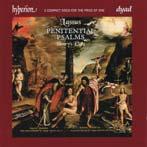
Henry’s Eight. Director: Jonathan Brown.
HYPERION 2 CDs CDD22056 TT142:29
Henry’s Eight has the flair and ability to take us on a distinctive journey back to the 1560s with an impressive display of sonorous singing. The magnitude of resonance created by this group is striking. To have all the Penitential Psalms on two discs is great news. The most expressive psalm De profundisclamavi is delicious in expression. This disc will give much satisfaction for wholly admirable performances of Renaissance music. The eight voices have been captured splendidly by Hyperion, whose recording technique is to be praised. A useful addition to the catalogue.
Patrick Mayhew
A THING MOST WONDERFUL
Mathias Lift Up your heads; de Séverac Tantum Ergo; Duruflé Ubi caritas; Moore It is a thing most wonderful; Byrd Civitas sancti tui; Casals O vos omnes; Bairstow The Lamentation; Lotti Crucifixus pro nobis; Vaughan Williams Easter; Wesley Blessed be the God and Father; French Melody Now the green blade riseth; Leighton An Easter Sequence
Ripon Cathedral Choirs. Director; Andrew Bryden. Organ: Thomas Leech. REGENT REGCD225 TT 63:03

It is obvious from this recording that very good work is being done at Ripon, and the singing is of a high standard throughout. Both the boy and girl choristers are heard, one group or the other joining with a very good set of lay clerks for a mixed anthology taking the listener from Byrd and Lotti to Mathias and the cathedral’s current organist, via SS Wesley, Bairstow and Vaughan Williams. Kenneth Leighton’s An Easter Sequence is the only extended work on the disc, given an assured performance by the boys and girls together. My only regret is that the edition used for the Bairstow Lamentation seems to be that in OUP’s Ash Wednesday to Easter for Choirs, which for no good reason removes some of Bairstow’s original punctuation and thereby takes away some of the drama from this masterpiece. That apart, this anthology is very enjoyable and well-worth buying.
Timothy Storey
SONGS OF THE SOUL
Surinach Noche oscura; Gozo a la fé;Delirio del alma; Llama de amor viva; Victoria Iste Sanctus; O Quam Gloriosam; Beati Immaculati; Ridout O flame of love so living; Manning Romanca VI; Maclean Aunques es de Noche; Burgon But have been found again; Rütti An den Geist
The Saint Louis Chamber Chorus. Director: Philip Barnes. GUILD GMCD 7272 TT 58:09
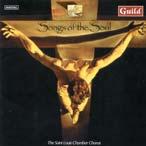
This is a recording made by a professional chamber choir and a director with experience of singing in a good number of British cathedral choirs. A feature of this disc is the works by the twentieth century composer Carlos Surinach, with texts from poetry by the Spaniard, St John of the Cross. An individual yet accessible style in this music is coupled with a clear sound from the choir. Music by Victoria, who shares his birthplace with St John of the Cross, is also featured. These Victoria interpretations might just be a little too refined in comparison to the current British trends, but nonetheless, are true to the quality of the musical line. To record a disc containing the same a cappella vocal forces for such a length of time is a brave move on Philip Barnes’s part. However, so much of the disc is previously unrecorded that there is enough interest for most people to go with it.
Stephen Power
SERVICE MUSIC OF BASIL HARWOOD
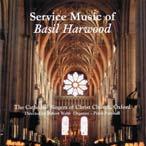
Morning & Evening Service in E minor; Morning & Evening Communion Service in A flat. The Cathedral Singers of Christ Church, Oxford. Director: Robert Webb. Organ: Peter Parshall. OXRECS DIGITAL OXCD-95 TT 56:27
A thoroughly good sing… or pedestrian late-Victorian nonsense: however you view his music, Basil Harwood can lay claim to having penned one of the most popular and regularly-performed settings of the evening canticles (which concludes this programme). In spite of this, I suspect that the other music here has never or at least only rarely, been recorded before this disc materialised. The Cathedral Singers of Christ Church, Oxford – a fitting choice given Harwood’s long association with the city – are a mixed, adult choir who tackle what is actually quite technically-challenging music with the requisite verve and are on top of the music throughout, even if some of the pronunciation is daft (fellowsheep?!). The works display an originality of thought and assured grasp of musical form which belies the criticism that Harwood’s music is somehow emotionless, predictable or even easy to sing.
Martin Wolf
Cathedral Music 58
3302 Cathedral Music MAY 06 v2 22/5/06 16:10 Page 58
HOW LOVELY ARE THY DWELLINGS
Boyle Thou, O God; Weelkes Hosanna to the Son of David; Tomkins Psalm 23; Mendelssohn His star shall shine with Jacob’s splendour;Hear my prayer; Stanford A Song of Wisdom; Brahms How lovely are thy dwellings; Purcell Jeovah, quam multi sunt hostes mei; Wesley Wash me throughly; Somervell Flow fast my tears; Blatchley For the fallen; How An Easter Greeting; Haydn Insanae et vanae curae; Batten O sing joyfully Worcester Cathedral Voluntary Choir. Director: Daniel Phillips. Organ: John Wilderspin. REGENT REGCD206 TT 71:30
Worcester Cathedral unusually boasts two choirs comprising boys and men. It is the lesser known of the two that we are treated to here. The boys attend different schools in Worcester and further afield and the men follow a variety of professions. The choir is healthy in number, and this recording speaks volumes of the healthy repertoire that they enjoy. The singing is of a consistently high standard, with lashings of light and shade in expressive phrases, but perhaps without the refinement of tone you might expect to hear in a professional cathedral choir singing daily services. A professional choir they are not, but their achievement is enviable, and I am sure that many cathedrals would be proud to have a choir of this quality singing daily services. This must be, in part, due to the skill of Daniel Philips their director, who has recently left Worcester to take up a teaching post at King’s College School, Wimbledon.
Stephen Power
GEISTLICHES LIED
German choral and organ music in the Romantic tradition.
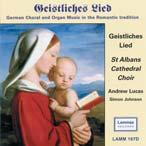
Brahms Geistliches Lied; Ach, arme Welt; O Welt, ich muß dich lassen (organ); Rheinberger Abendlied; Cantus Missae; Benedictus (organ); Mendelssohn Ave
Maria; Verleih uns frieden; Bruckner Os justi; locus iste. St Albans Cathedral Choir. Director: Andrew Lucas.
Organ: Simon Johnson.
LAMMAS LAMM 167D TT 64:36
Much of this music has become quite well-known of late, and for this recording the choir has selected Brahms, Bruckner and Rheinberger from its copies of the OUP anthology European Sacred Music, plus Rheinberger’s Mass in E flat for double choir and Mendelssohn’s Ave Maria for tenor soloist and eight-part choir. Organ music by Brahms and Reger completes a highly satisfying and enjoyable programme, all very well performed; the singing of this most capable choir is strong and expressive, with only occasional moments of dubious intonation in that quite marvellous but very taxing Rheinberger Mass. My only serious quibble is with some of the speeds: Ave Maria is distinctly ponderous (pity the poor soloist) and you would never guess from this performance that Bruckner’s familiar Locus iste is marked Allegro moderato. That apart, it is an excellent disc, and well-worth buying, especially if some of this music is still unfamiliar to you.
Timothy Storey
IN HIS TEMPLE
The music of Edward Elgar.
Great is the Lord; Ave Verum; Sonata in G (1st Movement); O salutaris hostia; Ave Maria; Give unto the Lord; Doubt not thy Father’s care; Te Deum; Benedictus.
The Choir and organ of St Paul’s, Rock Creek Parish, Washington DC USA. Director and solo organist: Graham Elliott. Organ: Neil Weston. LAMMAS
LAMM 187D TT 58:24
Dr Elliott’s choir at Chelmsford Cathedral was justly admired for its beautiful tone, impeccable tuning and flawless ensemble. Many of those qualities are evident in this recording by the mixed-voice professional octet of the historic church in Washington where he now directs the music and it is clear that considerable care has been taken over the preparation of these performances, perhaps occasionally at the expense of vitality. The smaller-scale pieces are the most successful: the anthems Give unto the Lord and Great is the Lord and the Te Deum and Benedictus are simply too large for adequate performance by an octet, however good, and the strain takes its toll on the sopranos’ tuning, especially in Give unto the Lord. The star of the show is the new organ, a modestly-sized two manual which, we are told, ‘thinks like a large organ even though it is relatively small.’ This puts it rather well, actually, your reviewer merely lamenting that most of the organs he plays do not appear to have any coherent thoughts at all; for this instrument is fully equal to all the demands made on it in this programme. This disc is enjoyable and of great interest, but it cannot be denied that there are much better performances of most of the music on the Naxos recording by Christopher Robinson and the choir of St John’s College, Cambridge.
Timothy Storey
LOVING SHEPHERD

Hymns sung by the choirs and congregation of Blackburn Cathedral. Director: Richard Tanner. Organist: Greg Morris. LAMMAS LAMM 180D TT
71:23
This is a highly satisfying anthology, well sung by the many and various groups of musicians who make up the lively musical establishment at Blackburn. Particularly to be commended is the Young People’s Choir, whose unaccompanied singing is quite delightful even if a little youthful immaturity is detectable in the vocal tone. The programme has been chosen imaginatively, the term ‘hymn’ having been widened to include choral music such as Let all the world (Vaughan Williams) and the Jubilate from the Collegium Regale service by Howells; and old favourites rub shoulders with less familiar material. The quieter and more reflective interpretations are the most successful, for speeds are often too fast (the curse of BBC Songs of Praise strikes again) and there is a tendency to romp through such classics as Crown him with many crowns without much thought for the words; the Howells Hymn for St Cecilia also is also sung in a brisk matter-of-fact manner that releases nothing of the music’s emotion. As for the brass arrangements, the less said the better, though fortunately the ubiquitous holy flute has a day off. Your reviewer’s personal dislikes notwithstanding, this is a much better disc than most of its kind, well worth buying.
Timothy Storey
ALL THE ENDS OF THE EARTH
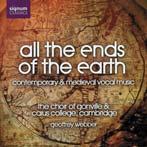
Contemporary & medieval vocal music.
Weir All the Ends of the Earth; Weeks Sint lumbi; Northcott Salve Regina; Alam Redemptoris Mater; Finnissy Stabant autem iuxta crucem; Dunstaple
Quam pulchra es; Holloway Sanctus and Agnus Dei ( Missa Canonica); Harvey O Jesu, Nomen Dulce; Jackson Thomas, Jewel of Canterbury.
The Choir of Gonville & Caius College, Cambridge. Director: Geoffrey Webber. Countertenor: William Towers. SIGNUM RECORDS SIGCD070. TT 71:12
The sound-world of the middle ages seems to be proving a fruitful source of inspiration to contemporary composers, if this cleverly-constructed and satisfying anthology is anything to go by. Its title is derived from the Millennium commission by Judith Weir with which the programme begins, music based on an organum of Pérotin, decked out with harp and percussion, and quite beguiling. Indeed the performances throughout are utterly convincing, though your reviewer is glad that he did not have to sing some of this music, for the difficulties are clearly formidable. The bestknown of the composers represented here are Jonathan Harvey, Bayan Northcott and Gabriel Jackson, whose Thomas, Jewel of Canterbury, the most substantial work included, seemed to your reviewer perhaps to overstay its welcome. The College’s own Robin Holloway contributes a reworking of movements of a Mass written some forty years previously, music of quality as ever with this composer. In general these new compositions seemed to be of higher standard and more accessible than those on the Dunedin Consort’s People’s Mass, reviewed elsewhere; it would be good if some of this style filtered through into composition for the church’s liturgy, and discerning collectors should not miss this admirable new disc.
Timothy Storey
WILLIAM BYRD Anthems, Motets & Services.
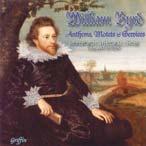

Psallite Domino; Ne irascaris; Laetentur caeli; Senex puerum portabat; Sing joyfully; Non vos relinquam; Vigilate; Justorum animae; Haec dies; Teach me O Lord; Rorate coeli desuper; Ave verum; Second Service; Exsurge, Domine; Sacerdotes Domini; Short Service; Laudibus in sanctis.
Hereford Cathedral Choir. Director: Geraint Bowen. Organ: Peter Dyke.

GRIFFIN GCD4048 TT 65:16
What a musical feast! I can’t get enough of Ne irascaris, which the choir incidentally sang on Radio 3 for its last Choral Evensong broadcast The performance really draws you in, with a beautiful ebb and flow in the phrase structures. For the most part, the boys sound relaxed, and the whole choir sings with a real warmth of tone, helped in part by the building’s acoustics. The more joyful motets have real bounce and flare and any sign of sharp singing shows the choir’s enthusiasm for the music, which, in turn, will transport you, if only for 65 minutes, into another dimension.
Stephen Power
Cathedral Music 59
3302 Cathedral Music MAY 06 v2 22/5/06 16:10 Page 59
THE PEOPLE’S MASS
‘Six contemporary Scottish-based composers: Malcolm Lindsay; Christine McCombe; Tommy Fowler; John Gormley; Anthea Haddow; Rebecca Rowe come together in this new Mass setting performed by the Dunedin Consort.

DELPHIAN DCD34018 TT 64:00
‘Six contemporary Scottish-based composers come together in this new Mass setting performed by the Dunedin Consort. Polychoral pieces interweave with harp-accompanied songs in a spiritual work that achieves unity in diversity, designed to stimulate and inspire the listener’s inner soul.’ So says the cover of this CD. It is a record (in both senses of the word) of a project to combine the plainsong of the Latin Propers for All Saints with settings of the Ordinary, each movement by one of six Scottish composers who also each contribute a solo song, one for each member of the Dunedin Consort. The music was taken on tour around Scotland in December 2002, local choirs of young people being given the task of singing the plainchant, and I can well believe that participants and listeners alike were deeply moved; dance and lighting enhanced the original performances. The singing on this disc is excellent throughout, though its title is misleading to any lover of plainchant who might be tempted to buy it, as the chant represents only a small part of the contents; devotees of contemporary choral music will find it of great interest
Timothy Storey
REGINA CAELI
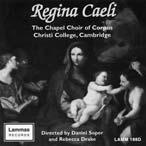
Harris Bring us, O Lord God;Faire is the Heaven; March Phos Hilaron; Magnificat & Nunc Dimittis; Be still and know; Marian Antiphon No 3; Spiritus; A Song of Revelation; O’Regan Sub tuum praesidium; Britten
A Hymn to the Virgin; Grieg Ave Maris Stella; Eccard Presentation of Christ in the temple; Stravinsky Ave Maria; Gesualdo O vos omnes; Górecki Totus Tuus; Arr Cleobury Joys Seven.
LAMMAS LAMM 188D TT 67:35 The Chapel Choir of Corpus Christi College, Cambridge. Directors: Daniel Soper and Rebecca Drake LAMMAS
LAMM 188D Total Time: 67:35
This is certainly an eclectic selection of music, ranging from Gesualdo’s devasting O vos omnes to Gorecki’s now-familiar Totus tuus, with some Grieg, Britten and Harris thrown in for good measure. But the central focus of this disc is the work of Andrew March (b. 1973), who has written several works specifically for this choir. The choir cope well with his approachable, yet interesting harmonic language, particularly in the simple beauty of Be still and know that I am God. Throughout the disc there are some slight fluctuations of intonation and uneven balance where one hears individual voices rather than a truly blended sound, but diction is for the most part good and the sound is vibrant and youthful. The programme is entirely a cappella (apart from Stephen Cleobury’s arrangement of the carol Joys Seven) and the two young organ scholars clearly know how to coax the best out of their singers.
Julian Thomas
PEACE ON EARTH
Sacred and secular music by Orlando Gibbons. The Silver Swan; Song 1; Almighty & everlasting God; Great Lord of Lords; Galliard; Song 46; If ye be risen again with Christ; Prelude; Hosanna to the Son of David; Nay let me weep; This is the record of John; O thou the central orb; Ground; O God, the King of Glory; O Lord, in thy wrath; What is our life; Pavan; Song 44; see, the Word is incarnate.
Truro Cathedral Choir. Director; Robert Sharpe. Organ: Christopher Gray.
LAMMAS LAMM 190D TT 67:03
There is something uniquely satisfying about the music of Orlando Gibbons, to this reviewer at any rate, and the Truro choir’s singing is always rather special. Nor did this disc disappoint expectations; performances are vivid, from singers clearly full of zest and enjoyment, even if as a result some of the solo singing is only just within the bounds of good taste! One can have too much ‘ghastly good taste’ anyway, and even if the speeds are sometimes a little on the fast side one’s attention is held throughout. The experiment of including a few secular consort songs is perfectly successful, the dividing line between sacred and secular being by no means clear-cut in Gibbons’s day; and it is good also to hear amid more familiar fare Great Lord of Lords, If ye be risen again with Christ and O thou the central orb; and what fine music there is in O God, the King of glory and O Lord in thy wrath rebuke me not. Are these still sung regularly in our cathedrals? So, add this one to your collection, and prepare to enjoy yourself.
 Timothy Storey
Timothy Storey
ANTONY PITTS: SEVEN LETTERS
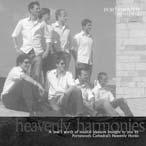

Adoro te; The Lord’s Prayer; the First and Last; Seven Letters; O Love; O wisdom of God; O Holy of Holies; Amen.
Tonus Peregrinus. Director: Antony Pitts.
HYPERION CDA67507 TT 61:25
Antony Pitts (b. 1969), a senior producer for BBC Radio 3, has written choral music for many distinguished ensembles, and has the rare distinction of having written a motet for forty voices; here he directs a selection of his output in performances by the group he founded while a student at New College, Oxford. Apart from The first and last, an early and melodious essay in ‘the robust genre of a worship-song’, and the only piece in fewer than eight parts, his music relies for its effect on the colour created by dense, added-note chords, overlaid with short and rather angular phrases for solo voice; there is little development in the conventional sense, and not a great deal of melodic interest, though the repetition of certain motifs does bind the music together to an extent. The disc takes its title from a setting of seven passages from Revelation (‘to the church in x write y’ etc), which are rather grim but undeniably effective, and the other substantial work is the Advent Antiphons, the traditional seven plus an additional one of French extraction, framed and given unity by the refrain ‘Come, Lord Jesu’. This is difficult music for performers and listener alike, and perhaps only of interest to enthusiasts for this school of composition.
Timothy Storey
HEAVENLY HARMONIES
Portsmouth Cathedral’s Heavenly Hunks
Crazy little thing called love; Sicut Cervus; Blackbird; Short people; Away in a manger; Blue Moon; In Manus Tuus; Berkeley Sq; God so loved the world; How deep is your love?; God only knows; I get around; If ye love me; And so it goes; Magnificat/Nunc Dimittis; Tears in Heaven; What I did for love; Circle of life.
Available from Portsmouth Cathedral
After three years of cheeky charity calendars, raising an amazing £10,000 for Macmillan Cancer Relief, the Heavenly Hunks are back. This time it’s their voices that are attracting attention. The close harmonies blend the old with the new, contrasting the sacred with Sixties hits and contemporary classics. They continue to delight with great singing; I loved the Nightingale Sang in Berkeley Square and How deep is your love? Many will be disappointed that the group have finished taking their clothes off for charity but the singing is just as good as their bodies! For enjoyable singing from all genres then buy this disc in support of Macmillan Cancer Relief.
Andrew Palmer
PIERRE VILLETTE
O sacrum convivium; Hymne lá Vierge; Attende, Domine; Notre Père d’Aix; Inviolata; Tu es Petrus; O quam suavis est; Salutation angélique; Strophes polyhoniques pour le Veni Creator; Panis angelicus; O salutaris hostial; Ave verum; Salve regina; O quam amabilis es; Jesu, dulcis memoria; Adoro te; O Magnum mysterium. Holst Singers. Director: Stephen Layton. Organ: James Vivian. HYPERION CDA67539 TT 62:42
I have loved the music of Pierre Villette since hearing it for the first time at a Worcester Three Choirs when Donald Hunt was the Festival Conductor. Villette’s music is sonorous and mysterious, creating the right atmosphere to capture the words he has set to music, ably demonstrated on this disc by O quam suavis est to name but one choice. What we have on this recording is assured singing from the Holst Singers under Stephen Layton, where the sopranos bring out the sensual elements of the compositions. If I was going to choose a record company to commit Villette’s music to disc, then Hyperion would be my first choice and the team involved in this production do not let composer or musicians down, capturing the mood so well, although the venue, The Temple Church, adds by creating a good acoustic. It is a cracking CD and one of the most exciting 2006 releases for me and highly recommended.
 Andrew Palmer
Andrew Palmer
Cathedral Music 60 3302 Cathedral Music MAY 06 v2 22/5/06 16:13 Page 60
THE HYMNS ALBUM

Huddersfield Choral Society. Director: Joseph Cullen. Organ: Darius Battiwalla. SIGNUM
CLASSICS SIGCD079 TT 77:00
This is great singing from a body of singers who know how to perform hymns – The Huddersfield Choral Society. From the opening Jerusalem through to the final Christ is made the sure foundation it is a jolly good sing, which is well-supported by the organ and occasional trumpets, trombones, horn and timpani. The only negative is the predictable children’s voices in Morning has broken and Be still for the presence of the Lord, it is so clichéd. Joseph Cullen and Darius Battiwalla, who between them have arranged a number of the hymns, get the best out of choir and organ and we have hymn singing where nothing is restrained and therefore the music contains the passion which is so often missing from the copious hymn CDs on the market. Messers Cullen and Battiwalla are not afraid to enjoy their hymn singing. J W Elliott’s tune Day of Rest for O Jesus I have promised is a very welcome choice and let’s hope we hear it more often. The hymns are not all loud either - we have some lovely arrangements not least This joyful Eastertide.In between we have Coe Fen for How shall I sing, Thine be the glory, Love divine to Blaenwern and Nun danket – in essence the best of the bunch. If you want meaty organ playing coupled with great singing - then this is one of the few discs available which gives you both. I was surprised to see is as a Signum release. This record company is certainly making a name for itself in our field.
Ian Morgan
GUILDFORD CATHEDRAL CHOIR
Barry Rose and the early years 1961 – 1973 A double CD. Please see flyer enclosed with this edition of CATHEDRAL MUSIC. This CD is not being marketed or distributed commercially and Michael Barry is the sole distributor. GCOC 6173 CD1
How times and styles change. What we have here is Barry Rose setting out in his first cathedral post at Guildford Cathedral. The results are what you would expect from a man who would go on to distinguish himself as one of the most outstanding choir trainers of our time. Of particular note on this CD are the psalms and in particular the way the choir feels the words and the accompaniments are never intrusive but fill the acoustic – it is definitely an art form that has been lost over the years. In fact, we have Barry Rose taking a rehearsal of Psalm 6. One piece that for me, seems to have disappeared from cathedral music lists and CDs is Wood’s Magnificat in F (Coll Reg).When was the last time you heard this sung? Here it is given a good performance along with many other gems, although there are a couple, and only a couple, of tracks that have not stood the test of time. There is a 30 second track, of an excerpt from a lecture/demonstration on choir training by Alwyn Surplice. The recordings range from 1961 to 1973 and should be used in conjunction with Simon Carpenter’s excellent book The beat is irrelevant, published in 1996. The CDs, by being sold, are making a valuable contribution towards the maintenance of a chorister in Guildford Cathedral Choir. What makes the tracks on these two discs even more appealing is that all but three were recorded either in services or concerts.
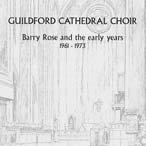 Andrew Palmer
Andrew Palmer
International Church Music Festival at Chester Cathedral
June 16 – 18,2006
Choirs of the world unite in this three-day global concert of sacred and classical music conducted by Sir David Willcocks with Paul Leddington Wright as Artistic director. Music by Handel, Mozart, Rutter, Parry and more. This annual event, traditionally in a beautiful historic setting, comes to Chester for the second time in the festival’s 22 year history.
For tickets telephone 01244 340392
CD Reviews RE-RELEASES
WILLIAM CROFT AT ST PAUL’S
Te Deum in D; Rejoice in the Lord, O ye righteous; The Burial Service; Jubilate in D. The Choir of St Paul’s Cathedral, London. The Parley of Instruments. Director: John Scott. HYPERION (HELIOS)CDH55252 TT 71:33
MATTHEW LOCKE
Anthems, Motets, and Ceremonial Music.
Descende caelo cincta sororibus; How doth the city sit solitary?; Super flumina Babylonisl O be joyful in the Lord; Audi, Domine, clamantes ad te; Lord, let me know mine end; Jesu, auctor clementi; Be thou exalted, Lord.
Choir of New College, Oxford. The Parley of Instruments. Director: Edward Higginbottom. HYPERION (HELIOS)CDH55250 TT 66:59
NICOLAS GOMBERT
Credo; Haec dies quam fecit Dominus; Qui colis Ausoniam; Salve regina; O beata Maria; Vae, vae Babylon; Media vita in morte sumus; Lugebat David Absalom.
Henry’s Eight. Director: Jonathan Brown. HYPERION (HELIOS)CDH55247 TT 69:54
ANERIO
Requiem and Six Motets The Choir of Westminster Cathedral. Director: James O’Donnell. HYPERION (HELIOS) CDH55213 TT 72:23
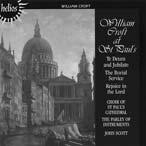
HAYDN
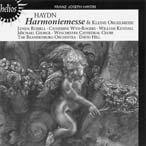
Harmoniemesse & Kleine Orgelmesse.
Soprano: Lynda Russell. Alto: Catherine WynRogers. Tenor: William Kendall. Bass: Michael George. The Choir of Winchester Cathedral. The Brandenburg Orchestra. Director: David Hill. HYPERION (HELIOS). CDH55208 TT 56:03
MOTETS BY PETER PHILIPS


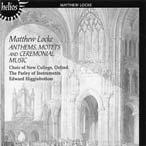
The Choir of Winchester Cathedral. The Parley of Instruments. Director: David Hill. HYPERION (HELIOS)CDH55254 TT 61:26
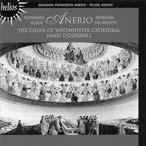
All the CDs in this collection of re-releases have stood the test of time and convey some exemplary performances from John Scott, James O’Donnell, David Hill. For me though, the Gombert is particularly haunting and Jonathan Brown’s Henry’s Eight produces superb tuning and phrasing. If you missed any of these discs first time round then don’t make the mistake of thinking that recordings made between 1989 and 1996 have nothing to offer. They are stylish and glorious and contain singing of the highest quality. Listen to how O’Donnell shapes the Anerio Requiem with his old choir down the road at Westminster Cathedral. Hyperion has a knack of showing just how good its recording quality was and for capturing some of the finest choirs around. In fact, it still manages to create those perfect discs where a cappella music rings out. Ted Perry captured a snapshot of history and you will not be disappointed with any of the results from this collection.
Patrick Mayhew.
Cathedral Music 61
3302 Cathedral Music MAY 06 v2 22/5/06 16:13 Page 61
CD Reviews ORGAN
BAROQUERY
Peter King plays baroque works on the Klais organ of Bath Abbey Buxtehude Toccata in D min;Chorale Fantasia ‘ Wie schön leuchtet der Morgenstern’; Pachelbel Chaconne in F min; Albinoni Concerto in B flat; Bruhns Praeludium in E minor (Great); Ximenes Batalla de sexto tono; Blow Cornet Voluntary in A min; de Grigny Dialogue sur les Grands Jeux (Veni Creator); Couperin Four Movements from Messe pour les Couvents; Bach Prelude and Fugue in C, BWV547. REGENT REGCD222 TT 78:23
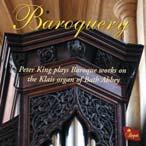
Peter King and the 1997 Klais organ of Bath Abbey excel on this wonderfully varied and generously filled CD. If I heard this programme in concert, one would be delighted; to have it on disc to play again and again is better still. Familiar repertoire from the North German and French schools, (Bach, Buxtehude, de Grigny and Couperin) sit comfortably alongside less well-known works by José Ximenes, John Blow and JG Walther’s transcription of an Albinoni concerto. The programme shows off the organ to good effect, especially in the Pachelbel Chaconne (although there were occasional balance problems between the manuals). Two very minor quibbles: I found the gaps between some tracks a little too short – the echo from one piece has barely finished before the next begins – and there are niggling typographical inconsistencies between David Gammie’s helpful programme notes and the track listings – Diderik / Dietrich (Buxtehude) and Chromhorne / Cromorne. A most enjoyable disc nonetheless.
Julian Thomas
THE ENGLISH CATHEDRAL SERIES, Volume X
Robert Sharpe Plays Organ Music from Truro. Dupré Prélude et Fugue en Si majeur; Widor Andante sostenuto (Symphonie Gothique); Langlais Incantation pour un jour Saint;Chant de Paix; Fête; J S Bach Fantasia & Fugue in G minor; Spicer The Martyrdom of St Oswald; Elegy (In Memoriam H.W.S.); Fanfares for Chad; Howells Psalm Prelude, Set 1, (No 3); Saraband (In Modo Elegiaco); Elgar (arr. Lemare) Pomp and Circumstance March No 1 in D REGENTREGCD193 TT 74:38

This recording boasts two stellar performances, the first by organist Robert Sharpe, Director of Music and Organist at Truro Cathedral. Sharpe, previously the assistant at Lichfield until 2002, plays with authority and musical persuasion. A strong sense of rhythm, along with his crisp touch and releases in the big pieces, combine with a nice sense of line, timing and instrumental colour. The second star in the cast is, of course, the Father Willis organ of 1887, whose clearly recorded sound is bright and colourful. Sharpe chose a varied and attractive programme for his first Truro CD. Of particular interest are the pupil relationships, first of Widor—Dupré— Langlais (and, of course, from Widor the connection back to Bach!) and the second from Howells to Spicer. The exciting colours of the Truro Willis lend themselves very well to the big French pieces. The quieter pieces by Widor and Langlais are very sensitively played and show off the liquid flutes, beautiful strings and rich diapason tone. The Bach Fantasia & Fugue in G minor is a fine choice for this recording, and demonstrates the convincing versatility of Willis’s instruments. The playing is dramatic, clear, with appropriate rhapsody, ornamentation, and a marvellous sense of timing. The fugue goes at a good pace that never falters; the playing is rhythmic and well articulated. And who could argue about the effective build up in registration? Polyphonic details are revealed in all their glory, even through the big ending, thanks to the player’s sure control of touch and timing. What more can one ask for?! Bravo! The programme continues with what seems to be the first recording of a trio of works by Paul Spicer, in which the composer pays homage to three people: his grandfather, and to Saints Oswald and Chad. The rich and colourful harmonies of Martyrdom of St Oswald are woven within enticing linear threads. (It is interesting to note that the Truro Willis possesses only one pair of string Celestes, which appear in so many guises within the recording’s softer works.) The hymn-like Elegy speaks though rich, tertian harmonic language; it honours his grandfather,

Cathedral Music 62
3302 Cathedral Music MAY 06 v2 22/5/06 16:13 Page 62
the organist Harold Spicer. This is earnest music, earnestly played. The third work, Fanfares for Chad, though moderate in pace, is dance-like in spirit and provides quite an array of organ sound. The interplay amongst the three divisions of the organ generates a spatial tour de force, making one wish to be in the room with the music! Howells’s Psalm Prelude (Set I, No. 3), at nearly 9 minutes, is the longest of the disc’s tracks. (It is misidentified in the notes as III/1, a minor quibble, along with the misspellings of “martyrdom” in the play lists.) The combination of Howells + Willis is a “natural”, akin to Widor and Cavaillé-Col or Bach and Hildebrandt. Indeed, the Truro organ was only five years old when HH was born. The playing in the two Howells pieces is supple and expressive. The listener, hearing these through the cathedral’s generous acoustics, may occasionally wish for more clarity in the detail of the composer’s delicate textures. In the Saraband the addition of stops in the climax is a bit bumpy and here the pedal reed, though thrilling, is occasionally over-powering. The opening section of the Elgar seems a bit rushed (and consequently, indistinct). Nevertheless, it comes together very well and includes an effective display of the reeds, both big and small. Can one imagine a nobler tone for the ‘great tune’? This recording offers a marvellous combination of organ, acoustic, music and player. It provides nearly 75 minutes of solid and musical playing, well recorded and engineered. This is a recording you’ll play a lot.
David Herman
ORGELWERKE VON ADOLF BUSCH
Ludger Lohmann plays the organ in Konzertsaal der Staatlichen Hochschule für Musik und Darstellende Kunst Stuttgart. Two Choralfantasien; Choralbearbeitung; Fantasie; Passacaglia und Fugue; Acht Choralvorspiele; Toccata und Fugue.

MOTETTE CD 13101 TT 76:16
To music lovers in the first half of the twentieth century, the name Busch would have brought to mind two brothers, Fritz, the opera conductor whose connection with John Christie’s Glyndebourne Opera has passed into legend, and Adolf, famous as a virtuoso violinist and founder of the famous string quartet which bore his name.In view of Adolf’s background, many would be surprised to learn of his life long devotion to the organ and that, among a considerable body of compositions, there are several substantial organ works. They are written in a late Romantic style, owing much to Brahms and to Reger, with whom he became friendly. Ludger Lohmann is already renowned as an interpreter of Reger. He gives stylish and sensitive performances of this interesting and little-known repertoire on the versatile Rieger organ (1966) of Stuttgart Conservatory.
Alan Spedding
PETR EBEN DAS ORGELWERKE VOl 3
Gunther Rost plays on the Schuke-Orgel Der Neubaukirche Würzburg.
Sonntagsmusik; Laudes; Zwei Choralfantasien; A Festive Voluntary.

MOTETTE MOT12934 TT 73:35
The Czech musician Petr Eben is one of the most respected European musical figures of our time. He has long been a force for good in his own country where he has triumphed over a series of adversities, including imprisonment by the Nazis in Buchenwald concentration camp and a professional life mostly spent under a repressive communist régime. He was for some years head of music education at Prague University where he published a number of compositions for schoolchildren, in addition to operas, oratorios and orchestral works. At this time the church in Czechoslovakia (as it then was) was restricted by the communist government and Eben’s organ music was composed out of personal conviction even though opportunities for performance were unlikely to occur. Two of his best known pieces Sonntagsmusik (Sunday music) and Laudes, both large-scale four-movement compositions, take up the greater part of the programme. They are given committed performances by the young German organist on the Schuke organ(1986) of the Neubaukirche in his home town of Würzburg. Of special interest to British listeners is the Festive Voluntary – a set of variations on the carol Good King Wenceslas, written in 1986 for the reopening of the organ in Chichester Cathedral. This CD is the third in a projected series featuring all the organ music of Petr Eben.
Alan Spedding
MALCOLM ARCHER
Plays English organ music
from Wells Cathedral.
Howells Rhapsody No 3 in C sharp minor;Rhapsody No 4; Fletcher Festival Toccata; Sumsion Elegy; Archer Variations on King’s Lynn; Suite for Organ; Elegy.
REGENT REGCD202 TT 70:48
We begin in melancholy mood with Howells’s haunting Third Rhapsody, written during a York air raid in 1915, and Sumsion’s wistful Elegy. Some 43 years separate the third rhapsody from the fourth, an altogether brighter work than its predecessor, here showing off Wells’s fine Solo Tuba to good effect, and both given fine performances. Of the Archer pieces, the Variations on King’s Lynn is the most substantial of the three works, with the Suite for Organ a more sugary, pleasant collection of five movements.
Martin Wolf
PARISIAN SPLENDOUR
David Patrick plays the organ of Buckfast Abbey.
Widor Toccata (Symphonie 5); Bonnet Romance sans paroles; Gigout Toccata in B minor; Saint-Saëns
Fantaisie in E flat; Alain Choral Cistercien; Tournemire Paraphrase-Carillon; Lefébure-Wély Sortie in E Flat; Guilmant Elévation 4; I Boëllmann Toccata; Dubois Fiat Lux; Vierne Allegro Vivace (Symphonie 1); Duruflé Toccata.
PRIORY PRCD 213 TT 53:36
French-Romantic favourites feature in this re-release from Priory. The organ – curiously ignored in the sleeve notes – lacks any really gutsy reeds, but otherwise its clear, bright voicing suits the toccatas well, and the quieter Romance sans paroles, Choral cistercien and Elévation luxuriate in warm flutes and strings. Still an attractive recording nearly 20 years on.
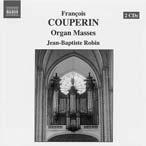 Martin Wolf
Martin Wolf
COUPERIN ORGAN MASSES
Jean-Baptiste Robin plays the organ of Poitiers Cathedral.
CD1 Messe à l’usage ordinaire des paroisses, pour les fêtes solennelles.
CD 2 Messe proper pour les couvents de Religieux, et Religieuses.
NAXOS 8.557741-42 TT 94:04
Having survived over two hundred years of turbulent French history more or less unscathed, the 1790 François-Henri Clicquot organ of Poitiers Cathedral rejoices in being one of the most authentic, unmolested French classical organs in existence. And what an organ! Every stop is so individual yet blends so well with its neighbours, so much so that the dialogues, duos and trios become lively conversations, the récits engaging monologues. But nothing, nothing rivals the raw power of the reed chorus, an untamed, rugged block of sound which punches its way down the nave and will raise every hair and possibly render you temporarily incapable of speech. Couperin’s organ masses are perfect for the part and Jean-Baptiste Robin, who became the cathedral’s organist at 23, really brings the music (and organ) alive.
Martin Wolf
THE ENGLISH CATHEDRAL SERIES VOLUME XII
Andrew Bryden plays Ripon Cathedral organ. Hollins Concert Overture in F minor; Darke Retrospection; Harris Sonata in A minor; Ireland Elegiac Romance; Jackson Impromptu; Butler Capriccietto; Willan Introduction, Passacaglia and Fugue.
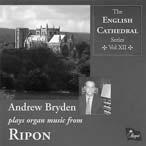
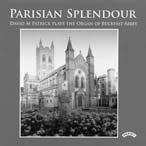

REGENT REGCD 224 TT 74:16
For the twelfth issue in this series, Andrew Bryden (Director of Music at Ripon since 2003 and Assistant Organist for five years prior to that) puts the Cathedral’s Lewis / Harrison organ through its paces with a programme of English music ideally suited to this versatile instrument, which started its current life in 1878. With one exception, all of the composers represented here were born within 18 years of the installation of the organ, which despite its relatively modest size (59 speaking stops) proves to be equal to the task of providing the wide range of colour
Cathedral Music 63
3302 Cathedral Music MAY 06 v2 22/5/06 16:13 Page 63
required in music of the period. The programme opens with Hollins’s F minor Concert Overture, which will be instantly recognisable as a work by this Yorkshireman to those who know his other works. The piece consists of two main themes, one of which is dynamic and lively, whilst the other is gentle and lugubrious. Andrew Bryden allows the just right amount of sentimentality to creep into the second theme, whilst creating a great sense of excitement whenever the first theme is heard. Darke’s beautiful miniature Retrospection is played with a pleasing sense of movement, but including plenty of rubato and much use of the colours of the organ. The Harris Sonata was not a work known to me before hearing it here and did not immediately impress. The final movement is most memorable with a restless opening theme followed by a calmer section, which includes musical quotes from the opening part of the first movement. The final section grows in tension and excitement until an arresting chord precedes a short coda, which ends the work. Ireland’s Elegiac Romance is an heartfelt work, which receives a duly emotional performance. Although played significantly slower than Ireland’s metronome marking, there is no feeling of dreariness and in the generous Ripon acoustic (of which Gary Cole has captured just the right amount in this recording) the tempi seem welljudged. Francis Jackson’s Impromptu for Edward Bairstow was written whilst the composer was stationed in Italy during the Second World War to celebrate Bairstow’s 70th birthday in 1944. Peter Beaven’s informative sleeve notes tell us that as well as being Dr Jackson’s first published work it is also his favourite piece he composed for the organ. The piece starts softly with a tune, which is reminiscent of Bairstow’s own writing, before a more lively section more in keeping with the composer’s ‘usual’ style. Leonard Butler’s Capriccietto is a delightful ‘lollipop’, which could easily have been written by Hollins and features the Clarinet stop. The final work on the disc is Healey Willan’s Introduction, Passacaglia and Fugue. Andrew Bryden and the Ripon organ do full justice to this monumental and thrilling work - even managing to find some colours on the organ, which have not appeared elsewhere on the disc. This performance has a real sense of occasion and in itself is reason enough to recommend this disc.
Timothy Rogerson
JOHN SCOTT
John Scott plays the Buzard Organ in All Saints

Episcopal Church, Atlanta, Georgia.
Cocker Tuba Tune; Wesley Larghetto in F sharp minor; Berveiller Mouvement; Parry Fantasia and Fugue in G; Schumann Four Sketches; Alain Intermezzo; Grainger Handel in the Strand; Bonnet Variations de Concert;
Bovet Le Bolero du divin Mozart; Howells Psalm
Prelude Set 2 No 1 ‘De Profundis’; Brahms O welt ich muss dich lessen; Edmundson VonHimmel hoch
PRIORY PRCD 824 TT 71:39
‘Buzard organs are inspired by the great English organs of Willis, Lewis and Hill, and the French organs of Cavaillé-Coll.’ So reads the sleeve note, adding that these individual styles ‘have been filtered (…) to arrive at an individual and personal tonal style.’ This is reflected in the uniquely Romantic/modern programme (for which no information is provided), which contains some relatively obscure but attractive entities such as Edmundson’s Von Himmel hoch, Berveiller’s Mouvement and Bovet’s parodic Le Bolero du divin Mozart. Very enjoyable.
Martin Wolf
THE GREAT ORGANS OF FIRST CHURCH VOL 2
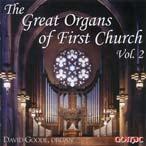

David Goode plays the world’s largest church organ.
Wagner Overture to Die Meistersinger; Howells Master Tallis’s Testament; Copland Passacaglia; Buxtehude
Fantasia on ‘Wie schõn leuchtet der Morgenstern’; de Grigny Two pieces from Livre d’Orgue; Frescobaldi Two pieces from Fiori Musicali; Purvis Greensleves; Bach Chorale Prelude on ‘Vater unser im Himmelreich’; Thalben-Ball Elegy; Goode Concert Fantasy on Themes by Gershwin GOTHIC G49223 TT 78:52
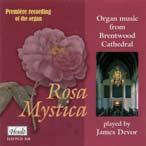
A map and compass might come in handy for finding one’s way around the specification of this vast organ, although strictly speaking it actually consists of four organs (hence the CD’s title) distributed around various parts of the church. It is thus unique not only in being the world’s largest organ but also in having such an unusual ‘surround sound’ set-up. The programme
exploits this set-up, with only 5 of the 14 tracks played on full organ, i.e. all four organs together. David Goode, recently appointed organist-inresidence at the church, has no problem navigating his way around the instrument, putting the organ through its paces to great effect. A highlight of the disc has to be his concluding virtuosic Concert Fantasy on Themes by Gershwin, a playful homage incorporating I got rhythm, Summertime and Nice work if you get it which will leave you grinning from ear to ear.
Martin Wolf
SOUNDS FROM THE HEART
Peter St John Stokes plays the Copeman Hart organ of St Silas Church, Kentish Town. Dandrieu Offertoire in D minor; Bach Toccata and Fugue in D minor; Jesu Joy of Man’s Desiring; Beauvarlet-Charpentier Noël dans le gout de la symphonie-concertante; Boëly Offertoire pour la messe du jeudi saint; Offertoire pour le jour de Pâques; Liszt Fantasia and Fugue on BACH; Dubois Interlude; Marcietta; Franck Choral III in A minor.
LAMMAS LAMM 185D TT 70:44
The choice of instrument – an electronic (cough!) organ by Copeman Hart – will surprise many. And yet whilst staunchly ‘pro-pipe’, I confess to having felt faintly intrigued about hearing how an electronic organ would fare on disc. There’s little doubt that the St Silas instrument is impressive for what it is, and it clearly illustrates just how far electronic organs have come in the past three decades as imitators of the real thing. Equally, however, it confirmed my belief that there’s no substitute for the real thing, especially on a recording. And there, alas, any interest in this disc must end, because Mr St John Stokes’s erratic playing falls way short of the standard required for a commercial recording. As with much of the rest of the programme, notably the more adventurous works, the Toccata and Fugue in D minor bears the scars of rhythmic instability, unnatural changes in tempo, clipped phrasing and wrong notes (plus some extra notes unknown to the composer) of teeth-clenching proportions. Nul points to Lammas!
Martin Wolf
NICHOLAS ORGELBÜCHLEINJACKSON’S
Nicholas Jackson plays the Cavaillé-Coll organ of Saint-Antoine des Quinze-Vingts, Paris. Trumpet: Eric Lapparra de Salguez. Horn: Pierre-Yves Bens. Concert Variations on Praise to the Lord the Almighty; Good King Wenceslas; Victimae paschali; Fantasias and interludes on hymns and carols for all seasons.
HERALD HAVPCD 293 TT 69:30
Like its more famous namesake by J.S. Bach, Sir Nicholas Jackson’s Orgelbüchlein is a sizeable collection of compositions based on hymn tunes and carols. Most are for organ solo, the rest include trumpet and horn, but all are highly imaginative creations with a musical language mainly in the Dupré/Duruflé vein, although there are also elements of jazz (the opening to the variations on Good King Wenceslas) and a couple of very pleasant Bachchorale pastiches (The Lord is risen indeed and Jesu, grant me this, I pray) if you can shut out the organ’s rather noisy action throughout much of the disc. This will appeal to a great many people.
 Martin Wolf
Martin Wolf
ROSA MYSTICA
Organ music from Brentwood Cathedral played by James Devor.
Widor Finale (Symphonie VI); Langlais Rosa mystica; Frescobaldi Aria ditto Balletto; Howells Psalm Prelude on Psalm 139; Bach Sinfonia from Cantata No 29; Prelude and Fugue in C minor; Barber Adagio for Strings; Clarke Trumpet Voluntary; Bovet Toccata Planyavska; Boëllmann Prière à Notre-Dame; Wright O Lamb of God, I Come; Messiaen Dieu parmi nous.
HERALD HAVPCS 308 TT 69:14
These are polished performances showing solid technique (listen to the Widor, Bovet and Messiaen items) and mature musical insight (the Howells is beautifully done), especially in the Romantic pieces. There’s a good variety of music here: Barber’s Adagio for Strings followed by a rather grandiose reading of Clarke’s Trumpet Voluntary followed by Guy Bovet’s manic Toccata Planyavska should give some idea of this eclectic mix. I suspect (and hope) we’ll be hearing a lot more from James Devor in the future.
Martin Wolf
Cathedral Music 64
3302 Cathedral Music MAY 06 v2 22/5/06 16:13 Page 64
HANDEL: ORGAN CONCERTOS
Paul Nicholson on the organ in St Lawrence, Whitchurch, London.
The Brandenburg Consort. Director: Roy Goodman. Harp: Frances Kelly in Op4 No6.
HYPERION 2 CDs CDD22052 TT 153:58
This is a fine new recording of the Handel Organ Concertos, performed on an instrument known to Handel, namely that in the church of St Lawrence, Whitchurch, north London. Paul Nicholson’s performances are musical, polished and wonderfully played and enjoyable to hear. The contributing strings from Roy Goodman’s Brandenburg Consort add much to the performance with their radiant and accurate playing. Don’t be surprised as I was when listening to Op4 No 4 (I thought I changed the CD)because Clare College Choir makes the briefest of appearances at the end of this Concerto by singing the Choral Alleluia from Athalia, which was added by Handel in 1737. Included in this set is the Harp concerto in B flat Op 4 No 6 with stylish but serene playing from Frances Kelly on the harp. A good buy. Patrick Mayhew.
FIAT LUX
Clive Driskill-Smith plays the Rieger organ of Christ Church Cathedral, Oxford
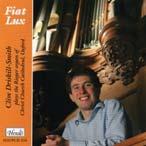
Dubois Fiat Lux; Dupré Variations sur un Noël; KargElert Valse mignonne; Hindemith Sonata No 2; Duruflé Scherzo; Mozart Ein Orgelstück fur ein Uhr; Alain Intermezzo; Reger Fantasie über den Choral ‘Wachet auf, rufst uns die Stimme’ HERALD HAVPCD 310 TT 75:40
The playing on this disc by prize-winning organist Clive Driskill-Smith is technically assured and, at times, dazzling, but I found the programme order decidedly incongruous: hearing Karg-Elert’s Valse Mignonne sandwiched between Dupré’s colourful Noël Variations and the austerity of Hindemith’s Second Sonata, felt like eating candyfloss between courses at a Michelin-starred restaurant! That aside, (after all, one can always programme a sensible order into the CD player) this is accomplished playing and there are some really exquisite moments, such as the delightfully flighty Scherzo Op. 2 by Duruflé. The 1978-9 Rieger organ of Christ Church, Oxford copes well with the repertoire on the whole, but I did find the big climaxes slightly underwhelming (for example in Reger’s monumental Fantasie ‘Wachet auf’). This is an excellent performance of some challenging repertoire and, on the whole, very satisfying – I just think the order of tracks was a mistake.
Julian Thomas
THE STORM
Kevin Bowyer plays Blackburn Cathedral Organ. Lemmens Grand Fantasia in E minor (The Storm); Neukomm Grand Dramatic Fantasia; Lefébure-Wely Scène Pastorale; Hudson Storm Fantasia (Life and death at St Bernard’s Hospice); Sellars An Ocean Tempest; Liszt St Francis of Paola walks upon the waters; Clegg A Church Service interrupted by a thunderstorm.

REGENT REGCD217 TT 79:55
Ever since man produced large wind-powered instruments, the temptation must have existed to use them for extra-musical effects. The Romans are said to have used the hydraulus in the arena to drown the cries of the wounded; sixteenth and seventeenth century Spanish composers used their mighty instruments with their array of powerful reeds to recreate battles and eighteenth century Parisian organists vied with one another to portray battles, hunts, firework displays and even the Last Judgement. On this exciting CD Kevin Bowyer puts his formidable technical and musical gifts at the service of a number of storm pieces from the famous Grand Fantasia of Lemmens to the dramatically naïve Church Music interrupted by a thunderstorm. Such pieces were popular features of recitals in the days of the Victorian ‘orchestral’ organ.
Kevin Bowyer is well served by David Wood’s excellent rebuild of the Blackburn Cathedral organ (2002) with its wide range of colours. An amazing number of effects are produced including some (nightingale, for example) which do not seem to be listed on the specification. The cathedral acoustic is captured with the ambience and the notorious Blackburn echo pretty well balanced, even though at times the build-up of sound is so tremendous that one fears for the cathedral’s fabric. This is a most entertaining programme with some delightful humorous touches and virtuoso organ playing of high quality.
Alan Spedding
BACH: PIANO TRANSCRIPTIONS - 5
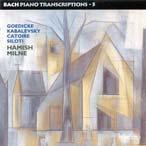
Prelude & Fugue in G; Prelude in b; Prelude Cantata No 35; Prelude & Fugue in d; Air Orchestral Suite No 3; Adagio Sonata for violin and keyboard in f; Fugue in c; Andante Sonata for solo violin in a; Passacaglia in c; Siciliano Sonata for flute and keyboard in E flat; Toccata & Fugue in d (‘Dorian’)
Piano: Hamish Milne. HYPERION CDA67506 TT 72:03
This disc demonstrates familiar works by Bach bathed in a warm and fresh light. It is entirely appropriate that Bach the arranger, should have his own music arranged by others and thus Hamish Milne presents fair grounds for enjoyment in a variety of transcriptions, from a variety of sources. There are also four other discs preceding this one in the series recorded by Nicolai Demidenco (1&2), Piers Lane (3) and Martin Roscoe (4).
Stephen Power
BACH KEYBOARD CONCERTOS.
Keyboard Concertos Nos 1 – 7; Triple Concerto in A minor; Brandenburg Concerto No 5. Angela Hewitt. Australian Chamber Orchestra. Richard Tognetti


HYPERION CDA67607/82 CDs TT 152:27
Not normally the subject of reviews in this magazine the Angela Hewitt Bach Concertos deserve to be given space here. After all, Bach plays such an important role within music and especially compositions for the church that to widen one’s horizons with a disc such as this will help us to appreciate the great man even more. Hewitt brings to life the composer and the music so well; take as your starting point the wonderful Concerto No 3 in D my favourite. This CD is must as it demonstrates the brilliance of Hewitt’s technical capabilities and her charming playing. Her success comes from the shaping of each Concerto, these are rhythmical, warm interpretations shimmering with boundless energy and skilled virtuosity. Each Concerto’s characteristic is tenderly brought out and the dialogue with the orchestra is a true partnership. If you are looking to branch out then start with these discs.
Ian Morgan
The New English Hymnal
Main features include: 500 of the best hymns from English Hymnal, English Praise and from other sources.
Further 42 hymns covering Advent, Holy Week and major feasts Proper hymns,including new ones, for all red-letter Saints Days. Office hymns for the Christian year. Enlarged Eucharistic Section. Selection of Responsorial psalms. Current printings include useful indexes together with an Appendix of Hymns suggested for Sundays and some Holy Days according to the Common Worship Lectionary Available in the 4 editions,all hardback,bound in green cloth.
New English Praise,a supplement to New English Hymnal containing approximately 100 items is scheduled for publication in late Spring 2006.Please ask for further details.
Full Music & Words
0-907547-51-6 · 1312pp · 210x140mm · Ref.No 54
Usual Price £20.00
With 25% Grant*£15.00
Melody & Words
1-85311-097-3 · 920pp · 171x114mm Ref.No 52
Usual Price £11.50
With 25% Grant*£8.62
Words Only
0-907547-49-4 · 616pp 157x105mm · Ref.No 50
Usual Price £8.50
With 25% Grant*£6.38
Large Print Words
1-85311-002-7 · 544pp 240x160mm · Ref.No 56
Usual Price £17.50
With 25% Grant*£13.13
To order/request a grant application form:Tel:01603 612914
Fax:01603 624483 E-mail:orders@scm-canterburypress.co.uk
SCM-Canterbury Press Ltd,St Mary’s Works,St Mary’s Plain,Norwich NR3 3BH.
*To qualify for a GRANT OF 25% an order for a minimum of 20 COPIES, in any combination,of The New English Hymnal hymn books,together with a completed grant application form (available on request from SCM-Canterbury Press Ltd) must be received.CMNEH06

Cathedral Music 65
25%Grant* Available
3302 Cathedral Music MAY 06 v2 22/5/06 16:13 Page 65
Cathedral MUSIC Cathedral MUSIC
Allegro Music..................................................................52
Carlisle International Summer Festival........................57
Canterbury Cathedral Choir..........................................49
Christ Church Cathedral School..................................55
City of London Festival..................................................67
Common Praise..............................................................42
Edington Festival............................................................56
George Sixsmith Organs................................................32
Harrison & Harrison......................................................49
Herald..............................................................................62
Hereford Three Choirs Festival ....................................66
Hexham Abbey Festival..................................................23
International Church Music Festival............................61
King’s School Gloucester..............................................67
Lammas..........................................................................13
LCM Examinations........................................................38
Makin Organs ..................................................................2
Hexham Abbey FESTIVAL
September 15th – 23rd,2006
Bach B Minor Mass Antiphon
Jazz
Naga Mas Gamelan
Candlelight Concert
www.hexamabbey.org.uk/festival
Advertisers and Supporters
Musica Deo Sacra Festival..............................................21
New English Hymnal......................................................55
New English Praise........................................................65
Oxford University Press ................................................47
Regent Records..............................................................67
Royal College of Organists............................................15
Royal School of Church Music........................................9
Salisbury Cathedral Voice Trials....................................57
St David’s Cathedral Festival ........................................66

St George’s School, Windsor..........................................38
St John’s College Choir..................................................49
Southern Cathedral Festival..........................................57
The Incorporated Association of Organists..................57
Three Choirs Festival......................................................66
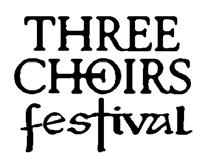
Viscount Organs ............................................................26
Westminster Abbey Choir..............................................32
St Davids Cathedral Festival
May 27 – June 4, 2006
Stephen Cleobury • Opus Anglicanum
The Swingle Singers • La Serenissima
BBC National Orchestra of Wales
David Rees-Williams Trio
Festival Chorus and Orchestra
St Davids Cathedral Choir • Timothy Noon
Further details from: www.stdavidscathedral.org.uk
E-mail: festival@tretio.net
Tel: 01437 721682
2006 Gatherings
Fri 16 Sun 18June
National Gathering at Durham, Newcastle and Hexham, with AGM on Saturday 17 June.
Fri 28 Sept - 1October
National gathering at Gloucester Cathedral including Tewkesbury Abbey.
August 4 – 11,2006
Choral and Orchestral Concerts Including works by Elgar,Finzi,Mozart,Schumann, Mahler,Shostakovich & Walton
• Brodsky Quartet
• Corelli Orchestra
• National Youth Orchestra of Wales
• Phantasm
• The Philharmonia
Cathedral Music 66
• Orchestra of the Swan
• Mellstock Band
• Geraint Bowen
• Richard Hickox
• James MacMillan
Festival Office 01432 275932
info.hereford@3choirs.org www.3choirs.org
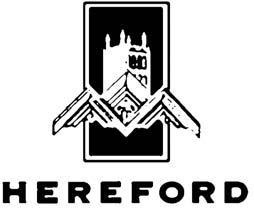
2007 Gatherings
Fri 2 - Sun 4 Mar
Oxford Christ Church, Magdalen and New Colleges
NATIONAL GATHERINGS
National Gatherings are arranged by the Secretary for National Gatherings, Peter Smith. Details are sent to those members who have asked for their names to be included on the National Gatherings Mailing List.
Please send a stamped addressed envelope when requesting information about any Gathering.
Supported by the Arts Council of Wales & The Welsh Assembly Government
3302 Cathedral Music MAY 06 v2 22/5/06 16:13 Page 66
City of LondonFestival at St.Paul’s Cathedral
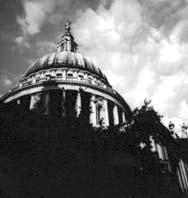
Tuesday 27 June 8.00pm
BRAHMS A GERMAN REQUIEM
The London Symphony Orchestra and Chorus

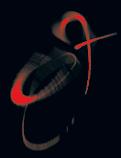
Tadaaki Otaka conductor
Tickets £10 - £40
Tuesday 4 July 8.00pm
DUKE ELLINGTON
THE SACRED CONCERT
Stan Tracey Orchestra
St Paul’s Cathedral Consort
Stan Tracey director
Tickets £10 - £35
Thursday 13 July 8.00pm
FAURÉ REQUIEM
BBC Singers Orchestra of the Age of Enlightenment
Marin Alsop conductor
Tickets £10 - £35
To book tickets visit:www.colf.org (reduced booking fee online) or call the Barbican Box Office on 0845 120 7502 (booking fee)

Recent Releases from Regent
AMAJORNEWRECORDING ON A TRULY GREAT EUROPEAN ORGAN
JSBACH
The ‘Eighteen’ Chorale Preludes, BWV 651–668 Canonic Variations on Vom Himmel hoch, BWV 769a
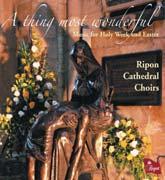
The ‘Schübler’ Chorale Preludes, BWV 645–650
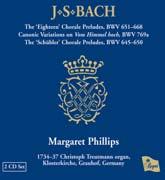
Played by Margaret Phillips
1734–37 Christoph Treutmann organ, Klosterkirche, Grauhof, Germany
The first recording by a British artist and recording company on one of the most important eighteenth-century organs in Europe. This large 3 manual instrument contains more original pipework than virtually any other organ of a similar size from the period and is set in a glorious acoustic A two disc set at special price REGCD232
The latest release in ✣ The ENGLISH CATHEDRAL Series ✣
VOLUME XIII - ROCHESTER
played by Roger Sayer

Virtuoso showpieces including a new recording of Whitlock’s Plymouth Suite, played on Whitlock’s own organ and the world première recording of the brilliant jazz-inspired postlude on Adeste Fideles Exite Fideles by British composer Paul Ayres
A MALVERN MIXTURE
The first recording of the new Nicholson organ in Malvern Priory, played by Andrew Wilson

A brilliantly entertaining concert on this stunning instrument!
Overture to the 'Occasional Oratorio' George Frideric Handelarr. Andrew Wilson, Andantino in D flat Edwin Lemare, Plymouth Suite Percy Whitlock, Suite from ‘Carmen’ Georges Bizetarr. Edwin Lemare, Toccata Nuptiale Christopher Maxim, Prelude, Fugue and Chaconne in C, BuxWV137 Dietrich Buxtehude, Prelude on ‘Be thou my vision’ Zsolt Gardonyi, Hornpipe Humoresque Noel Rawsthorne, Chanson de Nuit, Op.15 No.1 Edward Elgar arr. Herbert Brewer, Concert Overture in C major Alfred Hollins REGCD233
Organ May 2006
Lift up your heads William Mathias, Tantum Ergo Déodat de Séverac, Ubi caritas Maurice Duruflé , It is a thing most wonderful Philip Moore, Civitas sancti tui William Byrd, O vos omnes Pablo Casals, The Lamentation Edward Bairstow, Crucifixus pro nobis Lotti, Easter (from Five Mystical Songs) Vaughan Williams, Blessed be the God and Father Samuel Sebastian Wesley, Now the green blade riseth Old French melody, arr. Andrew Bryden, An Easter Sequence Kenneth Leighton REGCD225
Cathedral Music 67
Available from all good classical record shops or direct from REGENTRECORDS PO Box528, Wolverhampton, WV3 9YW Tel: 01902 424377, Fax: 01902 717661 E-mail: info@regentrecords.com Web: www.regentrecords.com Cathedral/church shops please order direct from Regent Retail distribution byRSK Entertainment Ltd, Tel: 01488 608900,info@rskentertainment.co.uk A thing most wonderful Music for Holy Week and Easter Ripon Cathedral Choirs Directed by Andrew Bryden, Thomas Leech – Organ “ The singing of the Ripon Cathedral choirs is fine throughout” Choir &
3302 Cathedral Music MAY 06 v2 22/5/06 16:13 Page 67
Plymouth Suite Percy Whitlock, Exite Fidelis Paul Ayres, Tanz-Toccata Anton Heiller, Prelude and Fugue in A flat major, Op 36, No 2 Marcel Dupré, Deuxième Symphonie, Op 26 Dupré, Suite, Op 5 Maurice Duruflé, REGCD227

3302 Cathedral Music MAY 06 cover 22/5/06 16:15 Page 1







































































































 Timothy Storey
Timothy Storey


 Andrew Palmer
Andrew Palmer

 Andrew Palmer
Andrew Palmer











 Martin Wolf
Martin Wolf







 Martin Wolf
Martin Wolf
















